What Does the Phrase “Slow Travel” Actually Mean?
By Sebastian Modak

This is part of a collection of stories on slow travel—read more here.
For about a decade, Paul Salopek, a Pulitzer-winning journalist, has been walking. By that, I don’t mean he’s consistently hit his 10,000 steps on daily constitutionals. In 2013, Salopek set out on the Out of Eden Walk , a project to follow the 80,000-year-old footsteps of our forebears, following the 24,000-mile route of human migration from Ethiopia to the southern tip of South America —all on foot just as they had done. Salopek’s still-unfolding, extraordinary journey might be considered the ultimate experiment in so-called “slow travel,” a term that is being used more and more frequently to describe everything from backcountry bikepacking expeditions to mega-ship cruises. But when I reach Salopek on Zoom to ask him about it, he is in the Chinese province of Shaanxi and is audibly confused about what the term even means. “There’s been no other way but ‘slow travel’ for 99 percent of our history,” he says. “I guess in today’s world to premise anything on going slowly is revolutionary.”
It’s hard to pinpoint its exact beginnings but the slow travel revolution—an intentional move towards more mindful, more environmentally responsible, less purely convenient modes of getting around—organically emerged from another revolution. In 1986, a journalist named Carlo Petrini, in the most Italian protest ever conducted, handed out bowls of penne pasta to passersby and demonstrators who yelled, “We don’t want fast food. We want slow food!” The target? A McDonald’s, the first in Italy , set to open at the foot of the Spanish Steps in Rome. The McDonald’s did indeed open, and is still there, but by actively resisting the very concept of fast food, Petrini started what became known as the slow food movement, a culinary practice that emphasizes natural ingredients, traditional cooking methods, and long, languorous meals where food is relished rather than treated as fuel.
If slow food is defined, at least partially, by what it’s not, then the same can be said for slow travel. Slow travel can be best understood as a collective reaction to our post-industrial obsession with convenience, where time, and using as little of it as possible, is the biggest priority in getting from point A to point B. Some have tried to give slow travel a more concrete definition. In 2010, for example, a decade before the coronavirus pandemic saw skyrocketing interest in trekking, cycling, and domestic trips, two tourism researchers out of the UK, Janet Dickinson and Les Lumsdown, wrote that slow travel was “an emerging conceptual framework which offers an alternative to air and car travel, where people travel to destinations more slowly overland, stay longer and travel less.” Seems simple enough. Take a train, a bike, kayak, or your own two feet instead of a plane and car and just like that, you’ve taken your vow of mindfulness; welcome to the church of slow travel?
Of course, like any trend that starts with a kind of radical thoughtfulness, the definition of slow travel gets slippery with the more questions you ask. What if, on that train ride, you do nothing but scroll on TikTok? What if the place and the people you really want to get to know and learn from are just too difficult to reach without getting on a plane, because of other obligations, money, or a disability? Does that disqualify you? Run a Google search of slow travel and you won’t need to scroll long before you’re accosted with shiny images of beautiful people on pristine beaches and “must-have” checklists for worthwhile “slow travel” experiences. What if you can’t afford the five-digit price tags associated with the two-week yacht trips, luxury train rides, and wilderness resorts that market themselves as the ultimate in slow travel indulgences?
What emerges then is a far more complex definition of what it means to travel slowly. Traveling slowly can mean exploring your own backyard, avoiding environmentally damaging transportation when possible, spending a lot of time in one place instead of a little time in many—but it also is an internal process. It means tamping down our own built-in, conditioned obsessions with time and allowing the world to move just a little slower so that we can actually notice it. Slow travel is a mindset: you don’t need three weeks of vacation to slow down. A day spent strolling through an unfamiliar neighborhood without a crammed to-do list or exploring a state park with nothing but a route map and a bag of snacks could fall under the umbrella of slow travel. It comes down to how you engage with the world as you move through it.
“It’s about taking the time to make a connection—to the land and each other,” says Chyanne Trenholm
“If slow travel is about stopping and taking the time to properly connect with a place and its people, then yes, it’s something I’m all for,” says Chyanne Trenholm, a member of the Homalco First Nation, and the assistant general manager of Vancouver Island-based Homalco Wildlife and Cultural Tours . The Indigenous-owned company organizes visits to local communities, and Bute Inlet wildlife excursions. Trenholm says the idea of taking it slow and being present has been ingrained in her culture as a steward of the land. “Slow tourism is not the term we’ve used much, because it’s not just how we think of our brand—it’s who we are,” she says. She feels a certain sense of responsibility in instilling that kind of thinking in visitors who might arrive looking to get that one shot of a grizzly bear with a fish in its mouth and then leave. “It’s about taking the time to make a connection—to the land and each other,” she says. “I think humans in general can learn a lot from the act of making those connections.”
Monisha Rajesh , the author of three books on long-distance train travel, thinks that moving slower gives our brains the time it needs to process our experiences. “On a plane, you lift out of one place and drop into the next without any awareness of the in-betweenness,” she says. “On a train, the journey starts the second you get on board. I don’t know who is going to enter my story and the surroundings are part of the adventure.” Instead of the time it takes to get from origin to destination being a kind of blank nothingness—a necessary, if somewhat annoying, component of travel—suddenly, it teems with possibility.
When people hear about long, slow journeys—a cross-country bike trip , a paddle down the Mississippi, a 10-year-and-counting walk in the footsteps of early Homo sapiens—the reaction is usually a mix of “you-did- what?” shock and “I-could-never” envy. It’s a strange reaction considering our history as a species. Salopek tells me that he’s noticed something almost primeval about entering a community that is not your own by foot. “They see you coming from a distance. By the time you walk up to them and say hello there’s this ritual of greeting that you’re both prepared for,” he says. “We’ve been walking into each other’s viewsheds for 300,000 years and that’s why it feels so good.”
By signing up you agree to our User Agreement (including the class action waiver and arbitration provisions ), our Privacy Policy & Cookie Statement and to receive marketing and account-related emails from Traveller. You can unsubscribe at any time. This site is protected by reCAPTCHA and the Google Privacy Policy and Terms of Service apply.


What is Slow Travel? Benefits and How To Be a Slow Traveller
We hear people say slow travel is better than fast tourism, but do you know what is slow travel?
Slow tourism has gained popularity due to its alignment with the changing values and priorities of modern travellers. Embarking on an immersive travel experience offers a more sustainable, flexible, and mindful approach to exploring the world.
So, let’s learn about authentic travel, the benefits of slow travel, and, practical tips on travelling slower.
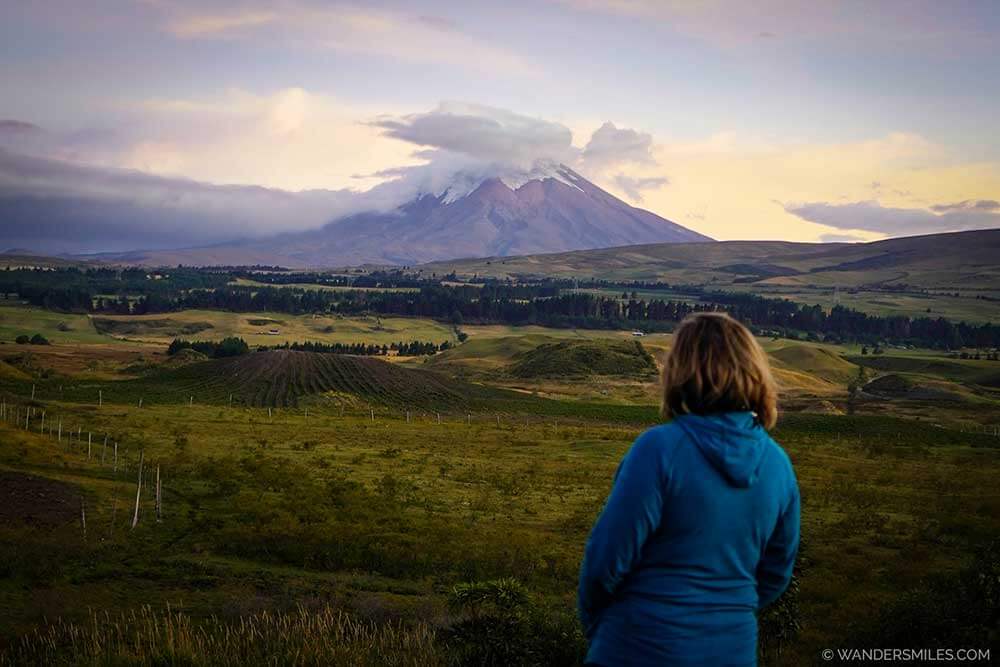
What is slow travel?
Slow travel is a deliberate, unhurried approach to exploring destinations, emphasising meaningful experiences, and cultural immersion.
Travelers stay longer in one place, support local economies , and seek sustainable, mindful journeys that promote a deeper connection with people and environments, in contrast to traditional, fast-paced tourism.
Why slow tourism is becoming more popular?
Slow tourism has seen a surge in popularity for several reasons, including:
Rise since COVID-19
The COVID-19 pandemic prompted a re-evaluation of travel practices. Travellers, concerned about the safety and eager to avoid crowded places, turned to slower, less hectic tourism. Many preferred remote and less touristy destinations, fostering the growth of slow tourism.
More people working remotely
The increase in remote work has freed people from the constraints of traditional office jobs, allowing for greater flexibility in travel. Slow tourism complements this lifestyle, enabling travellers to work while exploring new places at a more relaxed pace.
Increased interest in sustainable living
As people become more environmentally conscious, they are drawn to travel options that align with sustainable living principles. Slow tourism often involves eco-friendly practices, supporting local communities, and reducing the carbon footprint.
Self-care and well-being
The pandemic underscored the importance of mental and physical well-being. Slow tourism provides opportunities for relaxation, mindfulness, and disconnecting from the stresses of daily life, contributing to personal self-care and rejuvenation.
What are the benefits of slow travel?
Slow travel reduces carbon footprint.
Staying longer in one place reduces the need for frequent travel , and supporting local businesses promotes sustainable practices. This approach aligns with environmental conservation efforts, mitigating the impact of traditional travel on the planet.
Fast travel with short-haul flights causes more emissions than public transport . Travelling slower allows time to prioritise more eco-friendly transportation options , such as trains or bicycles. For travellers who do not have the luxury of slow travel, it is still worth taking on board the more responsible and eco-friendly ways to travel .
Slow travel saves money
Many hotels or guest houses will offer better deals on accommodation for longer stays to guarantee their income, and to compete with the AirBnB market.
Not being in a hurry to get from A to B will help cut your transport costs . Having the luxury of hanging around until the cheap flight comes up or the next public bus goes really does help the wallet.
Slow travel helps disconnect
Slow tourism enables travellers to cut off from their busy lifestyles . Fast travel can be stressful in itself, rushing out of the office to your destination, squeezing in some downtime, and heading back home. Slow travel helps us break free from the daily grind.
Deep travel gives us time to truly connect with other travellers . Meeting new like-minded people is part of the adventure, getting to know their story, and even planning part of your journey together if you are heading in the same direction.
Slow travel helps travellers to cut off from digital overload . Whilst it is easy to get targeted with ‘bad news’ on online media, I found it good for the soul to remove myself from the daily negative news on TV for a longer period.
Slow travel helps burnout. The increase in wellness retreats and digital detox experiences demonstrates how we are crying out to disconnect to give our minds and bodies a chance to heal and reenergise. Whether you decide to spend time on a retreat or just time out of normal life, this truly helps with general weariness.
Slow travel alleviates travel fatigue by emphasising leisurely exploration over rushed itineraries. Travelers have time for rest, reflection, and acclimatisation, reducing the stress and exhaustion associated with rapid travel. The relaxed pace and mindful experiences of slow travel contribute to overall well-being and a more fulfilling travel experience.

Slow travel is more immersive
Slow travel encourages engaging with the local community , fostering deeper cultural insights. Travelers learn about the lives of residents, their traditions, and daily routines. Getting involved in cultural festivals allows for first-hand experiences of local customs, traditions, and celebrations, contributing to a richer and more immersive travel experience.
Learning the regional language during slow travel promotes cultural understanding and meaningful interactions. Many backpackers will start their Latino trip with time in a Spanish School or living with a host family as I did in the Galapagos.
Engaging in volunteering while slow traveling enhances the journey’s meaningfulness. It allows travelers to give back to the community they visit, contribute positively, and create lasting impacts. This hands-on involvement provides a deeper understanding of local needs, fosters connections, and adds purpose to the travel experience, making it even more enriching and rewarding.
Slow travel is adventurous
Time gives us to travel to off-the-beaten-path destinations much easier. Exploring the lesser-visited places where transport is limited, or primitive, such as heading into the Darien jungle in Panama, or being about to journey down the Colombian Amazon instead of day trips from Leticia . Getting away from the obvious places to visit which suffer from mass tourism, opens our eyes to new cultures and intrepid experiences.

Tips on how to be a slow travel ler
Stay longer in each place.
Extend your stay to immerse yourself in the culture of the destination. It’s hard to get the feel of a place when you are passing through.
Build in stop days. It is easy to get caught up in seeing ‘everything’. When creating your itinerary on your slow adventure, plan some down days to sit back, and avoid travel fatigue.
Be flexible
Overplanning can restrict opportunities that may arise along the way. There is always some random offer by a group of travellers that has a spare place for something exciting, or a festival you didn’t know was happening. Have a loose list of what you want to see in a destination but leave a bit of wiggle room for the unexpected.
Seek local recommendations
Don’t pre-book your trips with bigger online companies. Ask around when you arrive at a destination means the money is going directly to the families
Local people know the hidden gems to discover off-the-beaten-track authentic experiences. Make sure you ask more than one person too, each local will have different insider tips.
Eat like a local to get the best culinary delights possible. Find out where they eat, and what traditional dishes you should try.
Shop at local markets to support the community. In some countries such as Ecuador, locals would come down from the highlands with their home-grown produce. Ask to try their r egional fruits , and buy your favourites.
Buy local artisan products. Ask locally where the best market is to buy the ‘genuine’ handicrafts. For example, in San Cristobal de las Casas , I was made aware of which streets have imported cheaper products taking away from the real artisans of the community.
Stay at locally-owned guesthouses or homestays to foster cultural exchange and support local economies. I have stayed in many guesthouses on my travels that offer more authentic experiences with wonderful characters who know the area well.
Spread the spend
Explore lesser-visited areas to spread the economic impact whilst uncovering hidden gems.
Travel at off-peak times brings money to communities and allows you to stay longer as the cost per night will be more favourable.
Be informed of the transport options
Whilst slow travel means you are less concerned about time, it is best to familiarise yourself with the travel options, and factor in these considerations;
- If you have landed in a remote location, local buses or transport may only go on certain days .
- If you want a little comfort, sometimes shuttles can get booked up .
- Depending on your country, buses and local transport can often take longer so if you are booked for a tour or hotel in the next destination
- You may wish to avoid travelling at night for safety reasons so best to plan your route ahead of time.
Prepare for border crossings
Border crossing experiences can vary widely between countries and regions, so thorough research and preparation are crucial for a smooth and hassle-free transition from one country to another. Here are some essential steps to consider:
Research and Documentation: Understand the visa and entry requirements for both countries.
- Understand the visa and entry requirements for both countries. Ensure you have the necessary visas, passports, and any required permits.
- Check visa validity and make copies of important documents.
- Keep track of entry and exit stamps or documents provided by border officials for visa extension or exit.
- If driving, carry your vehicle’s registration, insurance, and any required permits.
- Check if vaccinations or health certificates are required for entry. Carry necessary medications and health insurance.
Currency and Money: Think about what you might need money for on each side.
- Exchange currency or carry enough local cash for border fees, transportation, and expenses upon entry.
- Change your currency to the local one for easier transactions on the other side. It’s worth chatting with other backpackers in the hostel who may want to sell some currency from their last country.
Transportation: Plan your route and transportation method, and consider the availability of local transport on the other side of the border. Ensure your vehicle meets local requirements if you’re driving.
Border Timings: Borders may have specific operating hours; confirm the opening and closing times and plan your arrival accordingly.
Communication: Have a working phone with local SIM cards or international roaming to stay connected in case of emergencies. I use Airalo for these situations to avoid me feeling vulnerable as a solo female traveller.
Local Language: Carry a phrasebook or language app to help with communication, as border officials may not always speak English.
Stay safe with slow travel
Ensure you have comprehensive travel insurance covering medical emergencies, trip interruption, and lost or stolen belongings. Here are my tried-and-tested travel insurance options.
- SafetyWing for Digital Nomads . Benefit from 24/7 assistance, comprehensive and medical cover including Covid-19. Buy insurance whilst you are travelling, with the option of global health insurance.
- Get 5% off your travel insurance with IATI . Discover a range of policies from basic to premium, and multi-country trips for up to 3 months. IATI will cover countries where the FCDO advises against all travel. All include 24/7 Emergency Travel, Crisis, and Medical Assistance services.
- Get 5% off your travel insurance with HeyMondo . Benefit from 24-hour medical assistance, 365 days a year with single, multi-trip, and long-stay insurance (up to 90 days), cover for COVID-19 and non-refundable expenses. The handy app makes this a simple process! They give a little back too by contributing to ‘Doctors Without Borders’.
PIN FOR YOUR SLOW TRAVEL ADVENTURE

Disclosure : This post contains affiliate links, which means I may receive a small commission if you click a link and purchase something that I’ve recommended. It comes at no cost to you. Thank you for your support.
I'm a content creator for She Wanders Miles ♡ Digital marketer, photographer, hiker, and nature lover ♡ Passion for slow, sustainable and responsible travel ♡ Join me in discovering our beautiful world across 7 continents.
Similar Posts

3 Days in St Petersburg Florida | Sustainable City Itinerary

Guide to Seal and Bird Watching on the Farne Islands

Visit Guano from Riobamba Ecuador | What to Do + Eat

Mexican Festivals 2024: Unmissable Mexico Traditional Holidays

13 Awesome Things To Do in Leon Nicaragua

How To Plan a Sustainable + Ethical African Safari
Absolutely 100% in agreement.
With each successive trip, my travel has become slower — and much more fulfilling and healing.
Totally agree. If you can afford the luxury of time to get to know a place better, slow travel becomes a more fulfilling experience.
Leave a Reply Cancel reply
Your email address will not be published. Required fields are marked *
- How It Works
- Marketplace

What is Slow Travel? And How to Do It
27. Oct. 2021
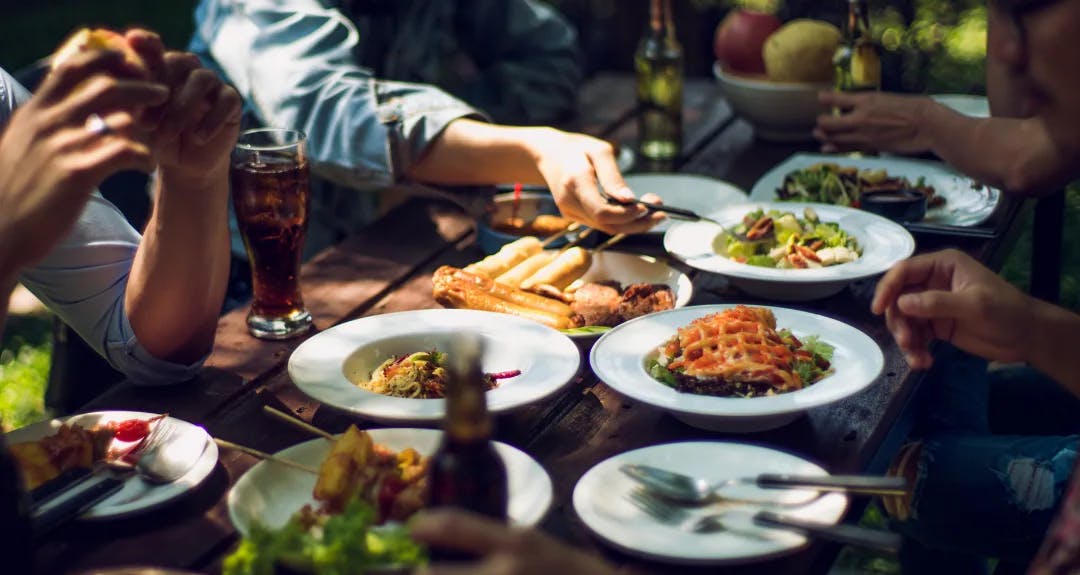
Is it just us, or is travel, and the desire to travel, everywhere? Travel has become a ubiquitous part of life for so many people, particularly now that technology has made it seem much more accessible. Take a look online. Instagram is full of travel-focused accounts showcasing the world’s most beautiful places. YouTube gives adrenaline-junkies a perfect platform to share their adventures. Airbnb provides stunning, photo-ready accommodations accessible at every price point. One study even showed that people were more likely to travel somewhere if they thought it would result in an increase in their social media following and engagement .
Seeing travel as a way to keep up with trends and become more popular online can actually stop you from experiencing the true benefits of getting out of your own bubble. The people who are leaving behind slow travel in favor of quick trips to stunning and inspiring places rack up more “likes”, so it can feel like we’re missing out if our own experiences don’t stack up against theirs.
Talk about FOMO.
If you find yourself making an extensive list of the places around the world that you want to check off of your bucket list, it may be time to take a step back and think about the reason behind your desire to travel. What do you want out of your travels? A fast and furious tour seeing ‘everything there is to see’, changing locations every 2-3 days? Or do you want to feel like a local, spending leisurely days strolling off the beaten path? If you’re craving a more authentic experience, one that leaves you with a feeling that you truly got to know the places, people and cultures that you’ve encountered on your travels it could be time to s l o w down. Learn more about this lifestyle by reading our guide on how to become a digital nomad .
Join a community of like-valued professionals on a work and travel program
What is Slow Travel?
Slow travel is an approach to travel that emphasizes connection: to local people, cultures, food and music. It relies on the idea that a trip is meant to educate and have an emotional impact, in the present moment and for the future, while remaining sustainable for local communities and the environment.
Heard of the slow food movement ? It originated in Italy in 1986 and aimed to preserve regional cuisine, local farming and traditional cooking methods through education of tourists and local residents. People were realizing that increased tourism was changing the way that people were eating, bringing larger, chain-based restaurants to major cities and taking away profits from family-owned establishments. The slow food movement worked to draw business back to traditional restaurants by touting the benefits of using regionally-sourced ingredients and stimulating local economies.
Different industry, same concept. Where travel is considered, a “slow” mindset urges tourists to take a step back from their to-do lists and Instagram-worthy photo ops and simply embrace what the local community has to offer. Instead of making sure you hit the “hot spots” outlined in a travel guide, focus on things that locals do everyday, things that excite them and give them joy. The impact that these connections have on you will last a lot longer than the memories that you have of racing from tourist attraction to tourist attraction.
This is not just a way to travel, it’s a mindset. It’s the outlook that the quality of your experience is more important than the quantity of your experiences when you travel.
You can wake up without plans for the day, unsure of the adventures that await you, but with the knowledge that what you’ll experience will mean so much more than a post to social media could convey.
Many travelers like to use the phrase “there’s always another trip” to convey that it’s impossible to see or do everything within a city in a short amount of time. It’s okay to save some of the sights for another visit. Instead of racing to do it all, indulge in experience-based activities.
When you visit a museum, give yourself enough time to fully immerse yourself in its artworks. Ponder the meaning behind a painting, or imagine the artist’s thoughts as he or she sculpted an object from clay or stone. Lose yourself in the meaning behind the duality of identity in Frida Kahlo’s self-portraits. Absorb and analyze the cultural impact of Salvador Dalí’s surrealist works. Remember: you don’t need to visit every wing or exhibit - you can always come back.
What other impactful local activities could you only experience if you were traveling slowly? Imagine learning how to create handmade beads from a local artisan, heading out with a resident fishing crew to reel in the day’s catch or getting to know the proper intricacies of drinking mate from a born-and-raised Argentinian.
You want to find something on this trip that leaves a fingerprint on your soul. Whether it be an evening spent wandering through a local park, a day pondering artistic intention in a museum or an afternoon white water rafting in the mountains, Whether it be an evening spent wandering through a local park, a day pondering artistic intention in a museum in Paris, an afternoon white water rafting in the mountains or going on a day trip from Mexico City , you’ll search for an adventure that will make you feel something.
Benefits of Slow Travel
Slow travel has many benefits for the traveler and the community that they’re visiting. In a way, it’s a return to the reasons that people had traveled in the past, for a cultural experience or a chance to lose themselves in a new place without the need to document every moment. Here are a few reasons you should consider travelling slowly:
Prevent “tourist burnout”
Have you ever left a trip more tired than when you arrived? That’s a little thing that travelers call “tourist burnout”. Trying to see or experience as many things as possible within a short period of time can be exhausting, and actually leave you with a negative view of your time on the road as a whole.
Ditch your typical frenetic mentality and slip into the pace of the local culture. Instead of thinking of your trip as a list of as a checklist, reframe it as an opportunity for growth, education and development . That to-do list that you created doesn’t need to be fully completed in order for your travels to have been successful. You can always head back to that destination later to see what you missed!
Traveling slowly can be a more inexpensive option than a typical tourist jaunt. Chain hotels and big-name restaurants tend to be pricier, and they don’t offer the type of charm or experience that a local spot would. Beyond the places that you’ll visit during the day, you can save money on the space where you’ll lay your head at night. Seeking out local Airbnb options or even homestay opportunities could be the key to a connected, life-changing experience on your next trip. If you have a kitchen in your accommodations, bonus! You won’t have to eat out quite so often (though you may be tempted to with all of that amazing cuisine), and you can find regional ingredients with which to make a culturally-relevant meal with your own two hands.
Make connections
We’re going to let you in on a secret: you won’t meet anyone who has the ability to change your life if your head is stuck inside of a tourist guide. Look up and look around. Learn a bit of the local language before you arrive so that you can engage in brief conversation with shop owners. A short conversation with a man working at a bakery could turn into an opportunity to learn how to make your own bread and, later, a traditional meal with his family where you can make even more connections. You never know what could happen when you take the time to slow down and get to know the people in the city that you’re traveling in.
Break out of your comfort zone
This way of travelling isn’t always simple, planned or easy. It requires a certain level of confidence that things will work out, or that you will be able to figure them out along the way. There will be moments during your experience that scare you, but these are the moments that can teach you a lesson that you could carry with you for the rest of your life. You may need to overcome language barriers and differences in cultural customs. These experiences will make you a more knowledgeable traveler and give you global perspective. Unlike a tourist experience, where translated tours abound and Yelp directs you to a place where you’d most likely enjoy the food, a more authentic experience could end up with you tasting a scorpion for the first time in China. You’ll also leave little to no negative impact on the local community because you won’t be working with exploitative tour operators. That’s what will make it one of your best trips ever.
How to Slow Travel
All it takes is a shift in perspective and mindset to get started. Here are a few tips for turning your next trip into a more authentic experience:
Live like a local
Talk to the people that you meet when you arrive at your destination and find out their favorite places to eat, relax, and learn. They know this city better than you do, so take their advice and run with it. That little hole-in-the-wall cantina might have the best guacamole that you’ve ever had.
Don’t try to see everything on your list or, better yet, don’t make a list at all
Leave a few things up to chance for once. When every minute is planned to a tee, you don’t leave room for surprise or happenstance. When you wake up on the first day of your travels, surrender to whatever the world has in store for you and live without fear of missing out.
Get ready to grow
Traveling is not the time to seek out the ordinary. Embrace the feelings of discomfort and use your trip as a chance to grow and learn more about how people around the world. Haggle in a local market. Say ‘yes’ to an opportunity that you never would in your normal life. Arrange a homestay where you’ll have to socialize with locals around the kitchen table on a daily basis. Whatever you do, don’t hold yourself back because of worry or discomfort.
Bring it on home
Finally, the idea of slow travel doesn’t have to just apply to ‘other’ places. Once you have grasped this mentality, implement it in a place that you are familiar with, perhaps even your hometown. Have you been too caught up in everyday tasks and responsibilities to notice the little things? Do you frequent new, hip restaurants or do you try out places that have been around for generations? Is it a priority for you to make new connections within this city, or are you content with the relationships that you already have?
Think of yourself as a tourist within your own city. This could be your chance to make your hometown feel new again, and create an emotional connection to this place that has felt too stagnant or comfortable for so long.
It may not be for everyone or all types of trips (we don’t blame you if you want to climb Machu Picchu or take a photo in front of the Eiffel Tower), but it is achievable. It doesn’t take any extra effort or resources to do, just a change of mindset and an openness to its possibilities.
With that subtle switch, travel again takes on a meaning. It can create memories that are more lasting than fleeting in an instantaneous world absorbed with the FOMO-inducing landscape of social media. As you consider your next travel experience, think about what you could take away from it if you implemented a slow travel mindset and remember, “there’s always another trip”.
Remote Year Trips You Might Be Interested In
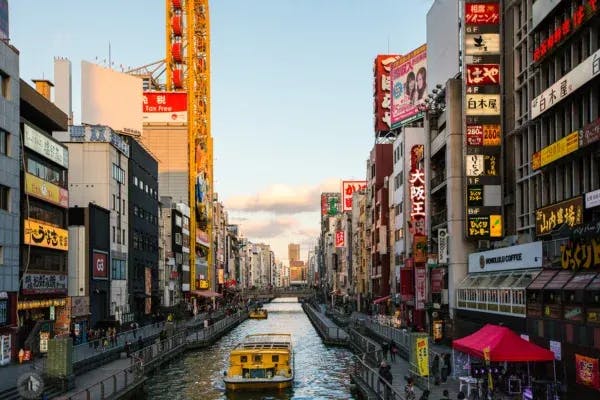
Application Only
Shirazi + Asia

Shirazi + Africa
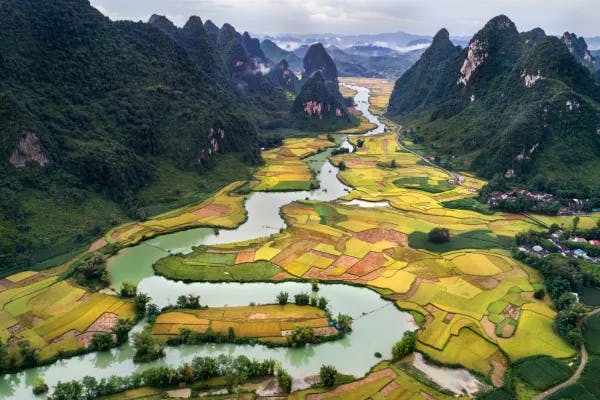
Keep me updated
- Skip to content
- Skip to footer
| The Art of Aliveness for All
What is Slow Travel? (+ 3 Slow Travel Myths)
By Kyle Kowalski · 14 Comments
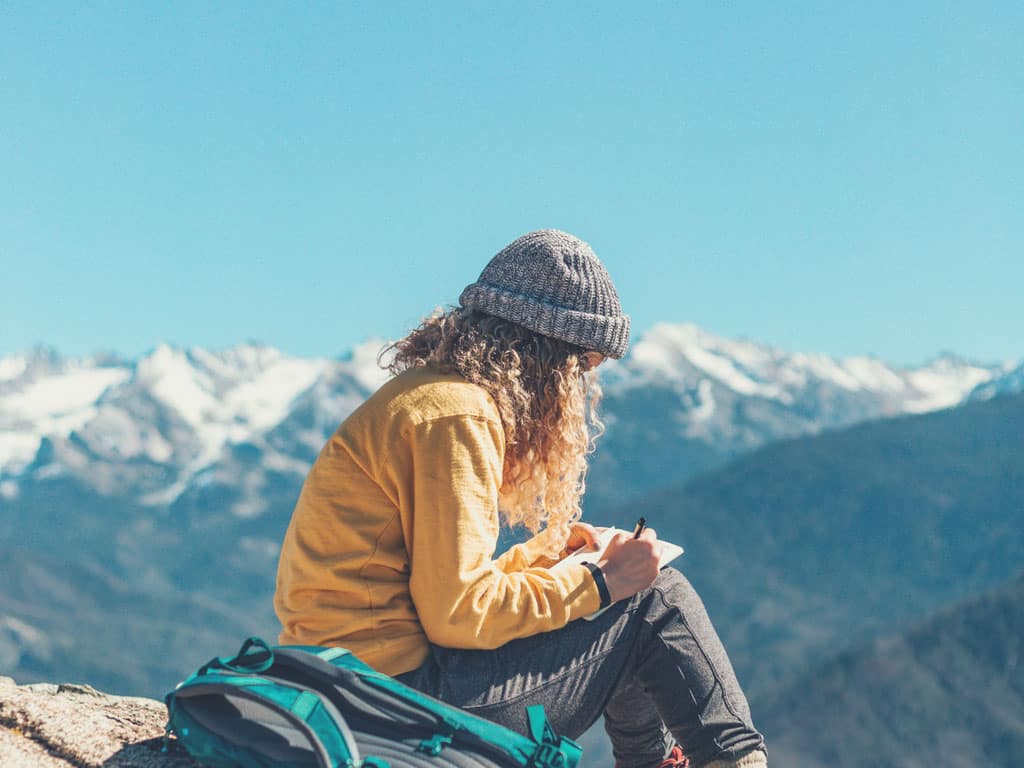
If you Google “slow travel,” you may be surprised by the lack of compelling information and resources you find. Unlike slow living, the slow movement , or slow food, slow travel doesn’t seem to be something as widely adopted or even discussed yet.
Traveling can be one of the most rewarding human experiences — opening your mind and worldview to new places, connecting with new people, and immersing yourself in local cultures. It can be meaningful, memorable, rejuvenating, and energizing.
Or, it can be the opposite. Slow travel ensures that you not only get the most benefit, but the local people and world around you do too. And, you won’t come back and need a “vacation from your vacation.”
So, what is it?
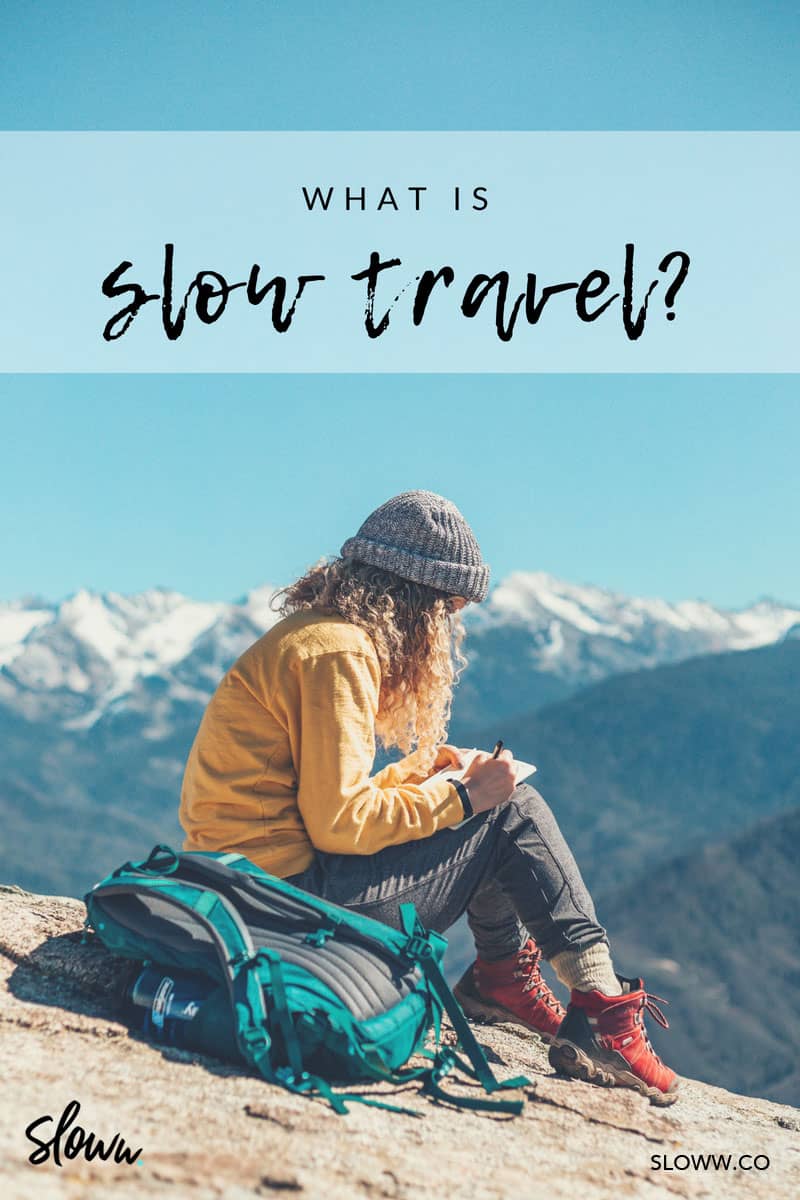
What is Slow Travel?
Maybe you’ve heard it described as mindful travel, sustainable tourism, or low-impact traveling. To me, slow travel is simply taking the principles of slow living and applying them to travel.
Slow travel is for you if you want a balanced itinerary where you can pace yourself and eliminate the stress of rushing around. It’s intentional and immersive — allowing you to go deeper on the things that matter most to you while traveling. It’s conscious and connected — connected with yourself, those around you, and the world.
Here were the best slow travel definitions I came across during my research:
Slow travel is a mindset that rejects traditional ideas of tourism and encourages you to soak in your environments and keep yourself open to new experiences. — The Art of Slow Travel¹ Slow travel is about the journey, not just the destination. Being excited about where you’re going, but being just as excited by how you get there, the people you meet, the sights you see and the experiences you have along the way. About slowing down to acknowledge that the journey you’re on allows, for the briefest moment, the chance to peer into someone else’s life and to share that moment in time with them. — The Travel Word² There’s an awful lot of clutter in modern life, and the only logical antidote to clutter is simplicity. Slow travel excels at simplicity. Freed from the pressure of ‘seeing everything’, you can actually relax a bit and enjoy your holiday. There’s a better chance you’ll meet local people, see a few sights off the traditional tourist path and get an appreciation for a different way of life (which some would argue is the whole point of travel in the first place). — Intrepid Travel³
3 Slow Travel Myths to Bust Before Your Next Trip
These slow travel myths are similar to slow living myths in general.
Myth #1: Slow travel has a minimum duration of one week. You don’t have to spend a certain amount of time in a place in order for it to qualify as slow travel. I’ve read a bunch of articles that state you must travel for a minimum of a week in order for it to be slow travel. But, slow travel is a mindset and approach that can be applied to any length of travel — even an afternoon outing in your hometown. If anything, slow traveling on your shorter trips is good practice for when you take a longer trip.
Myth #2: Slow travel means physically traveling as slowly as possible. It’s about traveling at the right speed. Pacing instead of rushing. Finding the right balance between too fast and too slow.
Myth #3: Slow travel is anti-technology. There’s a big difference between digital minimalism and being opposed to all technology. Digital minimalism simply advocates for technology to be used as a tool (instead of technology using us ). Technology can be a great tool while you travel — just don’t let it get in the way!
Check out the next post for 10 slow travel tips to try on your next adventure.
Do you have any experience slow traveling? Please share in the comments!
- http://www.theartofslowtravel.com/what-is-slow-travel/
- https://www.thetravelword.com/2012/02/07/what-is-slow-travel-heres-what-we-think/
- https://www.intrepidtravel.com/adventures/slow-travel-movement/
About Kyle Kowalski
👋 Hi, I'm Kyle―the human behind Sloww . I'm an ex-marketing executive turned self-education entrepreneur after an existential crisis in 2015. In one sentence: my purpose is synthesizing lifelong learning that catalyzes deeper development . But, I’m not a professor, philosopher, psychologist, sociologist, anthropologist, scientist, mystic, or guru. I’m an interconnector across all those humans and many more—an "independent, inquiring, interdisciplinary integrator" (in other words, it's just me over here, asking questions, crossing disciplines, and making connections). To keep it simple, you can just call me a "synthesizer." Sloww shares the art of living with students of life . Read my story.
Sloww participates in the Amazon Services LLC Associates Program. When you purchase a book through an Amazon link, Sloww earns a small percentage at no additional cost to you. This helps fund the costs to support the site and the ad-free experience.
Reader Interactions
July 17, 2019 at 2:43 AM
Your blog about slow travel educated me of the real sense of the meaning of the word. Thanks a lot for sharing this information on the www
July 17, 2019 at 8:14 AM
Sure thing, Tanisha!
September 12, 2019 at 10:06 PM
Thanks for your awesome guide on traveling. I am a passionate traveler and your guide inspired me to travel more.
September 19, 2019 at 12:04 PM
Amazing, thank you Tiana!
January 17, 2020 at 12:24 AM
Really love this post. I hate the box ticking mentality that so many people have developed. Social media has a lot to answer for. Last year, here in Scotland, the Outer Hebrides were promoting “InstaMaps.” I can’t think of anything worse.
January 29, 2020 at 8:43 PM
Thanks, Melanie! I haven’t heard of InstaMaps yet (maybe that’s a good thing). I do use digital tools like TripAdvisor, Yelp, AllTrails, etc to plan trips. But maybe that’s the key…it’s all pre -trip research. Now that I think about it, I don’t use my phone much during trips (no social, no taking photos/videos for social, etc). The box-ticking mentality is a surefire way to not check the box on the most important thing: actually being present!
March 27, 2020 at 1:59 AM
Whenever I read your blog, I learn a lot interesting points about the world. Keep writing.
April 10, 2020 at 3:38 PM
That’s wonderful to hear, Alexander. Plenty more writing coming your way!
August 26, 2020 at 2:54 PM
My partner and I love slow travel. It has changed the way we experience everything. It’s the small details that stick out to us and make us love the place even more! I wish more people knew and adopted this mentality, thanks for sharing.
August 30, 2020 at 1:35 PM
Thanks, Maria! Keep sharing the good word of slow travel.
February 9, 2021 at 5:40 AM
Thanks for writing this post! I start to understand why I always need to plan my own trips to feel I get what I want. I am a slow traveller without knowing it 😀 From the very beginning I started to travel I soon realized that the tour guides just didn’t like me. I was always the one asking to please stay a little longer because I was not done with exploring my surrounding. And they would always look at their watches saying – no we have another place to be in a short time. So, in the end, I totally gave up on all kind of travel booked through travel companies. Now it totally makes sense!
March 2, 2021 at 4:09 PM
Glad you enjoyed it, Cathrine!
June 4, 2022 at 4:53 PM
Thanks for your insights around slow travel Kyle! My husband and I love slow travel. We find it very rewarding to travel in a way where we contribute directly to the local community. Your article has also given me food for thought about more ways to incorporate it into our future travels.
July 29, 2022 at 7:09 PM
Wonderful, Hannah!
Leave a Reply Cancel reply
Your email address will not be published. Required fields are marked *
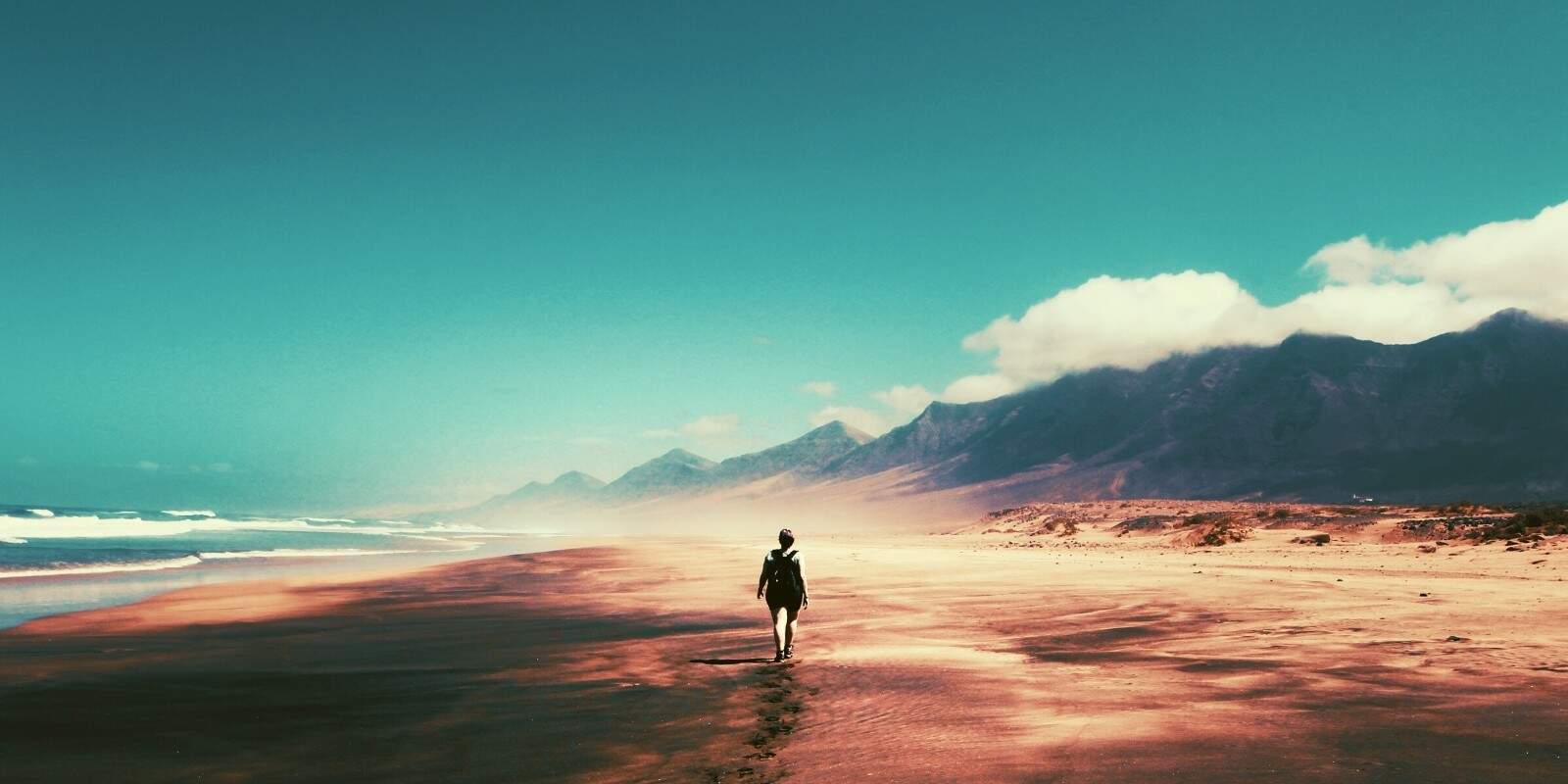
Popular Posts
Join the sloww movement.
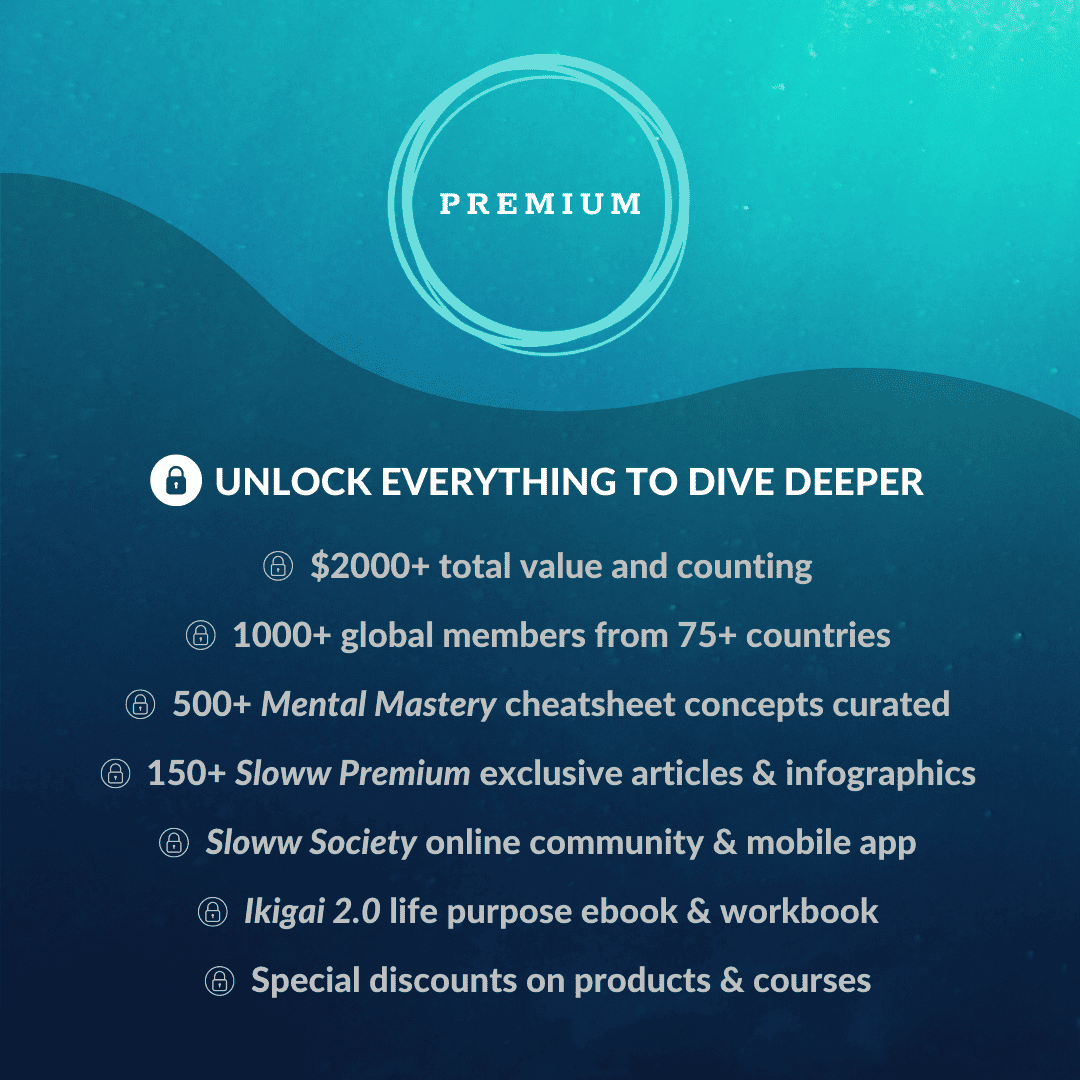
Sloww Sunday
📧 10,000+ lifelong learners read the Sloww Sunday newsletter (+ free eBook "The Hierarchy of Happiness"):
Sloww Social
- Work + Money
- Relationships
- Slow Living
What Does Slow Travel Mean? (And How To Do It)

The first time I traveled on my own, I was 19 and studying abroad in the Netherlands. Every weekend was a mad dash to see a different city in 48 hours, and to experience as much of each city as possible — no museum, cathedral, park, or touristy attraction left unturned. 😵💫
“That breakneck speed, while a great tool to check destinations off a list, was no way to truly experience a destination.”
Spring break was the maddest dash of all, encompassing four cities in nine days and about half as much sleep as I should’ve gotten. Barcelona to Rome to Florence to Venice, then back in time for an 8 a.m. class on Monday.
I was beyond lucky to have had that experience, learning how to travel on my own, how to figure out a new city’s public transportation, and how to manage my time and budget. But that rapid pace began to set the tone for future trips I’d plan. A week in France? Make it two nights in every city. Three days to travel the whole of Ireland? No problem.
That breakneck speed, while a great tool to check destinations off a list, was no way to truly experience a destination . During the weekdays while abroad in the Netherlands, I absorbed characteristics of the culture: The 10 a.m. coffee break everyone seemed to take, the food folks would eat for lunch, the way no one drew their shades at night. But the quick trips were something different. Sure, I checked Prague off my list — but I couldn’t even tell you how to say “thank you” in Czech, which sort of makes you question what the purpose of travel is in the first place.
“‘Slow travel’ presents an alternative to the see-every-country ethos.”
“Slow travel” presents an alternative to the see-every-country ethos. It tells us to accept that we won’t experience the entire world in one lifetime, and presents more sustainable travel options.
What is slow travel?
Like slow living , slow travel comes from the mother of all “slow” movements: Italian political activist Carlo Petrini’s International Slow Food movement, founded in 1989.
“At its core, I think slow travel is about intentionality and connection,” says Gi Shieh , a slow travel content creator. “It’s about spending more time at a destination to immerse yourself fully in the beauty and uniqueness of the land and its people.”
“Simply put, traveling slowly means staying for longer in one place.”
Simply put, traveling slowly means staying for longer in one place. Say you have nine days to travel — instead of hopping to three different cities or countries, consider spending all nine days at one destination, really getting to know the area.
Slow travel might also look like choosing destinations more off the beaten path, avoiding over-toured spots. According to CNN, some of 2023’s worst destinations for overtourism included Amsterdam, Phuket, and Venice, but some less traveled, alternative destinations might include the Netherlands’ Utrecht, Thailand’s Chiang Mai, or Italy’s Tuscan countryside.
Take the opportunity to connect with local people at your destinations. Stay in smaller bed-and-breakfasts, dine in small, locally owned restaurants, and chat with shop owners.
“In general, move around less — and when you move, move slower.”
And when choosing transportation methods, you’ll want to think about the most sustainable options. When possible, replace planes with trains; or car rides with bikes and walks. In general, move around less — and when you move, move slower. It might take a few more hours to get from point A to point B, and that’s kind of the well, point. You’ll understand the landscape of a country from your train window, or the way the wind smells while you’re riding a bike.
“Slow travel also means taking the time to note all the little details that make a place beautiful,” says Shieh, who also runs a blog on slow travel and sustainable fashion. “Like, how the Mediterranean sun hits the laundry drying on a balcony in the south of Italy or the specific cadence of honks of Vietnamese motorbikes during rush hour in Hanoi.”
What are the benefits of slow travel?
Besides lowering the carbon footprint of your trip, traveling slowly gives you a more mindful connection to the place you’re visiting. You likely won’t remember the time spent waiting in line to enter a popular sightseeing destination, but you will hang onto the conversation with a friendly local or the way you felt after a long, leisurely lunch.
“Traveling slowly gives you a more mindful connection to the place you’re visiting.”
Less time spent on planes or tour buses zipping around to new spots means more time (and money) to spend at restaurants that cook with local ingredients or wandering a town and picking up a handmade trinket that catches your eye. And when you choose less heavily toured destinations, it takes pressure off of over-toured spots with thinly stretched resources, like Hawaii or Bali.
Tips on traveling more slowly
1. plan to take some extra time..
“Unfortunately, in today’s society, it’s hard to step away for an extended period of time,” says Shieh, noting that travel itself is a luxury. “It’s important to acknowledge that slow travel is a huge privilege,” she says. “I feel so lucky to be able to experience the world at a slower, more intentional pace, and not everybody has the opportunity to do so!”
“If you only have a short travel window of a few days, use it to explore destinations closer to home that don’t require a flight.”
Not everyone has two weeks or more to spend leisurely roaming a foreign country, but that doesn’t mean you can’t still travel more slowly. Plan trips many months in advance and for as long as you feel comfortable — maybe a six-day trip becomes a nine-day one that you spend in just one place. And if you only have a short travel window of a few days, use it to explore destinations closer to home that don’t require a flight.
And while traveling, “don’t overpack your itinerary,” says Lauren Fremont, executive director of the Winegrowers of Dry Creek Valley , a small wine region known for slow travel and sustainable practices. “Leave room for unexpected delights and meaningful connections. That’s where the magic happens.”
2. Do your research.
“Think about going beyond the pictures you’ll take for social media.” – Matilda Reuter Engle, proprietor of Middleburg Hospitality
With a little extra time and planning, slow travel becomes a lot more feasible. Do your research on destinations, rather than just heading out where you’ve seen others go. Think about what you want to learn and experience during a trip, says Matilda Reuter Engle, proprietor of Middleburg Hospitality , which is focused on preserving historical traditions via hospitality in Virginia Piedmont. “Think about going beyond the pictures you’ll take for social media,” she says. “Identify the lifestyles, history, and ancestral traditions that ignite your curiosity.”
If you’ve planned for a bit more time, consider stacking destinations relatively close to each other to make your travel more sustainable. For example, instead of spending a week in a European country this year and a week in a different European country next year, try doing the entire two-week trip in one go.
3. Stay at B&Bs or small hotels.
Once you have your destination, look for small business accommodations. Bed-and-breakfasts are fantastic — usually independently run, they pretty much hand you the opportunity to engage with the owners and the local community.
Choose small hotels over larger ones, especially all-inclusives that tend to use resources like food and water inefficiently. Of course, there are exceptions to this rule — some hotels have fantastic sustainability practices, but finding those involves, again, lots of time and research.
“If you go the Airbnb route, consider renting a room in house rather than an entire place to yourself.”
If you go the Airbnb route, consider renting a room in house rather than an entire place to yourself. Your host should have a wealth of information about exploring the area like a local, and staying with residents helps minimize your impact on the area’s housing stock.
4. Find ways to connect with the culture.
Along with accommodations that prioritize sustainability, Fremont looks for “experiences that showcase the region’s unique history, food, and traditions,” she says. “It’s about seeking authenticity and supporting businesses that share our ethos.”
“Maybe you join a fishing crew for the day and get to eat your catch, or your do a cheese tasting at the farm where it’s made.”
Read up on tours and activities that immerse you in the local culture — maybe you join a fishing crew for the day and get to eat your catch, or you do a cheese tasting right at the farm where it’s made, or you take a cycling tour from town to town.
“Go with the intention of honoring diverse ways of life, and stepping away from the fast-paced, technological world so many of us reside in on a daily basis,” says Engle. And if language is a barrier, Shieh offers that Facebook events and expat forums can be particularly helpful.
5. Ease yourself into it.
“Try not to put too much pressure on yourself to change your travel habits right off the bat,” says Shieh. If your travel history has looked anything like mine, that pedal-to-the-metal mindset won’t change overnight.
“If your travel history has looked anything like mine, that pedal-to-the-metal mindset won’t change overnight.”
Maybe you start by bringing more intentionality into your domestic trips. If you’re traveling for a wedding, consider spending the week before or after exploring the area. Perhaps next year you spend a week somewhere you would’ve typically spent a few days, or you replace one or two flights with train rides. And then take it from there.
“We have an entire lifetime to travel.” – Gi Shieh, a slow travel content creator
“We often feel this pressure to see it all while we’re young,” says Shieh, “but actually we have an entire lifetime to travel.” Something that helped me feel better about doing and seeing less while traveling? No matter how fast you travel, you’ll never see, let alone experience, the entire world.
“By spacing your travels out over the course of a few years or even a few decades, it removes some of the pressure and allows you to fully settle into the experience that is happening right now,” says Shieh.
Make peace with not seeing the whole green earth, and it will allow you to make deeper connections in the places you do. 😌
Natalie Gale is a Boston-based freelance journalist. When she’s not writing about art, food, or sustainability, you can find her biking to the farmers’ market, baking, sewing, or planning her next Halloween costume. Say hi on Instagram !
RELATED READING
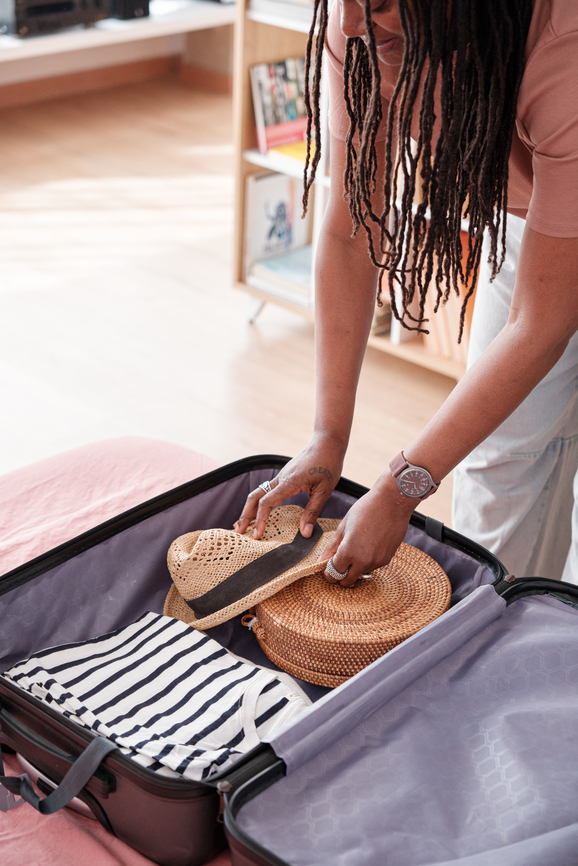
99 Travel Hacks To Make Your Next Trip A Little Easier

How To Plan For A Year Of Slow Fashion, According To 5 Sustainable Fashion Advocates
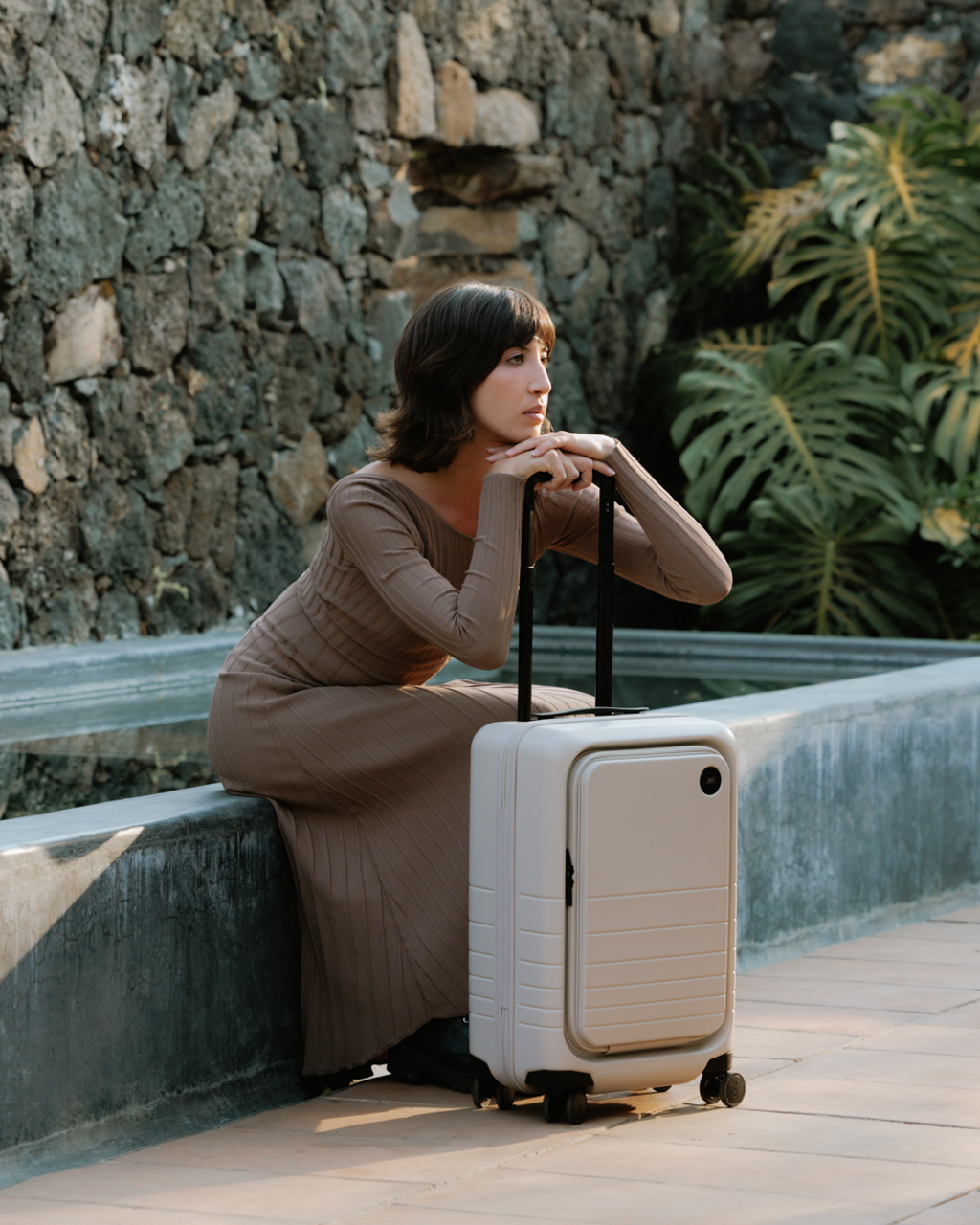
9 Sustainable Luggage Brands To Travel The World (2024)

How To Make A Travel Journal
Destinations

While slow travel is a perfect fit for relaxed people who like being spontaneous, it’s more of a mindset than an actual process , so anyone can embrace it!
What Is Slow Travel?
The definition of “Slow Travel” is:
“Travelling as a means of connecting with the people and places that you meet, and taking time to enjoy the journey.”
The opposite of slow travel is “fast travel” or “checklist travel,” where the focus is on seeing as much as possible in a short time frame.
At its heart, slow travel is the act of travelling more mindfully.
Simply put, slow travel is about embracing every part of the journey. We like to really live somewhere, for however long we have there.

The Slow Travel Movement
I don’t know whether there is an actual slow travel movement , or it just has a name now. I think it has been around for a while, and travellers are pretty 50/50 on it, usually falling into one camp or the other.
It has been gaining popularity because it is more sustainable than the traditional scurry to see it all.
History of Slow Travel
I have read this several times now, so I feel like I have to include it.
Slow travel has been accredited to the slow food and slow life movement, which came out of Italy in response to fast food and chain restaurants popping up and threatening their culture. {paraphrased from a number of sources}
Now whether I agree with the idea that slow travel today has anything to do with Italy boycotting fast food in the late 80’s, I’m really not sure.
I think it’s more likely that travel became accessible in the internet age like it never had been before , and people went crazy for the last 20 years, seeing as much as they possibly could, as fast as they could .
Now we are calming down a little, and taking time to truly experience the world, asking ourselves “What does this mean to me?”
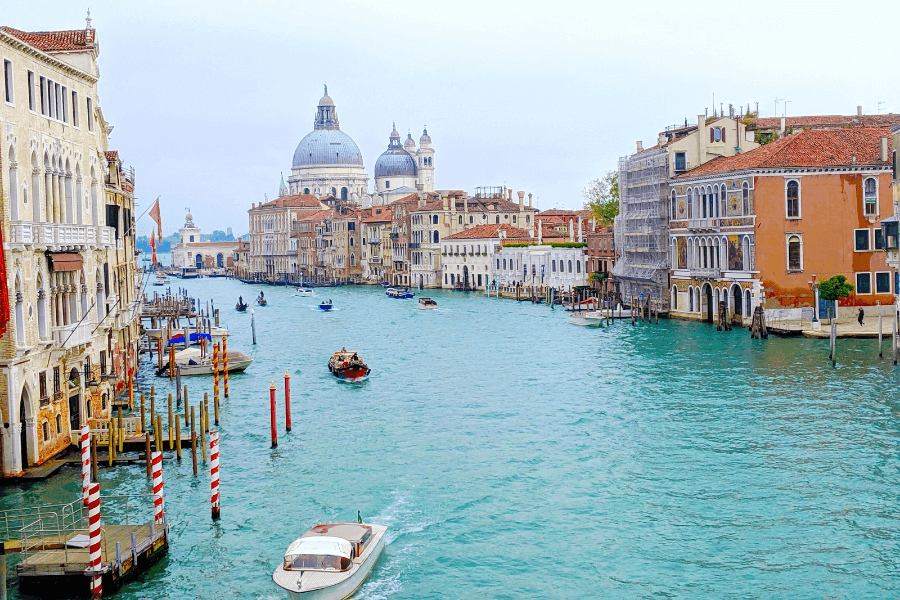
The Rise of Slow Travel
There are a few reasons that slow travel is becoming more popular.
For the same reasons that fast fashion is going out of style, slow travel is coming in. Mainly, younger generations are equal parts eco-conscious and really broke (ahem.)
The wasteful spirit of instant gratification and always having the “latest-and-greatest” is on its way out.

Slow Travel and Sustainability
Slow travel is the starting point for more sustainable travel .
By moving around less you will minimize the amount of fossil fuels used in your journey.
You will also be more likely to try locally owned accommodation and restaurants, which keeps your tourism dollars in the local economy , instead of handing them over to a corporate giant!
The goal of slow travel is also to embrace and respect the culture that you are visiting. As a guest in their home, you do what you can to leave it as you found it, or better .
This can be as simple as spreading kindness and positivity.

How Do You Know If You Are A Slow Traveller?
If you are someone who is “on vacation” as soon as you leave the house, you are probably a slow traveller already!
If you embrace airport restaurants and don’t mind overnight layovers (in a real bed obviously) you are already finding joy in the journey .
This doesn’t mean that you LOVE long flights, don’t get any travel anxiety, and are never in a hurry. It just means that you are open to authentic and organic experiences.
How Do You Start Slow Travelling?
Well I’ll tell you!
Your Guide to Slower Travel
The simplest way to slow down in your travels is to plan less .
You won’t have time to discover and embrace new things if you already have a long list of things you HAVE to embrace and discover.
This doesn’t mean that you won’t see and do amazing (and maybe famous) things!
It just means that you will happen upon them when you are walking through an old town, or when you wake up on a Saturday morning and think, “ what should we do today? ”
It’s important to note that when you go anywhere, discoveries WILL happen!

You will hear or read about something while at any destination, and have to shuffle the itinerary to make it work.
Of course, you can always come with some non-negotiables, just don’t bring a checklist and schedule every hour of your time .
Make Your Travels More Meaningful
This is the pared down point to slow travel, but how do you actually make travel more meaningful?
One answer from a Redditor having a bad day: “You can’t. Accept that you are a tourist and stop looking for authenticity or meaning.”

I don’t think we need to be gatekeeping an authentic travel experience, so here are some suggestions:
Stop Making it a Checklist or Competition
We’ve all seen those people on Instagram whose bios read “ 50 countries and counting! ” or something along those lines.
To be clear, there is nothing wrong with that , they are just proud of all the places they’ve been, but that in no way affects your experience .
Your travels aren’t complete when you’ve visited every country that is not at war! If you love travelling, you already know that it’s never done .
There is also nothing wrong with having a mental bucket list of things that you really want to see. Just make sure that your “checklist” is a list of sights that will be a meaningful experience for you.

If you haven’t seen the Eiffel Tower, is it on your list because it’s famous and you want a picture in front of it?
Or is it on the list because you want to experience French culture under the sparkling lights of the tower?
Are there things on the list that don’t hold meaning to you?
Take them off.
If you would rather rent a peddle boat in a seaside village in Croatia than see machu picchu, do it!
For me, I don’t care about the Leaning Tower of Pisa. Sure it’s cool and it’s famous, but I would never take a day or two to go back to Italy for a picture with 200 other people in front of it.
That wouldn’t be a meaningful experience for me. (Now if you ever do catch me in Pisa in the future, rest assured it’s because Jason or Siobhan wanted to go!)
There can be – at least for me – an element of guilt when it comes to skipping “important” things. Let that go!
I’ve hustled through museums I didn’t care for, and not waited in line for things that I felt like I should see. It’s liberating.
You make the rules.
You don’t need to care about the biggest and best things just because they have historical significance or “everybody” sees them.
There is a lot of freedom in ditching things that don’t bring you joy to eat an extra ham n’ cheese toasty under an orange tree, and listen to someone play music on water glasses.

Return To Places You Love
Having thought about it, returning to a place that you love is the simplest way to make a trip meaningful.
When you find that an unspoken connection with a country, embrace it! Say, “this is my second/third/fourth home.”
For me, Bulgaria is one of those countries.
The first time we went, we really didn’t enjoy it.
It was hot.
Bulgarians are grumpy.
Jason (the hubs) was the only man in the whole country with a beard (at that time,) so people openly stared at us everywhere we went .
We agreed that we wouldn’t go back if it was up to us. We were adopting from Bulgaria which requires two trips, so it actually wasn’t up to us.
I’m glad we had to go back, because now it’s a part of our family. (Quite literally as well, because our daughter is a citizen.)
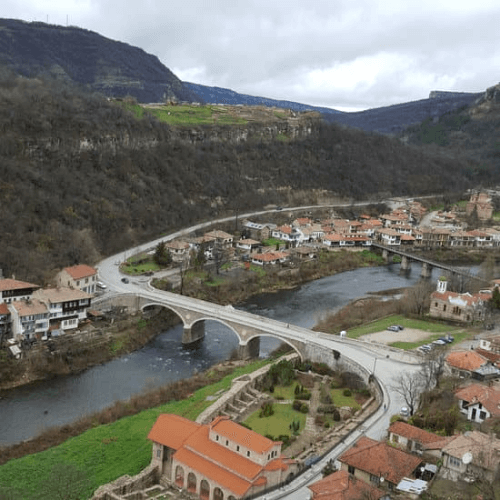
For how many trips we have taken, we really haven’t been to that many countries. We just keep finding places that we love and want to return to over and over!
I have yet to go anywhere in Asia, and even though I think it may happen one day, we will have to choose it over Bulgaria, Croatia, or Portugal – and let’s be real, that will be hard for us to do!
Return to places that you love.
Find spots that only you know about.
Cultivate meaning for yourself.
Ask for recommendations from locals for activities, food , or nice places to see!
If that sounds awkward to you, it really doesn’t need to be. There are lots of opportunities to strike up conversations with your servers, or your apartment hosts, and ask them some questions.

People are usually happy to share things that you won’t find in guidebooks.
Be Fully Present
“Mindful travel” sounds a bit…snobby? But it’s a pretty simple concept. Practice mindfulness by fully immersing yourself in the present.
In a new place there is a lot of “new” to experience. Take a moment to sit somewhere with the sun on your face.
Actually listen to the birds or that distant music.
Breathe in the atmosphere.
This makes for special moments, and ones that I promise you will carry with you.
Put the Camera Away (Once in a while)
Putting the camera away is the only way that I can truly be fully present. I love taking pictures, and not just for Instagram or the blog, because I really enjoy it.
It can be very hard for me to put the phone/camera away and embrace my surroundings.

I sort of walk a fine line now, where I get plenty of pictures at the beginning and then try to put it away between every shot. That way I can just enjoy myself, but if a picture seems worth the hassle, I will dig it out.
I try not to give myself actual rules – such as a time limit – because I will inevitably resent them.
I know there can be a bit of photo FOMO , but I think that happens regardless. Often after a trip, as I go through my pictures I will notice things I should have captured, so I may as well miss some shots in the name of being present!
Switch Up the Sights
There is absolutely a sight-seeing fatigue that comes with exploring a new place.
Especially if you aren’t used to taking things slow, and you do have a list of local sights that you want to see.
Cut the list and choose only the things that are important to you, and try to have more days than you have plans for .
Make an effort to stick with a short list, such as; two churches, one museum, two monuments, three parks (or squares,) etc. and prioritize which ones from there.
Next, alternate the type of thing you are seeing:
Coffee at a park in the morning, then visit a museum , go for lunch, stop by a church , eat a leisurely dinner, and stroll by a monument after.

By balancing your days better, the flow not only feels more organic, but you will prevent one church or museum from blending into the next.
Just ask our daughter: Sintra was amazing but it is all castles, and she was pretty tired of castles early in our trip.
It doesn’t matter how beautiful something is, more of the same is just more of the same eventually.
Focus On Collecting Experiences
Slow travel is all about doing less to experience more .
Rather than sights, souvenirs, and your checklist, focus on collecting more experiences.
That doesn’t mean guided excursions (although it could.) Come up with some quintessentially local things to do and meander through them.
For example, if you are in Portugal :
- Visit a fish market
- Try to find a building with the most unique tile
- Sit in a busy square and listen to a busker play fado
Immerse yourself in living the local life, instead of just visiting to see.

Get Outside of Your Comfort Zone
Do you ever see something interesting and think “ I couldn’t possibly! ” Give it a try!
Take an overnight cooking tour to a village in Bulgaria .
Sleep in a yurt.
Eat a scorpion!
Live your best life.
Is Fast Travel Bad?

There is nothing inherently wrong with fast travel , but I do think it robs you of the full experience.
Ask yourself the question: “Why do you need to travel fast?”
The answer is almost always that you have limited time, and so many things you want/need to see.
I would guess the uncertainty of whether or not you will ever have this opportunity again!
But what is behind the need to see it all quickly?
This scarcity mentality is what really steals the experience. You can’t relax the plans because you don’t want to miss out forever!
Trust me, I have totally been there. My first trip out of the country was to Europe, and full of one night here, two nights there. It was billed in my head as a once-in-a-lifetime trip .
Not only is a lot of it jumbled in my mind, I would have to revisit ALL of these places because there is no way to experience them properly in that amount of time.
I am not saying that two days is never sufficient, and you need to spend weeks everywhere.

There are sleepy villages that you can spend 48 hours in, just walking around, breathing the air, and feel ready to leave.
Don’t plan 48 hours in Paris .
You will want to sip coffee and nibble croissants, climb the Eiffel Tower, visit the Louvre!
“What’s this? A sunset river cruise?” Oui!
“Oh, NON! We have no time.”
You want to be able to say “Oui! “
If You Fall in Love, You Can Visit Again
Say it with me, “ I can come back. ” And I promise, if you love it, you will !
We may always have a bit of FOMO, because by going back to Bulgaria for the 6th time, I am saying “not now” to Thailand or any number of other trips. However, nothing beats the connection that draws you back.
Maybe you feel like you won’t ever have the money again, or the time off again, but priorities can shift .
I assure you that we are far from rich (Google says low middle class) but we always make space to travel.
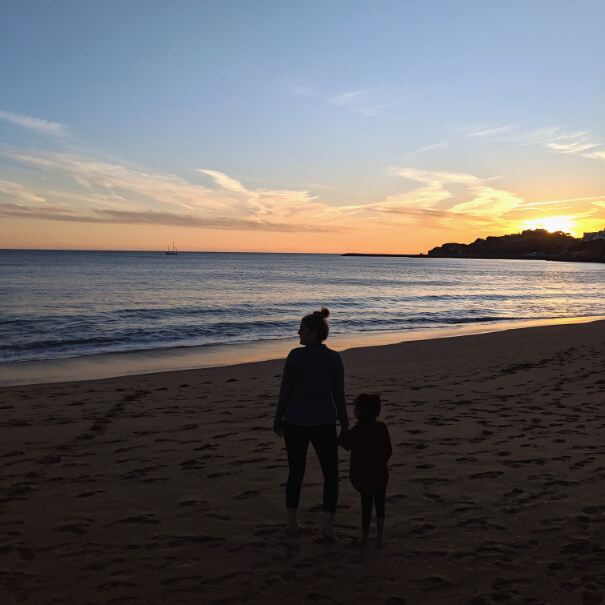
How Long Is Slow Travel?
The misconception about slow travel that if you are in a place for a certain time period, it is automatically slow travel.
This is not the case!
As I mentioned earlier, 48 hours could be ample time to experience a quiet life in a country village.
A week in Paris jam-packed with tours and day trips to Versailles or Mont St. Michel would still be fast travel.
We have done a long layover in Vienna where we took things very slow , and a four day trip to tiny Sintra that wasn’t slow enough !
It is a state of being and connection with your surroundings.
When you read: “Two weeks minimum in any location.” I have to strongly disagree with that!
Sitting somewhere and waiting for your two weeks to dwindle down, is not really the point.
Is Slow Travel just a trend?
Nope! Or at least I don’t think so.
It is here to stay, and for some, has always been .
Perhaps the most famous slow traveller is Rick Steves. When I was younger I didn’t understand why he was wasting his time in all these piddling little villages when there was “nothing” there. I guess you could say I’ve changed my tune!
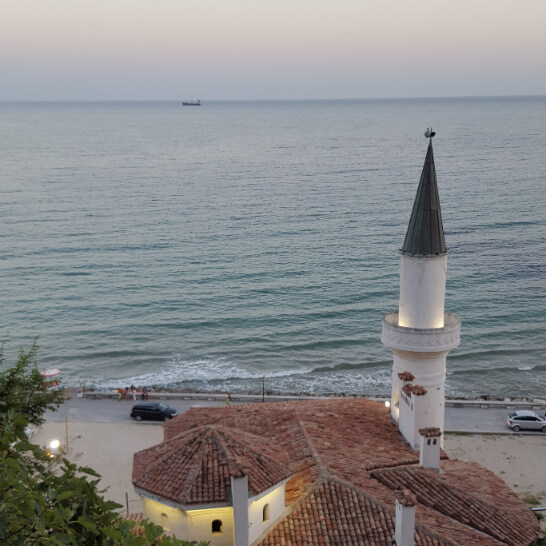
I’m not hating on Instagram. I share my pictures as much as the next girl, but slow travel is definitely the antithesis to an “Influencer’s” 24 hours in Dubai.
Travel inspires and enriches. It should never be a competition.
Extra Perks of Slow Travel
It’s funny that the spirit of fast travel is to maximize time and see the most things, but it also wastes the most time.
Remember the trip to Europe I mentioned with only one or two days per location?
What we had failed to realize was just how much time would be spent travelling between cities, and even simple things like packing up, checking out, and often, waiting to check in at the next place.

I don’t know if you have spent a lot of time moving around with your luggage, but it’s hardly a way to experience local culture!
(although the lighter you pack, the easier that becomes.)
The less time you spend leaving a place and going somewhere new, the more time you have for meaningful experiences. I know I said the joy is in the journey, and it is , but some parts are still better than others.
Along with burning through precious vacation hours, moving around costs you precious money.
Depending on where you are, the transportation may not be a big expense , but everything adds up.
Extra time between accommodations also means that you will be forced to eat out. Maybe that is your plan anyways, but for most budget travellers making most of your own food is the easiest way to cut back on spending.
Avoid Crowds
I hate crowds. I have anxiety, and a crowd is enough to make me nope out of something pretty quickly.

The amazing thing about slow travel, is that while you wander and discover, you are far less likely to end up in the same place as everyone else!
Again, I’m not saying you can’t see the Eiffel Tower! Those headliner experiences are still amazing. Just saying that the time in between will take you off the beaten path.
Less Stress and Anxiety
Across the board, people who enjoy slow travel say that they feel much less stressed and anxious on their trips.
This is mostly because moving around is stressful!
There are trains and buses to catch and checkout times to adhere to. There are taxi drivers to negotiate with, and let’s not forget, ample opportunity to get lost!
Every day that you don’t have to be anywhere is infinitely more relaxing than a transit day. Fast travellers and slow travellers can agree on that!
Hopefully the next time you get lost, you did it on purpose in Venice, and you have nowhere else to be.
Can You Slow Travel With Kids?
Slow travel is THE BEST way to travel with kids!

Having a family automatically makes moving fast and strict schedules more difficult, but I think it really adds to the taste of living somewhere else!
Being in a new place with your kids, and doing bits of your daily routine, is a great experience.
This time, when little tot pants end up in the trash outside a Supermarket – after a public poo explosion – the supermarket is in Portugal . And the pants-less wonder gets loaded back into the Fiat for the drive “home” to a little apartment above a shop.
See what I mean? Routine, but better .
We have also had way more enjoyable experiences with locals since we became parents.
People love taking time out to engage with kids, especially when they have such a pure appreciation for new cultures.
Kids also love being able to see something and immediately go check it out! With travelling slower, we have the time to follow their natural curiosity.
In What Situation Is Slow Travel Enjoyable?
This actual query made me laugh. I think someone is asking “…but, what’s the point?”
Of course after reading all of this you will know that I always enjoy slow travel! Where would it not make sense?
By definition it can be done anywhere and in any time frame. I think there is always room to change your pace and practice mindfulness.
However, fast travel makes sense in overly crowded places , where you want to see a few things and get out!
Same goes for very expensive cities , where you can’t afford to stay for long.
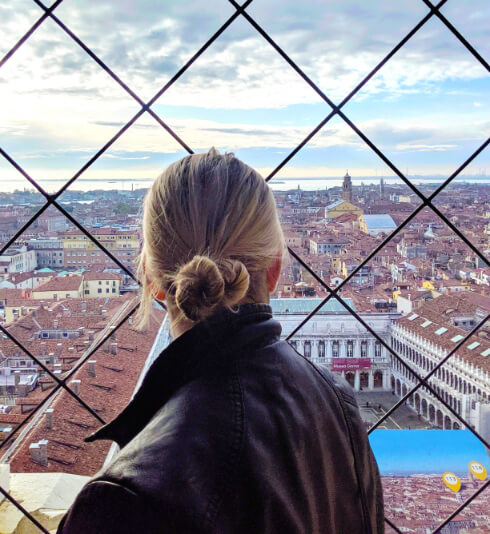
It also makes sense if you are on a convenient layover and know of a few things you could get out and do.
Along the same line, you could be passing through somewhere and take a quick look around to see if it’s worth coming back .
You could also say that we switched it up from slow travel to fast travel in the places that we decided weren’t for us and then moved on (it happens!)
Is Slow Travel Boring?
Are you constantly bored back at home, especially on your days off?
Probably not.
If you are finding it boring, then add whatever exploration and activities you want to!
If you feel done in a place, or you just aren’t connecting with it, feel free to move on.
There is no reason to stay somewhere and force yourself to love it! Find a place that you really enjoy being .
I recently read someone’s thoughts about slow travel, and they expressed that it wasn’t for them because they really enjoy the actual process of travelling .
For them the enjoyable part of travelling is taking a long train journey, passing through villages on a bus, or self driving through the countryside.

I would actually argue that this is slow travel in it’s own way.
This person has really found joy in the journey, and they aren’t moving around quickly to tick things off the list or get on to the next museum.
Are you convinced to try slow travel? Or are you already there?
“ Meaningful ” isn’t a reflection of how you travel, or the length of time, it’s dependent on your ability to appreciate what’s around you.
Practice makes perfect, so the better you are at finding meaning in every day, the more meaningful and memorable your travels will be.
Enter a quote from the travel sub on Reddit:
“Yes, giant European cathedrals are amazing…but a deeper experience will surely be found in one of the random campgrounds where I’ll meet some friendly Frenchies, who parle the Anglais, and we share a couple bottles of wine and talk about the impending doom of life as we know it.” – u/Oax_Mike
Maybe not how I would have phrased it, but eloquent in it’s own way.
Happy Travels!
More Slow Travel Inspiration

Slow Travel Planning – How to Design Your Trip

Slow Travel Quotes (With Pictures)

Slow Travel Ideas To Get Lost in 2022
All Articles About Slow Travel
Subscribe here
Coming soon, subscribe here to be the first to know when we launch this, the ultimate guide to slow travel.
.jpg)
Slow travel to discover true wanderlust.
Slow travel is becoming more and more popular. We think it’s the future of travel. Our Ultimate Guide to Slow Travel is all about embracing this immersive travel trend. We’re not here to judge other ways of travelling. Heck, more people travelling is a good thing any way you can! But, if you’re curious about how to slow travel then our guide is just what you need.
Find the best activities for you on our map!
Trust us - travelling slowly is exactly what you need to do to fall in love with your next travel destination. We’re not about judging how people travel, only to show you that there’s another option! We’ve put together our Ultimate Guide to cut down all those myths about slow travel, tell you why we love it so much, and tell you how to slow travel to get you started!
Say bon voyage to the tourist crowds and join us on an in-depth journey. Keep reading to have all your questions answered, plus the best slow travel destinations recommendations and sustainable travel tips! Our ultimate guide is everything you need to begin your journey down the slow travel rabbit hole…
The slow travel basics
-2.jpg)
These are the questions we get all the time about slow travel; What is slow travel and how do I do it? The meaning of the word “slow travel” can seem obvious once you first see it, but we’re here to share all the info you need to really dig in and get your journey started.
What is slow travel?
Slow travel is a way of travelling that gets to the heart of why we love the journey. Go at your own pace to discover authentic experiences as you get off the beaten track and discover local gems. The slow traveler explores their dream destinations at their own pace, avoids the traps of mass tourism, and enjoys a rich travel experience. Keep reading to get all the info you need on the art of slow travel!
Where did slow travel come from?
Slow travel is a branch of the slow movement. You’ve probably seen the slow fashion movement that pushes against mass production of clothes in fast fashion. Maybe our foodie friends know slow food restaurants, which focus on local and seasonal dishes for authentic experiences rather than mass produced meals. Slow travel originates from the “slow food movement”, which got its start in Italy as a protest against McDonald’s.
Some define slow travel as public transport or taking months to explore one place. None of those definitions are exactly wrong, but they miss out on what makes slow travel so great. Whether you’re enjoying a 2 day city break or taking a road trip across Europe, any trip can become a slow travel trip as long as you stick to the intention and our top tips.
Who goes slow traveling?
You might have gone on a slow travel-like trip without even realising. Backpacking, camping, and hyper focused city trips all fall under the beautiful umbrella of slow travel. The slow travel movement is an accessible movement for all from students on a budget, luxury travellers, and retirees. No two slow travellers look alike! Slow travel has nothing to do with age or your income. It’s all about what experience you want out of traveling.
Since you can really customise a slow travel trip and delve in deep to a local culture, we find that slow travel is the best option for many solo travellers and those interested in getting a full and authentic experience of their destination.
Are slow travel and sustainable travel the same thing?
Eco conscious travel or sustainable travel does have some overlap with slow travel. But they’re not exactly the same thing. By moving away from mass tourism and into more sustainable practices, slow travel is by its nature more eco-friendly than other trips. Unlike the usual sustainable travel tips though, slow travel has its own mentality.
While sustainable travel focuses on the effect that trips have on the environment, slow travel looks more inward. All those busy trips, crowded places, and wanderlust social media posts can have a negative effect on our mental health. In slowing the pace and taking things one step at a time, slow travel is (in our opinion!) a better experience for all involved - you and the planet!
Can slow travel be luxurious?
You can absolutely make slow travel trips on a higher budget. We know there’s this myth that slow travel is all about backpacking and while that type of thing does fall under slow travel, that’s not all it's about. Taste local expensive food, stay at luxury Airbnbs, and discover the best of the local culture on a luxury budget that’s right for you.
Our top 5 reasons to travel slowly!
Now you know what slow travel is all about. But have we convinced you to plan your next trip in the slow travel way? We’ve got all the reasons why you should hop onto the slow travel movement right here to get you thinking.
You support the local economy
Hey, big spenders! There’s just something nice about going to your local market and actually meeting the sellers. Slow is that, but on an even bigger scale. Major travel companies do have a habit of pushing you to major tourist spots and always giving you popular itineraries. We’re not saying that’s a bad option if that’s what you want from your travels, but slow travel gives you a local and authentic option.
By travelling slowly, you’ll probably be spending more time in one place. Dive in deep to the local scene to discover hidden gems, restaurants, and local events. You’ll be giving your hard-earned cash to smaller businesses and local artisans who need the money a fair bit more than your average top 100 travel company.
Slow travel can keep your budget low
We all want to travel more often! Slow travel helps to keep your travel costs down by focusing on one place and its surrounding area. You don't need a bunch of flights or train tickets to get the most out of your journey. Of course, if you’ve got a higher budget there’s plenty of slow travel destinations, hotels, and things to do for you as well!
Many digital nomads (those who work remotely while travelling) are often slow travellers. Taking a slower pace by spending more time in one area before moving onto your next destination keeps your transport costs much lower. And, of course, you get all the benefits of seeing the most of your next travel destination.
Slow travel can help the environment
Slow travel trips can involve public transport or some other sustainable way of travelling. Public releases way less emissions than the average plane! Slow travel can be done via the plane too, so long as you take your time at the destination, search for hidden gems, and keep your focus on the local culture.
You meet new people
Yes, you will meet new people however you travel! But we’ve found the slow travel community to be super welcoming. As you join in on sustainable travel groups and hunt down the best local things to in your area, you’ll find yourself surrounded by people who share the same mindset. You’re not just one in a crowd of tourists - you become an explorer ready to find the next gem.
Of course, if you’re hunting down authentic experiences there’s nothing better than getting tips from locals. Mass tourism might bring in the money, but it can have backlash. But you’re actually here for an authentic trip, in our experience, locals are way more friendly once you express that especially in places where tourism has had some downsides.
Remember why you love to travel
Have you ever been stuck in the airport wishing you were back in bed? Have you ever arrived at a destination you thought was beautiful on social media, but you arrive and there’s just a queue of people taking photos?
Slow travel gets to the core of why we fell in love with travelling in the first place.
Not to sound like a boomer, but when you travel just for travel's sake then it loses a lot of its magic. The local food that just melts in your mouth. Discovering the amazing places and hidden gems no one tells you about. Relax in the forest, up a mountain, or even in the Roman ruins inside a city park! Slow travel is about having a truly immersive travel experience. Escape your normal life and totally immerse yourself in the sights, sounds and smells of a new place, of a new culture.
Whatever you love about travelling, slow travel will dial it up to 11 . So what are the types of slow travel journeys and where should you go? Here are our top recommendations!
The types of slow travel journeys

Slow travel is more of a mindset than a pigeon hole category, but there are some holiday types that fall naturally into this type of travel. Road trips, backpacking, cycling journeys, and camping, can all be types of slow travel trips.
So long as you’re seeking out authentic experiences and taking your time, you can make any journey into a slow travel one. But here are some of our favourite easy slow travel trip types to give you some ideas.
Road trips
Hop in your car and drive wherever you want! Road trips are an easy way of getting the group together and getting around to your dream destinations. Take a road trip across Europe, America, and more. Driving might not seem sustainable at first glance, but it’s better than taking the plane to each stop! Make sure to stop along the way at the best local places! Along the road, you’re sure to find a hidden gem or two.
Backpacking
Nothing is slower and more beautiful than getting around on foot. Take your time climbing to the mountain top and enjoy the view! Is there anything more authentic than Mother Nature? Feel the rocky cliffs and rivers beneath your feet on a slow travel backpacking trip. You can go backpacking almost anywhere. Some countries, like Thailand and Sri Lanka, have seen a major increase in the number of backpackers paying them a visit. We actually recommend visiting a less popular country for backpacking to avoid crowds and have the least touristy experience possible.
A solid choice for any traveller! Pitch up a tent and sleep under the stars surrounded by nature. Camping is a great choice as sites tend to be not far off great slow travel attractions. It’s good to take it slow sometimes and just enjoy your time with family and friends! Use your tent as a starting point on your adventure as you make your way to the national parks or nearby cities. We actually think camping is an underrated option, especially when there’s more options than you’d expect in the camping world.
Campsites are one of the most sustainable places to stay on your holiday, but to really max out those slow travel points we’ve found Pitchup to be super handy to find campsites in Europe that use renewable energy .
Get on your bike and get peddling! Why wait for your flight or get stuck in the crowd, when you can peddle past them all? Explore your next destination on wheels. You’ll cycle through national parks, to castles, ruins, and make your way through the cities. Some countries are a lot better for cycling trips than others, so keep reading to find the best slow travel destinations!
Train Trips
Follow the tracks across the country, across continents even! On the train, you can travel affordably and sustainably across country borders. You’ll be literally travelling more slowly and taking more time to enjoy the journey as well as the destination. Europe is a super popular destination for train journeys. Check out our slow travel destinations below to get some ideas going…
Our top slow travel destinations

You can slow travel anywhere in the world. But at Live the World we absolutely love Europe for slow travel beginners. Here are our top slow travel destinations in Europe, plus the best things to do for each country. Take your pick!
Netherlands
Known for its windmills and tulips, the Netherlands is one of the most beautiful countries in Europe. SUP your way across the canals of Amsterdam, hike the beaches of the less travelled but unique Frisian Islands, or even pick out plastic as you sail across the rivers. The Netherlands is the perfect destination for a cycling trip, a city day trip, and more.
Amsterdam is the major tourist attraction, but other cities have great activities to offer too. Check out our map to find the best slow travel places to go!
The heart of Europe! Belgium is an underrated destination full of hidden gems and gorgeous city trips. Belgium has some of the prettiest castles and nature reserves you’d never know if you didn’t see it for yourself. A perfect pick for a road trip through Europe and city breaks, Belgium is one of our top slow travel destinations.
Follow our 2 day itinerary in Brussels for a slow travel experience in Belgium’s capital!
Czech Republic
Backpack in the Czech Republic to enjoy a central European location with gorgeous mountains on its border like Sněžka. Take a city break in Prague to uncover hidden gems in its castle, local markets, and so much more. Prague is the #1 stop in the Czech Republic, but there’s great places across the country too like the beautiful city of Czechy Krumlov.
Our top tips on how to travel slowly

After racking our brains and hunting down the top experts in the eco-travel field, we’ve got all the best slow travel tips just for you. From ditching the packed itineraries to bamboo cutlery, these are the top tips from experts. Read even more tips on how to travel sustainably here.
1. Buy local
This top tip came up no matter who we asked! So often, tourists will stroll by all the local and independent shops and gather at only the major centres. Of course, you’re helping out the locals this way. But you’re also keeping your carbon footprint low, by reducing all the miles goods have to travel when you shop locally. We’ve found some surprises at farmers markets, from gorgeous flowers in Prague to handmade wooden clogs in the Netherlands. Check out our map to find local trading posts!
2. Do what you can, when you can
When you’re trying to do right by the environment and yourself, it’s easy to get a bit depressed about climate change. We spoke to Coren Munday, founder of bamboo cutlery company SeaForYourselfco , to get her perspective on slow travel. Coren, like so many of us travellers, was shocked by all the plastic she saw on the beach. When you’re in that situation, what can you do about it? Coren let us know that, in the true spirit of slow travel, it’s best to focus on the here and now. Do what you can! Whether that’s picking up some plastic bottles as you backpack, swapping to bamboo cutlery, or simply taking a bag with you when you travel so you don’t leave your rubbish behind. Every little bit helps!
3. Electric Detox
OK, hear us out. We know how handy our gadgets can be when you’re in a whole new world. Our friends at IndieCampers let us know how important taking some time off can be, though. Take a break from your phone and social media! I actually tried this out on a recent trip to Nottingham. It was weird going without my laptop and phone most of the time, and sometimes I did have to use my phone just to get directions. If, like me, you’re not quite ready to go cold turkey then just turn off your notifications and enjoy a stress-free day without refreshing your email inbox!
4. Give back
The mindset of slow travel doesn’t start and end with just one person. You can spread the mindset of slow travel by giving back as you go. We don’t just mean money, though supporting local artists and events does go a long way. We mean supporting the local culture and community. Whether that’s chatting to the locals in their language when you can, supporting local businesses, or volunteering on projects around the world, you can travel in a way that isn’t all take. Sometimes we need to give back too!
5. Take it slow - literally
We’ve said it before and we’ll say it again. Slow travel doesn’t just mean sticking to the train. But! We’d be lying if we didn’t include this top tip. After all, public transport is one of the best ways to get around depending on where you go.
The main thing is not to rush about from place to place. If you’re in a rush, then you’re not enjoying the journey. You could be in the most beautiful place in the world, but if you’ve been jostled about by the tourist crowd, honked at in traffic, and need to go to the next activity in an hour, then it doesn’t seem that pretty. It’s important to take things at your own pace, so you can really enjoy your experiences.
Everything you need to pack for a slow travel journey
Alright, you’ve picked your destination and you basically now have a degree in slow travel. You’re ready to go. But what are the essentials to pack for a slow travel trip? Of course, having an umbrella, jacket, and spare bag for waste, are always needed. We’ve put together a list of the best things to bring!
While you’re out exploring, you’re sure to find beautiful places and hidden gems. Get your phone camera or DSLR ready for your best shot. Slow travel is all about taking your time and enjoying the moment. What’s more slow travel than capturing the moment forever on film? The big thing to remember is the intention. If you get caught up just taking photos to show people later, then you’re not enjoying the trip anymore. Use your camera to help you remember what you love later - don’t make the camera the star of the trip.
2. Portable phone charger
Sometimes you’ll be out hiking and your phone will run out of battery and, next thing you know, you’re following a random sign to the nearest village in the hopes of getting directions. Don’t be like me. Learn from all the mistakes of trekkers before you and bring along a portable phone charger to save yourself the stress. Perfect too for group campaign trips and city day trips. You’ll never regret bringing one of these guys along.
3. Cross body bag
Nearly every traveller under the sun has one of these for a reason. Keep an eye on your most important belongings without lugging around a massive bag as you go. Crossbody bags are a great pick for day trips in the city and hikes too (easy access to snacks!). You can get ‘em second hand, but sometimes you just want to splash out and get something nice. For a more luxury budget with a slow fashion heart, check out STOW .
4. A notepad
Here’s a tip from me. When you’re in the pub, you’re not going to remember all the recommendations locals give you. And they give you plenty. Use the note app on your phone or go back to basics with pen and paper, to keep track of the ever growing list of things to do in the local area. You can also double up your notepad as a travelling journal. Look back on those memories years from now!
5. A map or guide
Having an actual map or guide is handy if you have poor connection. But we don’t just mean that. Use our map and guide to find things to do near you that are recommended by locals. Dive in deep on your slow travel trip and find activities to fit your interests, not just the “top ten essentials to do” that you’ll find on every blog list. Keep reading to find our top things to do wherever you go for the best slow travel trip ever!
The best things to do on a slow travel trip

So, you banished your former ideas about travel and you’ve got our travel guide at the ready. But what do slow travelers do on their trips? We’re finishing up our ultimate guide to slow travel with some ideas to get your trip planning started.
1. Take a hike
Hiking is booming and for good reason! Slow things down by travelling on foot. You never know what you’ll find. We’ve seen hikes marked by artsy sculptures, a walking trail through a witchy village, or go for a classic woodland trail. Whatever flavour of hike you pick, you’ll be enjoying the local nature and taking a breath of fresh air.
Where to hike
You can always find a good hike at the nearest national park, but we recommend using our map to find the best hikes and tips to make your trek the best one yet. You can find some good walks not too far from the city too!
2. Explore the markets
We will keep on banging this drum. There’s no point going to a city just to explore the major shops. Sure, you’ll find some goodies there but you’re not really picking up the local vibe. Head on down to the local market to meet the artisans, the farmers, and so much more. Blend in with the local crowd!
3. Find hidden gems
A slow travel trip is best when it includes a hidden place or two. Keep your eyes peeled for those places by asking the locals and checking out hidden gems on our map in Belgium, the Czech Republic, the Netherlands, and more to come soon! What we love about hidden gems is that they can be anything from a 19th century castle in the Netherlands to an alleyway covered in amazing street art.
4. Taste it!
Don’t forget to taste the local food and try out the beer and wine. Take a brewery tour, book a wine tasting, and discover local spots on our map! We’ve found amazing local food trucks, rooftop bars, and even little wineries across our favourite destinations.
Where to eat
While you’ll always find plenty of cafes and restaurants in the city centre, they’re usually not the most authentic. Sometimes they’re good, sometimes they’re tourist traps! Wander out a little further to find the best options in the city.
5. Go sailing!
OK, this one depends where you are but if you’re near a lake or river then you can’t go wrong by renting a boat. Sail out onto the waters and feel that sea - or river! - breeze. Want to be even more active? You can always go canoeing or grab a SUP board. SUP is basically stand-up paddle boarding! We’ve even found SUP rentals in the canals of the Netherlands.
6. Bring your bike
Join the locals on the wheels. Slow down your travels by taking yourself from place to place. Sustainable, convenient, and a great thing to do, biking is one activity you have to add to your slow travel checklist. Cycle your way across nature reserves, past the cities, or even follow along a local ice skating route.
Our slow travel book recs
Need further reading? Want some more inspiration? We’re not here to give you homework, but you don’t have to take our word for it on how great slow travel is. Delve in deeper into the slow travel movement and community alongside these writers, backpackers, trekkers, and more. Discover new destinations and tips in their pages, then go out and explore for yourself!
The Art of Slow Travel by Bhavana Gesota
Read the true story and personal experiences of passionate slow traveller Bhavana Gesota. When I was reading this book, I was amazed by how deeply Gesota experienced each place she visited. But this book doesn’t just focus on the places. The Art of Slow Travel is one of the best travel books you can read as it actually goes into the internal journey we go on when we travel.
Slow Travel: A Movement by Penny Watson
This is your basic introduction to slow travel. Best for inspiration rather than a how-to guide, this book might not have all the answers you need to understand slow travel but it will pull you in and leave you wanting more. Discover beautiful places, tips, and tour company recommendations. We recommend Watson’s books for beginners to slow travel! Thanks to its fairly recent publication in 2019 and iconic photos, this book always ranks highly and our booklist would not be complete without it.
The Idle Traveller: The Art of Slow Travel by Dan Kieran
This book is essentially a longish essay on why you should slow travel. Reflect on why we should travel and if we have lost that purpose… Keiran’s book is best for those interested in the mindset of slow travel and the philosophy behind it. Some of the best parts of the book are Keiran’s adventures and anecdotes from his travels across the UK and Europe. More limited in location than The Art of Slow Travel by Bhavana Gesota, but still an interesting read.
Fancy embracing the slow travel way on your next trip? Check out our map for 100s of local, authentic activities that’ll perfectly fit a slower style. Find the best activities for you on our map! Psst! Try selecting Green Horizons and Local Trading Posts for some of our slow travel faves… If your chosen slow travel destination isn’t there yet, don’t worry, we’re working on it! Follow our socials to be the first to know when we launch a new destination. In the meantime, happy (slow) travelling!

Let our AI assistant help plan your trip
Create a personalized plan and share it with your friends


Continue reading
.jpg)
Never run out of things to do! Sign up to our newsletter today, what are you waiting for?

The first slow travel guide
Antwerp - Belgium
Supported by


What Is Slow Tourism & How to Be a Slow Traveler
Ever wondered what slow tourism is and what slow travel is all about? Regardless of what you are maybe thinking, it has nothing to do with traveling at a snail’s pace. Slow tourism, as a concept, is the counterpart of mass tourism. It’s about skipping fast bucket list travel and opt for a more authentic travel experience focused on meaningfulness and intentionalism. In this post, I will explain to you what slow tourism is and how you can become a slow traveler yourself if you would like to!
Table of Contents
What is slow tourism.
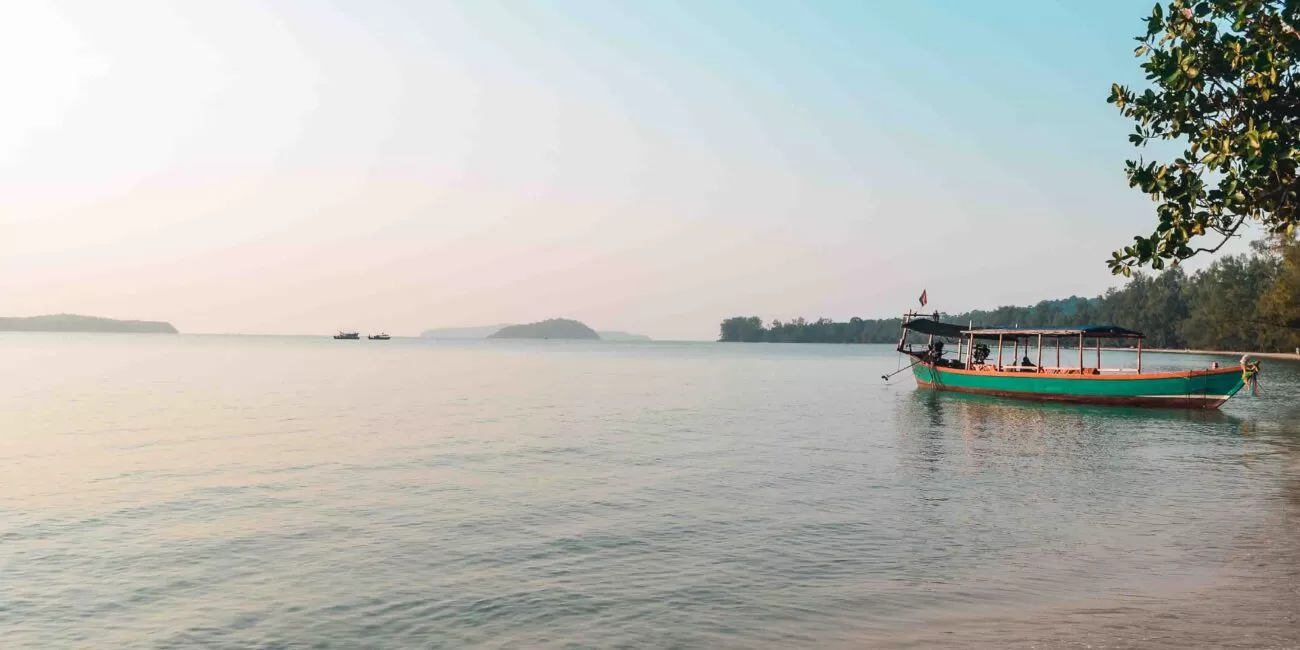
Slow tourism @ Koh Ta Kiev, one of the lesser known islands on the coast of Cambodia.
Slow tourism is about taking your time to travel at a relaxed and comfortable pace. In contrast to fast tourism, it’s about combatting travel fatigue and immersing yourself locally to have a more meaningful experience.
Moreover, slow tourism focuses on making personal connections with locals at your destination. This way you get personal first-hand information about the place you are visiting instead of the general tourist information provided by foreign tour operators. Through slow travel, you get to explore the new surroundings through a local’s eye, plunge into the culture and connect with local communities.
As a result, traveling slowly also makes you travel more sustainably. Slow travelers, in general, tend to be more attracted to consume locally, by staying in local accommodation and eat at local restaurants. This benefits the local economy and prevents tourism leakage. Because of this, your travels don’t just improve your wellbeing but it’s also beneficial for the destination.
Slow Tourism definition
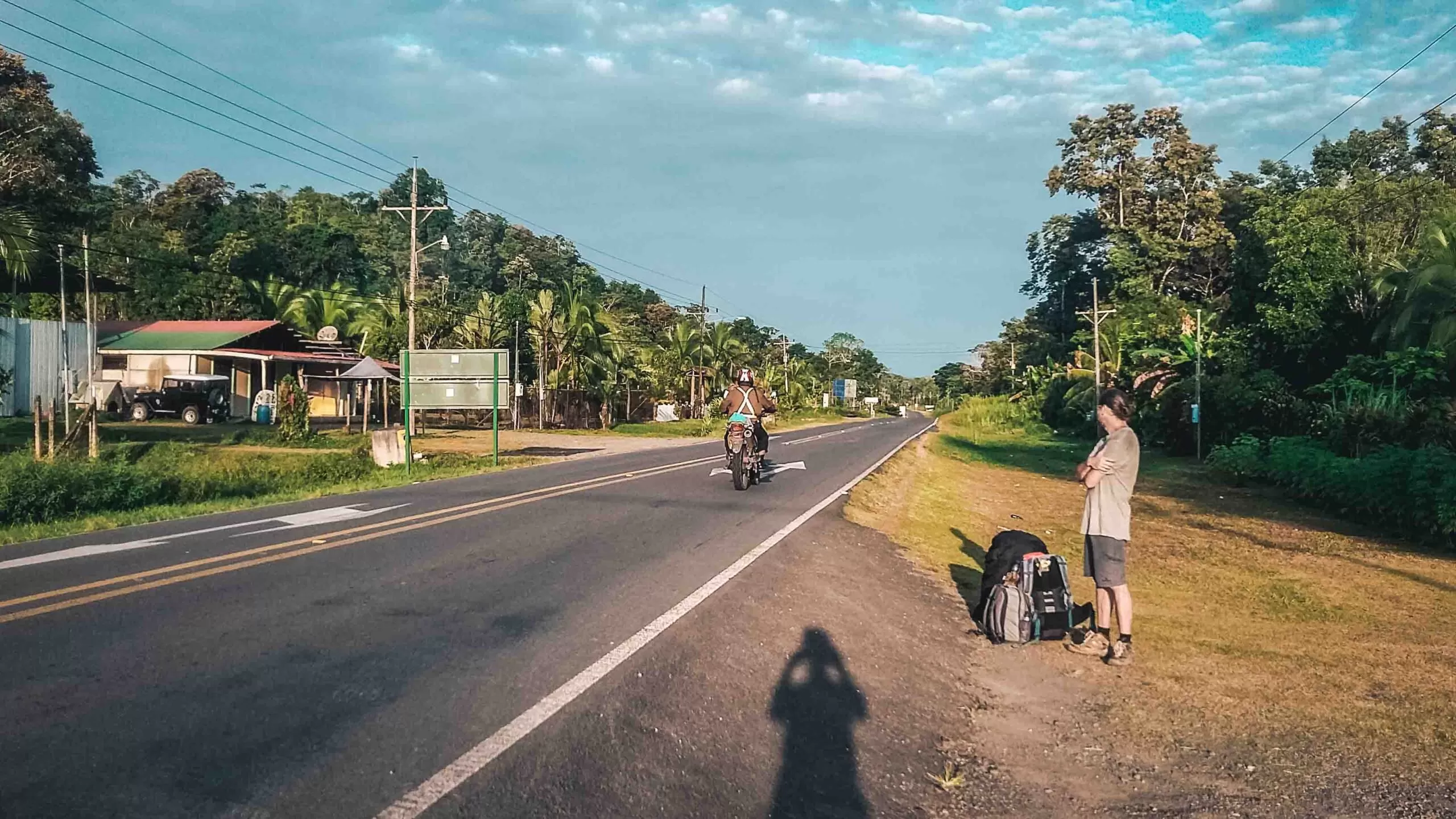
Being slow tourists in Costa Rica , waiting for the local bus.
Not much research has been conducted yet in the area of slow tourism. While at the start of the slow travel movement, the main focus point of slow tourism was the mode of transportation, this shifted later on to a broader definition of slow tourism, taking into account two driving forces regarding travel, environmental sustainability and personal/social well-being (Moore 2012).
Dickinson and Lumsdon (2010) define slow tourism as: “a conceptual framework that involves people who ‘travel to destinations more slowly overland, stay longer and travel less’ and who incorporate travel to a destination as itself an experience and, once at the destination, engage with local transport options and ‘slow food and beverage,’ take time to explore local history and culture, and support the environment”.
Of course, I’m not a researcher but I will try to build on this definition and my own travel experience to give you a better understanding of what it can mean to be a slow traveler.
Origin of slow tourism
Slow tourism is an offshoot of the slow food movement which originated in the 1980s in Italy. Carlo Petrini and a few other demonstrators protested against the opening of a McDonalds at the Spanish steps in Rome, denouncing that the arrival of fast food establishments would harm regional cuisine and Italian culture in general..
We believe that we can add meaning to life by making things go faster. We have an idea that life is short - and that we must go fast to fit everything in. But life is long. The problem is that we don't know how to spend our time wisely. Carlo Petrini
What started as the slow food movement quickly expanded to other areas such as fashion, photography, journalism, and of course, travel.
In 1999, Cittaslow was founded in Italy, which was the start of the slow travel movement. Cittaslow aims to boost the quality of life in towns by taking a slow approach regarding food, culture and space. Many towns in Europe have already become a member of this movement and more and more slow cities are also popping up in Asia and Latin America.
Although slow travel has been done for hundreds of years, the emergence of Cittaslow led to slow travel as a concept and more recently to a slow travel trend.
Characteristics of slow tourism
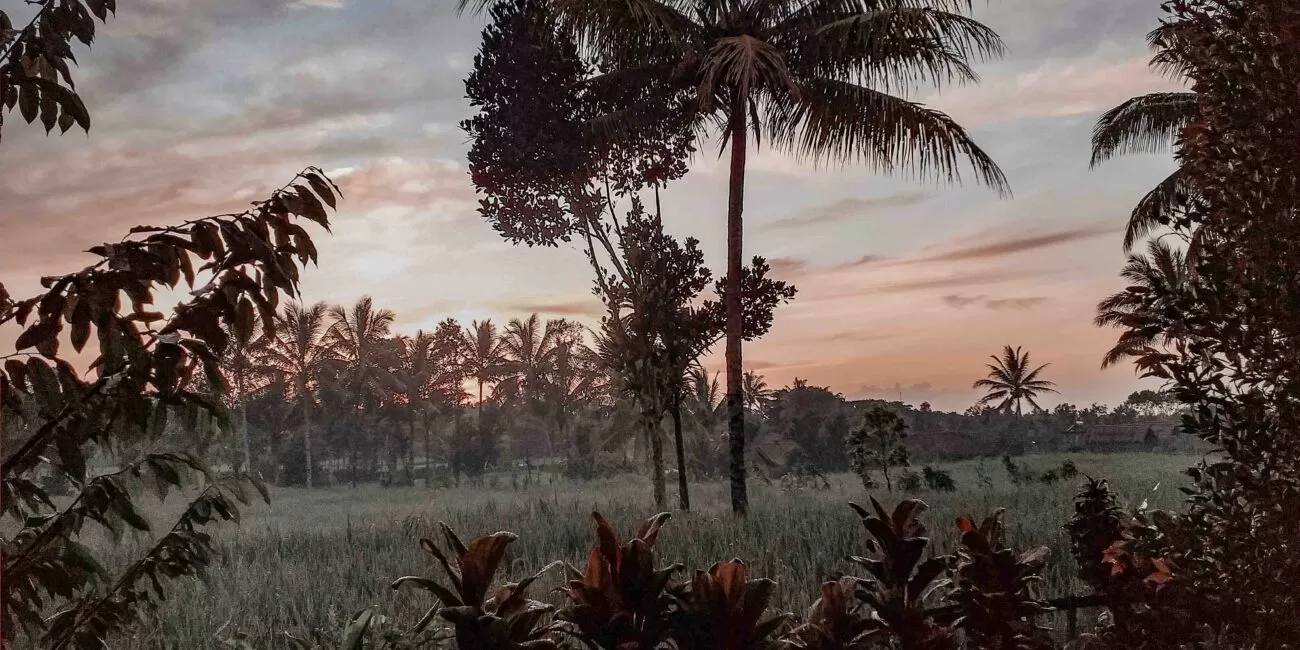
Slow tourism in Indonesia : watching the sun rise in Tetebatu, Lombok.
Travel at slow speed
As said before, this by no means implies traveling at a snail’s pace. Traveling at slow speed, in the context of slow tourism, means pacing yourself to a tempo you feel comfortable and at ease with. It is about not stressing to see all the highlights of one country in five days but consciously choosing to slow down, knowing that by doing this you will see and experience more than you ever would on your crammed five-day itinerary. It allows you to return from a trip feeling energized instead of suffering from travel fatigue.
While slow tourism doesn’t really focus on specific modes of transport it is obvious that taking an organized tour by bus or boat with a bunch of other tourists is the complete opposite of slow travel. Slow travelers will most likely choose local transport options at their destination like buses and subways or just walk.
They often also prefer a low impact way of travel like bike travel, a train journey or a road trip by car with friends. In these cases, travel isn’t that much about reaching a destination but more about the journey itself.
Travel for a longer period of time
Some people wonder about how long they should stay in one destination to be considered a “slow traveler”. I don’t think you can pin it down to a specific amount of days or weeks.
Because slow travel is more of a mindset than anything else, it is about how you behave at a destination rather than how long you are actually staying.
That said, in my experience, it’s about staying as long as you feel you need or want to be there. As a slow traveler, you probably have certain aspirations, goals or reasons to travel to a certain destination. And instead of rushing, you will want to explore your destination thoroughly. And to explore thoroughly, you need time.
It is needless to say, that you cannot get to know a city in one day or a country in one week. Stay longer in one location. You will notice you will get a hang of a location if you develop certain preferences like a favorite beach or a number one coffee shop.
Immerse yourself locally
Slow and conscious travelers like to see a destination through a local’s eye so they generally like to stay and eat in locally owned places that are mainly off the tourist trail.
Homestays and small Airbnb’s are good choices if you want to travel as locally as possible. You can find a large array of homestays and BnBs on Booking.com . Another great site to look for local accommodation is homestay.com .
If you feel like you would rather have a whole place to yourself to slow down then you can rent out a whole apartment or villa on Vrbo or Airbnb . This option is great because it enables you to cook a meal yourself. One of the joys of traveling slowly is to visit local markets and savor local ingrediënts to cook up a dish yourself in the evening.
On the other hand, eating out is one of the best ways to get in touch with local culture. In this case, choose local coffee shops and locally-owned restaurants that use fresh ingredients and source their produce from local farmers. Avoid chain restaurants like McDonald’s, Burger King, and Starbucks. To have an even more in-depth experience you can connect with locals through Eatwith and join them for dinner in their homes.
Staying local and eating local are great ways to make local connections. They can give you tips on what to do and where to go to have a truly local experience. Furthermore, taking a local tour can also take you to more off-the-beaten-path places. Withlocals is a great website for intimate private tours. Meetup , on the other hand, is another great platform to connect with locals through events based on shared interests.
Other interesting options to immerse yourself locally are to do a home exchange or become a house sitter .
Choose quality over quantity
Slow travelers prefer value over volume. They feel no need to tick off a bucket list of touristy places in a small amount of time to create the perfect Instagram feed. They don’t like to rush but instead take things slow and will pick a few activities based on their own interests and values.
Often they want to be more than just passive spectators and seek active participation in local life by joining cooking classes, take handicraft workshops or a local dance class.
The definition of quality in this context is completely subjective although slow travelers will likely choose activities that are local and eco-friendly and educate them in one way or another so that it broadens their world views.
Benefits of slow tourism
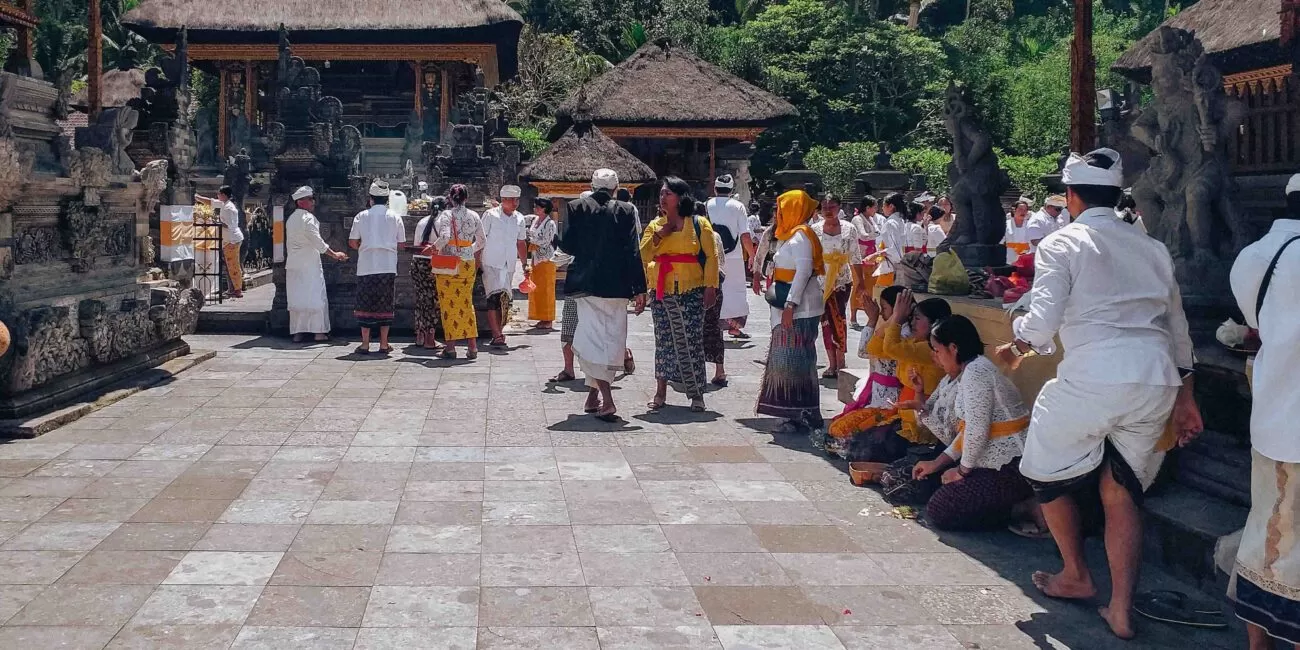
Slow tourism in Bali: slow travelers will immerse themselves in Balinese Hinduism.
authentic experiences
Instead of ticking off all the bucket list boxes to popular places, slow tourism focuses on having meaningful, authentic travel experiences. If you like the fast-paced lifestyle, that’s fine. But if you feel like you seek deeper connections in your life and while traveling, then slow travel will most certainly help you achieve that.
By connecting with local places for a longer period of time, you learn about the culture, customs and habits. You get to really feel the place in a genuine way and who knows, make friends for life.
Sustainability
In contrast to mass tourism, slow tourism is better for the environment.. By spending your money in local restaurants, accommodation and markets your money funnels back into the local community. It benefits the locals instead of tourism chains and creates a more sustainable way of tourism by preventing tourism leakage.
Furthermore, by choosing more eco-friendly ways of transport, you reduce your carbon footprint. Taking the train, bus, car or bike instead of planes or cruise ships decreases your footprint drastically and helps mother nature to survive in this fast-changing world.
Transformation
Traveling slowly allows you to break free from your daily habits and lifestyle. It lets you dive deep into a new culture and another way of living. It allows you to look at things differently and creates another angle that opens up your eyes to new ideas, possibilities and beliefs. Things you probably wouldn’t have thought of if you stayed at home.
Travel can turn into a life-changing experience. By seeking new adventures and focusing on self-reflection, one can achieve personal transformation and growth.
The traveler has to knock at every alien door to come to his own,and one has to wander through all the outer worlds to reach the innermost shrine at the end. Rabindranath Tagore
Ultimately, slow travel can leave a positive long-term impact on you in many ways. You can find your purpose or passion in life through a travel experience or learn to let go of something painful that happened in your past allowing you to grow past former socially constructed ideas and beliefs.
Stress-free travel
Instead of rushing off to see every landmark or partake in a dozen of attractions, slow travel allows you to experience a place at a relaxed pace. It combats travel fatigue leaving you energized when you return home with new meaningful insights and valuable travel experiences.
If you have no fixed day-to-day itinerary and instead take the day as it comes, you will feel the stress from daily life melt away. Of course, you can have a list of things you want to do at a certain destination, but take it day by day. See what you feel like in the morning or decide the evening before if that helps you sleep better.
It benefits your wallet
Slow tourism is better for your wallet. Staying in local accommodation away from the most touristy places will be cheaper, same as for eating out. Yes, it is tempting to dine out at a seaview restaurant but a lot of times you end up in tourist traps paying a lot more than you should.
Staying longer in one place will save you transport costs and you often get deals on accommodation if you stay longer than a week or a month. Airbnb gives discounts if you stay longer than a week and also provides monthly rates which are a lot cheaper than the daily rates.
Since slow tourism is about mindfully choosing the activities you partake in and allowing time to take things slow you will less likely spend money on heavily commercialized must-do activities which in general are pretty costly.
How to have a slow travel experience
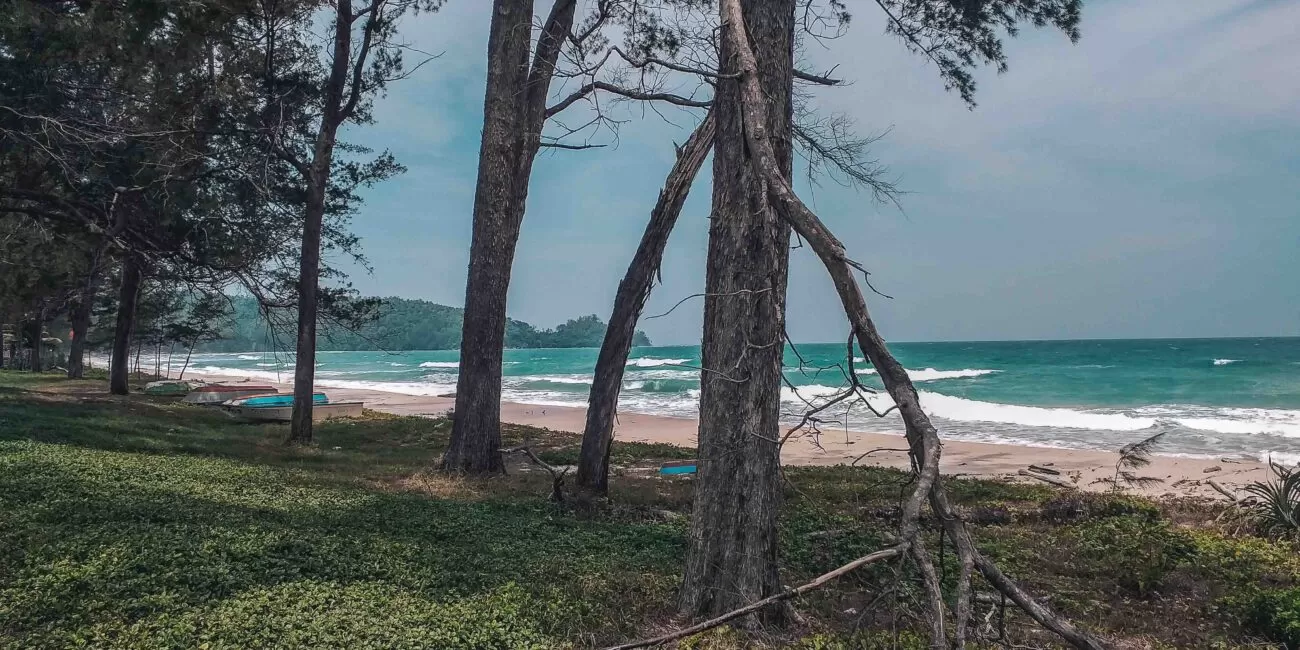
Slow tourism: Tourist-free beaches that go on for miles in Kudat, Borneo, Malaysia
Have the things you’ve read so far inspired you to slow travel but don’t know where to start? While there are no strict rules regarding slow travel, here are some tips that might help you get started:
- Think about why you want to travel to a certain destination. Is it because of a beautiful picture you saw on Instagram? That’s ok, we are all visual creatures but there’s probably much more to that destination than just that particular location. Try to dig a little deeper.
- Stay and eat local . Do some research and seek out local accommodation options on booking.com , homestay.com , Airbnb or Vrbo . When you book your local stay, ask them about the best local restaurants in the neighborhood.
- Make a list but don’t plan every minute . It’s okay to have a list of things you want to experience on your journey. Especially when you have put much thought into it why you want to visit particular locations or participate in certain activities. Just don’t rush through them. Take time to really immerse yourself. Find your own pace.
- Be mindful of choosing your mode of transport . Choose local transport instead of tourist buses and trains instead of flights. You never know what great encounter awaits you taking that local sleeper train in Thailand . Remember that cruise ships are the opposite of slow.
- Travel consciously . Mindful awareness will allow you to be fully receptive to the experiences you have in a new place. It will open up your senses, creating meaningful and intense travel memories while on the road.
- Lastly, but most important: connect with locals . Whether it’s through your accommodation, at a local bus, or via apps like M eetup or Couchsurfing , connecting with locals is the way to go to have a slow and meaningful travel experience.
Slow tourism destinations
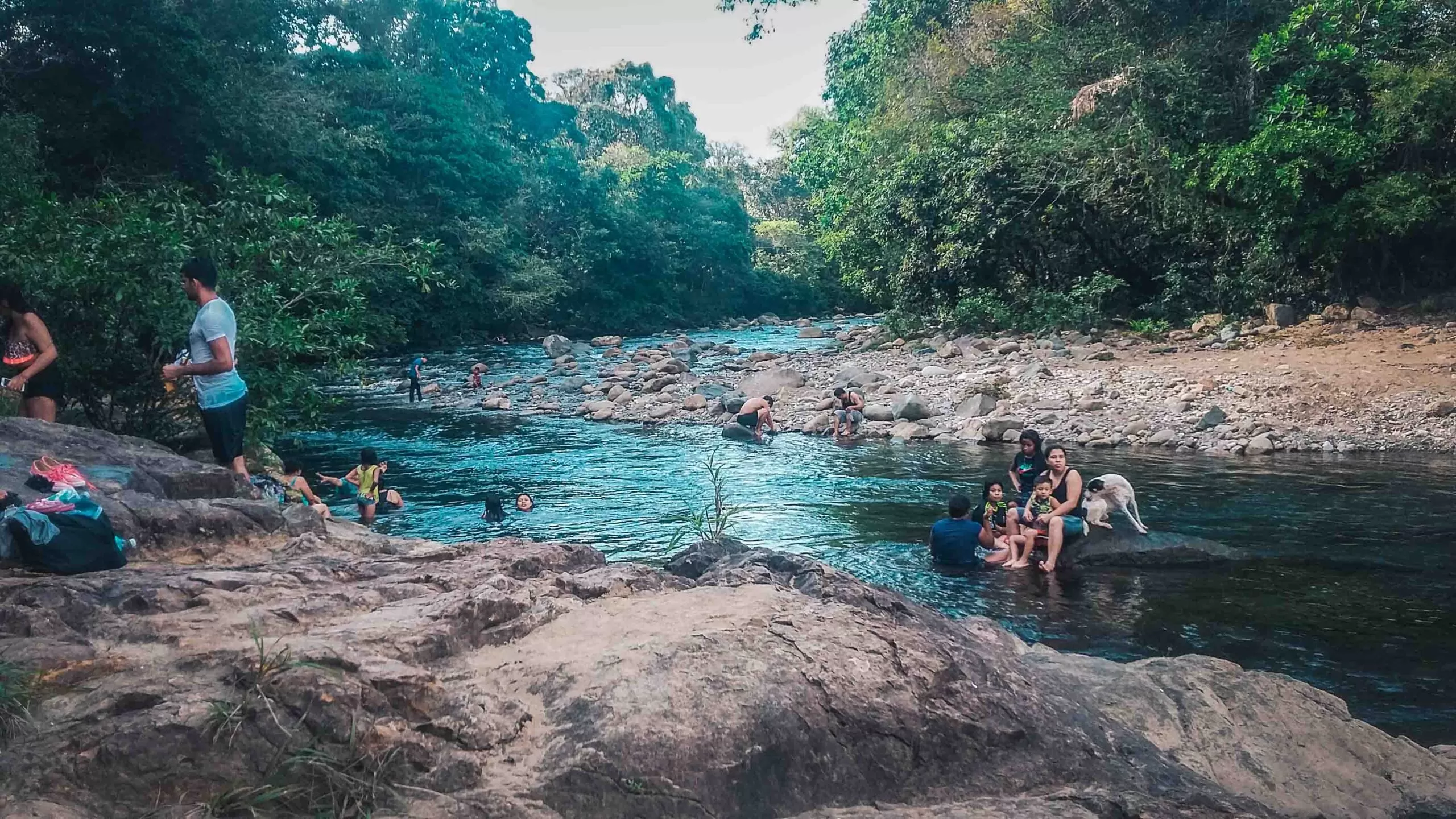
Slow Tourism: Live like the locals in Santa Fé, Panama .
Slow tourism is possible on all continents and in every country. Because slow travel is more of a mindset than a destination it really depends on what you want to get out of it. Here are some tips though, to let you get started:
- Check out the list of cities on the website of Cittaslow . Most of them have a guide for visitors to help them have a real local experience.
- Focus on the journey instead of the destination. Taking the Trans-Siberian Railway, walking the Camino de Santiago in Spain or hiking the Annapurna Circuit in Nepal are great examples to get you started. When you feel more confident, you can explore lesser-known paths and locations.
- Have you been fascinated by a certain Asian recipe you cooked recently? Or maybe you just took a yoga class for the first time and or wondering about the origins of this mindful practice? These are great starting points to decide on what destination to pick for your slow travel journey. Educate yourself on topics you are interested in and plan a trip accordingly.
Slow travel tours
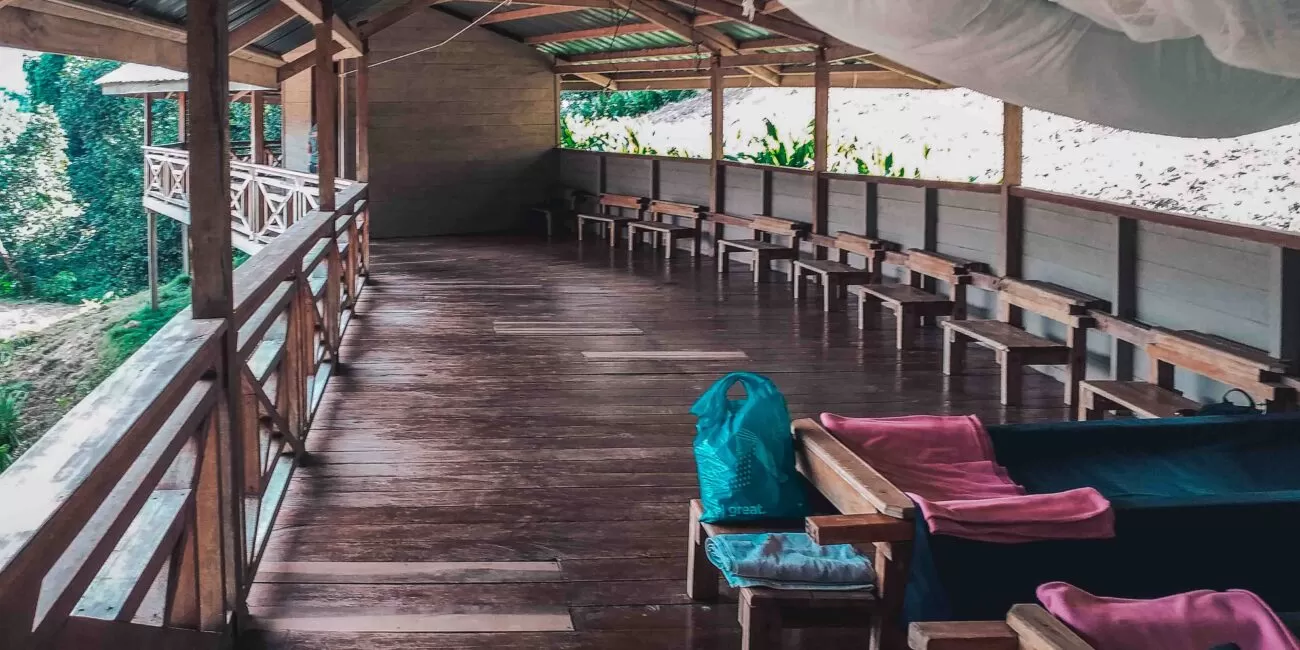
Slow tourism tours: sustainable community-based tours in Orou Sapulot, Malaysia.
Recently tour agencies have emerged focusing on the principles of slow tourism. They have put together tours that consist of visiting lesser-known destinations, staying and eating locally and mostly a slow mode of transport. While I’m personally not that interested in taking tours like this (I want to travel at my own slow pace), maybe this is your ideal way to discover what slow tourism is all about. Slowtours is the go-to organization for booking slow tourism tours. Responsible travel also has a small selection of responsible slow tours.
Although I’m not a big fan of tours that last multiple days, I do appreciate short slow tourism tours that take you to places that are offbeat and hard to get to without a tour. I had a great experience visiting the Sapulot Region in Borneo with the Orou Sapulot Community Based Eco-Tourism Project.
Slow food travel
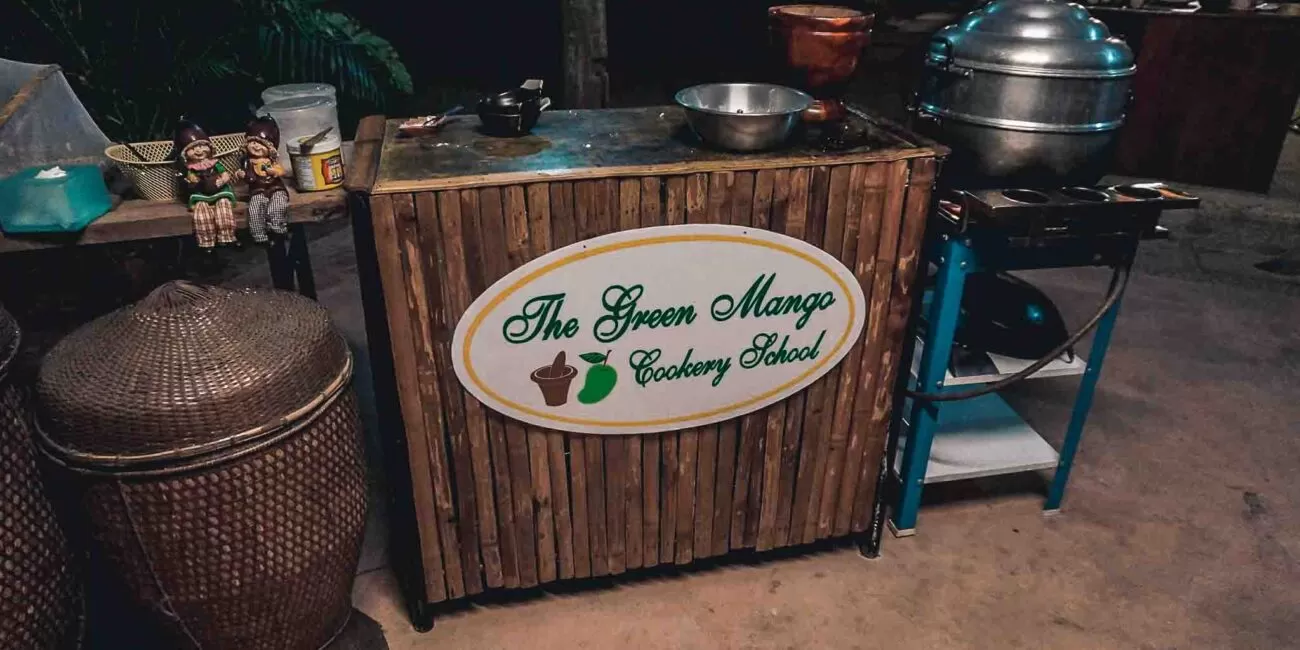
Slow tourism: taking a local cooking class in Chiang Mai, Thailand.
The slow movement started with slow food and this is one of the best ways to get to know a country and the local culture. Mouth-watering local recipes that have been passed on for centuries are yours to discover all around the world. Whether it’s a Cambodian Amok, Spanish tapas or Bolivian saltenas, every dish has its unique story characterized by the regional herbs and flavors.
Taking a local cooking class is a fun slow travel activity to partake in and educates you about the local food culture. Even if you’re eating plant-based like me, there are cooking classes to be found all around the world. If you can’t find one specifically catering to vegetarians and vegans, just contact a regular one and I’m sure something can be arranged.
Ready to participate in the slow travel movement?
Slow tourism is certainly not for everyone but I’m wondering if this post inspired you to take the first step to travel more slowly. Please let me know in the comments below or drop me a message through my contact page !
Also, check out my resources page to learn about my favorite travel companies, and have a look at my travel gear to pack your luggage or backpack more sustainable!
Disclaimer: This post may include affiliate links. If you click on them, I may receive a commission at no extra cost to you.
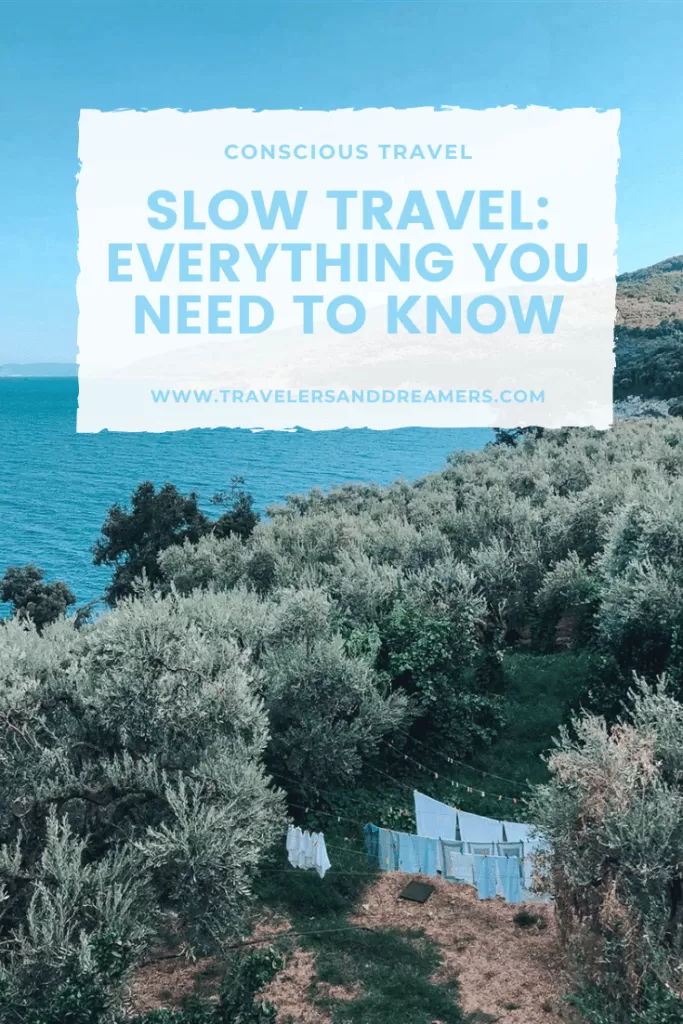
- January 26, 2023
I like the idea of Slow Travel, but I also like joining groups and going on tours. A very large part of me would just love to be a nomad lingering in a town for a few months and then moving on to another destination.
annelies_degelas
Hi Lynda, Yes, that’s the dream right? 🙂 Living a nomadic life moving from one place to next in a slow way! <3 Thanks for your comment! 🙂
Slow travel gives you a much greater experience of travelling. This is an amazing post to share awareness! Some of the places you’ve been look amazing, especially Borneo 🙂
Hi Amy, Borneo is amazing! If you go, surely check out Orou Sapulot for a true local experience and where your money really benefits the locals! <3 Thanks for your comment! 🙂
Definitely quality over quantity. ❤️ ❤️ I used to be all about checking lists and visiting ALL the museums and frankly it was exhausting. I’m so glad I’ve since altered the way I travel and I’m enjoying my days a lot more now
I can’t agree more, Shafinah! It’s no use rushing through a country and come home exhausted. Slow is the way to go! <3 Thanks for your comment!
Petsitter Barbara
HEY! I’ve been pet sitting around the world since 2012 and “living like a local.” Who knew I was part of the Slow Travel Movement?!? Good to know! I’ve used Meetup a lot, but didn’t know about Eat With and With Locals. Thanks for the two new great resources!
Himanshu Sisodia
I loved reading your post. I never looked at travel from this perspective, but now slowly changing to becoming an intentional conscious person in all aspects of my lifestyle including travel. Your post really inspires me to choose slow travelling. Thanks for sharing your thoughts.
Thank you so much for your kind words! 🙂
post a comment cancel reply
Save my name, email, and website in this browser for the next time I comment.
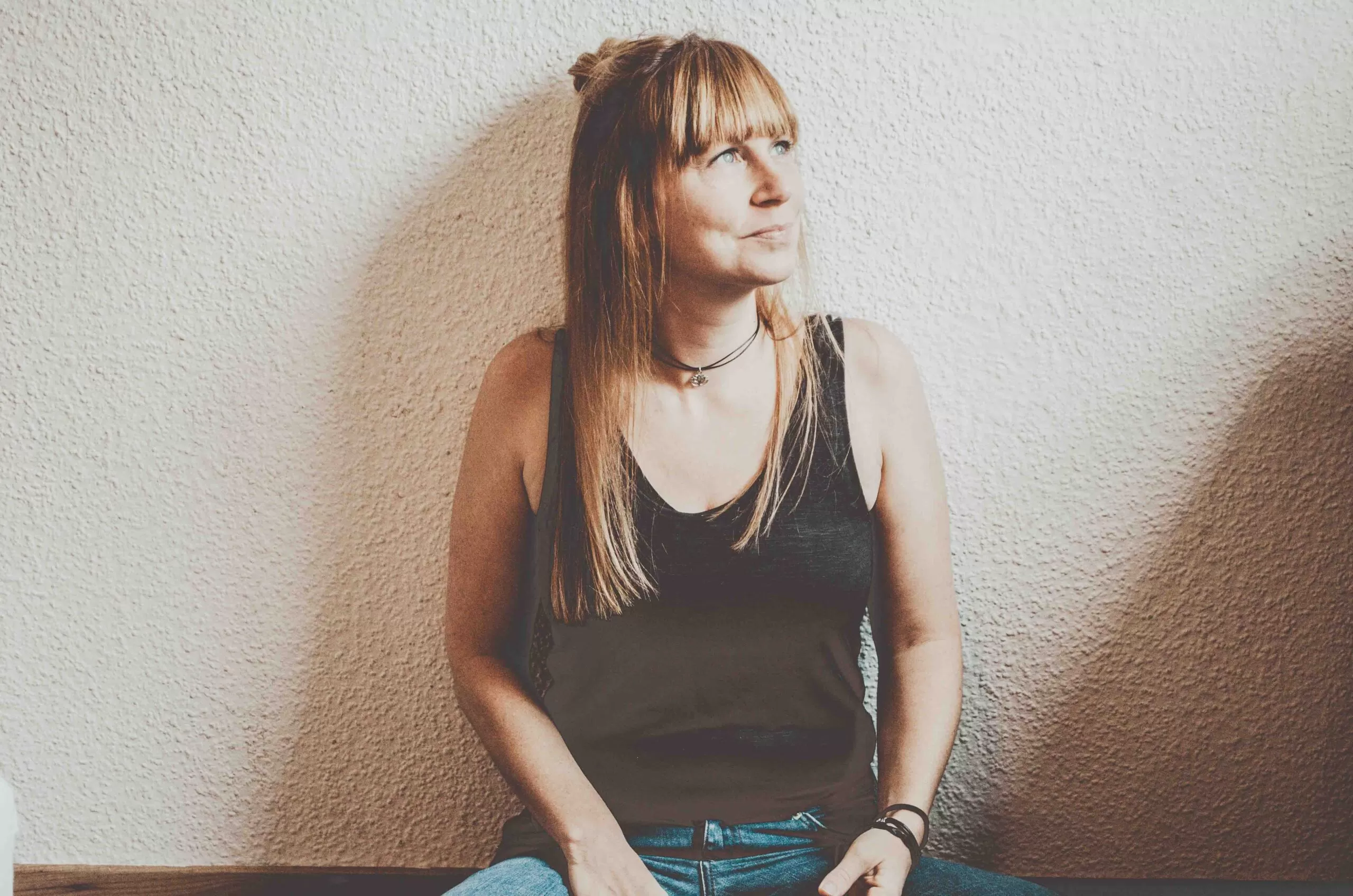
Hi! I am Annelies and this is Travelers & Dreamers, a blog about conscious travel which means traveling in a more mindful way, with a positive impact on the world and yourself!
On this website, I cover different topics like slow travel, plant-based food guides, responsible travel, sustainable packing, eco-travel, and more !
Latest Posts
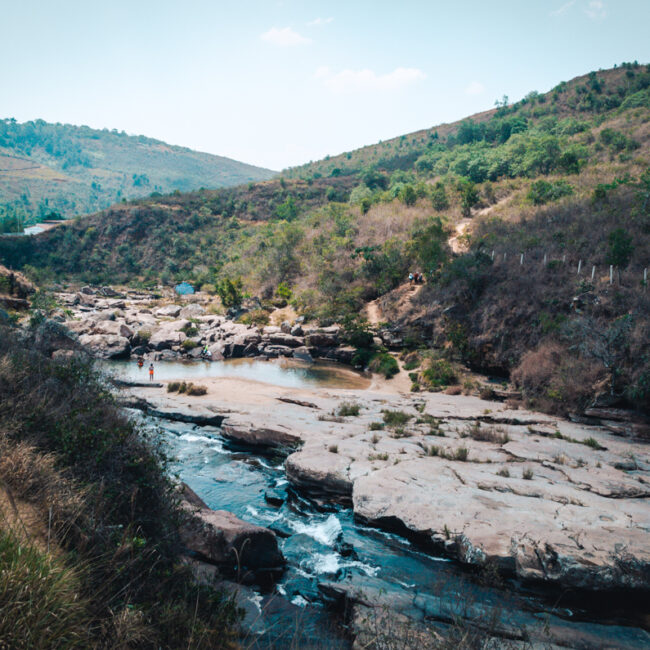
How to Visit the Pescaderito in Curiti (Near San Gil)
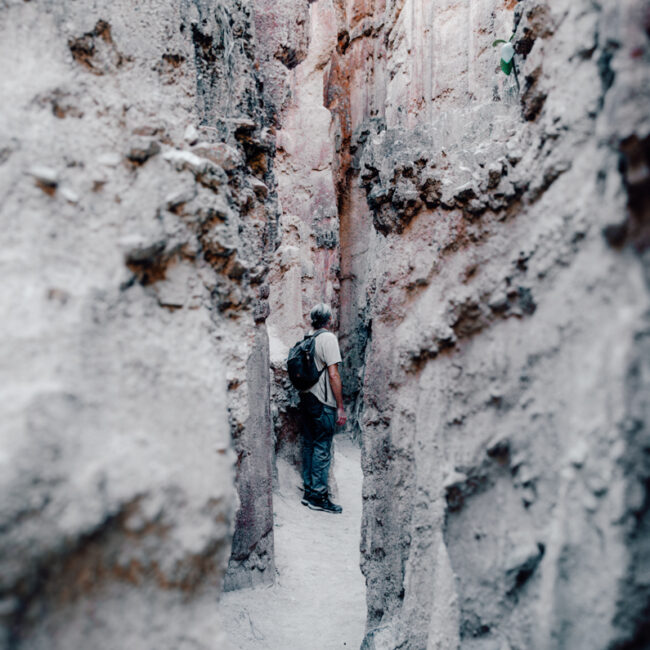
Los Estoraques Unique Natural Area: An Easy Travel Guide
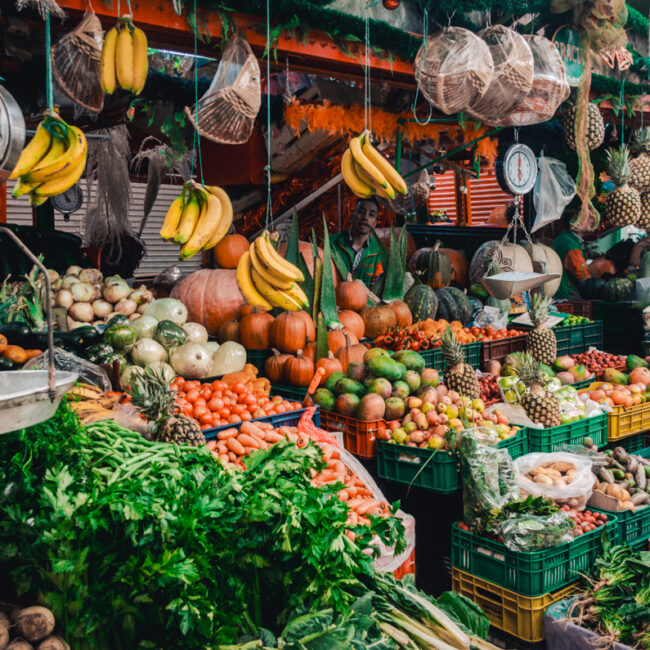
An Easy Guide to Paloquemao Fruit Market in Bogota

Phnom Penh to Kampot: A Complete Transport Guide
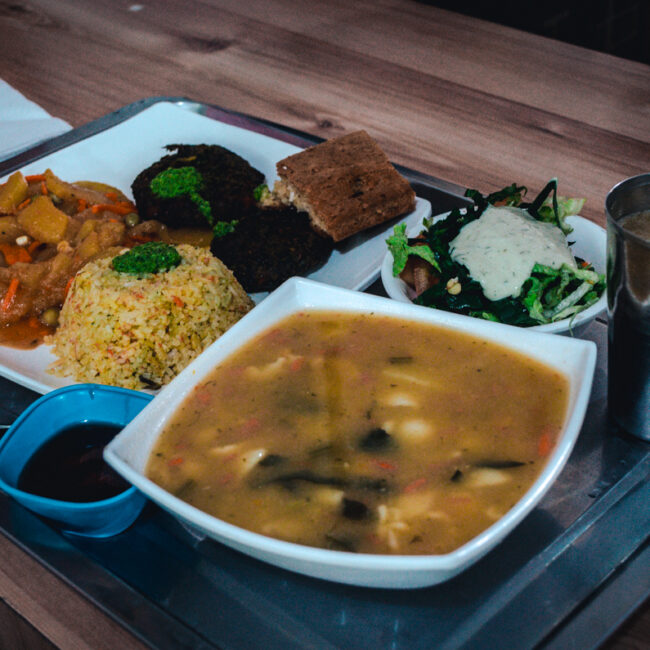
Vegan Restaurants Bogota: Your Guide to The Best Hotspots!
Do you want to receive my latest finds on conscious and sustainable travel directly to your inbox? Subscribe here!
Stress-free
© COPYRIGHT TRAVELERS&DREAMERS, 2023.

Slow Travel Guide: The Best Slow Travel Destinations
by Melissa Giroux | Last updated Feb 19, 2024 | Budget Travel , Travel Tips
By now, you have probably heard of the latest travel trend, slow traveling.
Many backpackers and budget travelers enjoy slow traveling – spending a month or two in each place before moving on.
In the past few years, many travelers are now opting to travel to fewer destinations and stay in each one for longer.
So what exactly is slow traveling, how do you do it, and which countries should you do it in?
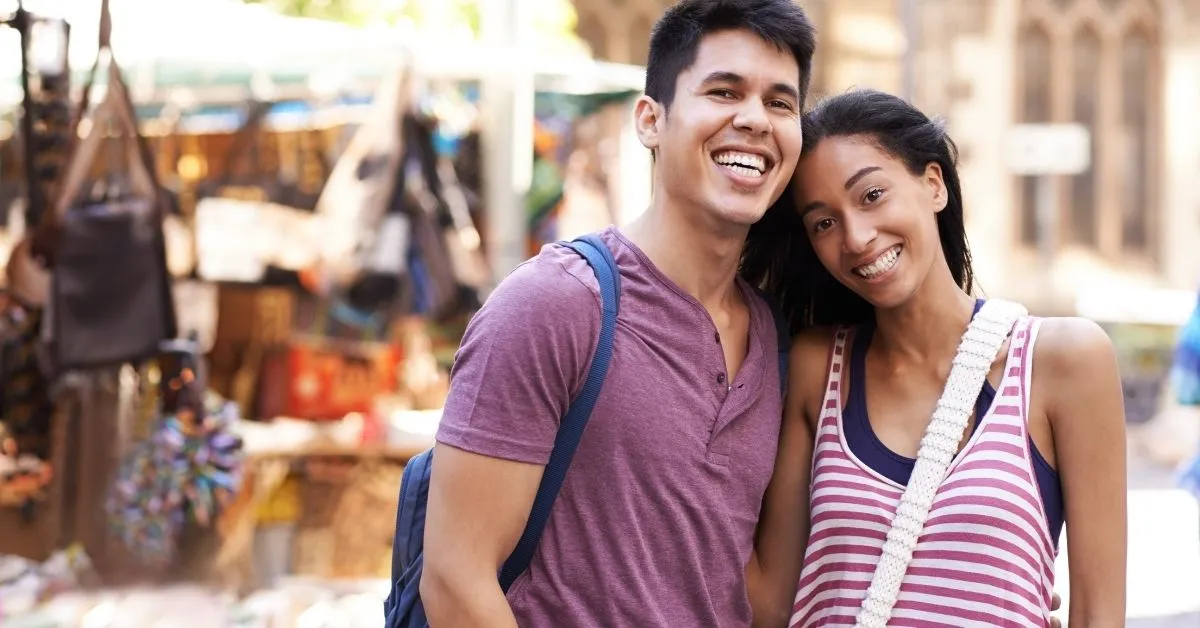
What Is Slow Travel?
Most backpackers typically seek to visit as many destinations as possible on a trip. Therefore, they choose to spend a few days in each place, seeing only the highlights before moving on.
By traveling in this way, you can visit around ten or so spots on a one-month trip, swiftly getting through your bucket list.
A slow traveler typically spends longer in a destination than a traditional backpacker.
Slowing down your trip in this way allows you to experience each place on a deeper level, learn more about the culture, and even get involved in the community.
A slow traveler who spends one month in a particular city will have a completely different experience than a backpacker who passes through for a weekend.
Slow traveling allows you to get a greater sense of life in other parts of the world. By spending a few weeks to a few months somewhere, you may feel more like you temporarily live there rather than on vacation.
The additional time allows you to explore more of the city and the surrounding areas. You are also likely to do more ‘local’ activities than just the tourist attractions.

How To Slow Travel
Slow travel is ideal for anyone who wants to travel for longer. However, it can seem that a one-year trip would be much more of a financial investment than a one-month vacation.
Therefore, many travelers worry that they will run out of money if they travel slowly like this.
However, there are ways that you can slow travel around the world without spending more money than you would on a shorter backpacking trip.
Here are five tactics you can use to travel slowly on a budget.
Visit Destinations During Low Season
We slow travel to break away from the traditional tourist mindset.
Therefore, to see a destination differently and save money, I recommend planning your trip so that you visit each destination in the low season, or at least towards the end of the high season.
As you know, hotels, tour operators, and even restaurants raise their prices at the beginning of the high season in anticipation of flocks of tourists.
However, as the season draws to a close and the crowds leave, prices come back down. So, arriving at this point is a brilliant idea if you want to travel on a budget.
Not only will you get better deals everywhere in the off-season, but you will also experience a much more peaceful and relaxed atmosphere.
Without the tourist crowds, it’s much easier to see a city for what it truly is and integrate yourself into the community.
However, the low season can mean extremely high temperatures in some parts of the world. Or, like in many tropical countries, the low season corresponds to the rainy season.
Even so, tropical rainstorms are usually short and heavy and don’t last all day. Therefore, you will still have plenty of opportunities to enjoy your time there.
Spend (At Least) One Month In Each Place
I recommend staying in each place for one month. If you’re used to staying just a few days in each location, one month may seem very long.
But I promise you, it is not. Aside from slowing down and exploring at a leisurely pace, you can snap up great accommodation deals if you commit to staying for a month.
You can usually get monthly discounts at hotels and Airbnbs. However, you might be able to rent a studio apartment for one month for even cheaper.
You’ll also be able to save money on car or scooter rentals. Usually, rental companies have better deals for long-term rentals.
Live Like A Local
To keep your day-to-day costs low, look at and copy how the locals live.
Although the western restaurants may feel familiar and comforting when you’re in a foreign land, the food in these restaurants is often 5 times the price of local eateries.
While it’s OK to treat yourself to home comforts once in a while, doing so daily will seriously dent your budget.
Some local restaurants also aim more towards tourists than locals, so prices will be higher. An easy way to find a proper local restaurant is to look for where you see the most locals eating.
Unless you’re traveling in Asia or South America, where eating out is extremely cheap, you’ll probably want to cook your own meals too.
Visiting food markets and buying groceries is a brilliant way to experience local life and keep your daily spending under control simultaneously.
PSSST. Want to get FREE accommodation in exchange for work?

Choose Land Travel Instead Of Flying
Traveling without any time restraints opens up the opportunity to travel via different (and cheaper) modes of transport.
Instead of flying, look into the possibilities of traveling between destinations via car, bus, or train.
Yes, the journeys will be much longer and less comfortable than taking a flight.
However, you could save a considerable amount of money. Plus, traveling by land allows you to see very rural parts of the country.
Volunteer In Exchange For Accommodation
One of the best ways to slow travel around the world on a budget is to volunteer in exchange for free accommodation and food.
For example, many hostels will let you stay for free if you spend a few hours each day cleaning the dorms and common areas.
While it’s not glamorous work by any means, the money it will save you could allow you to double the length of your trip!
Many other ‘ volunteer for accommodation ‘ options are available if you’re not a fan of the hostel environment. I recommend using a trusted platform like Worldpackers to find opportunities.
Worldpackers vet and verify all the ads posted so you can rest assured that the placements are legit and trustworthy.
On Worldpackers, you can find community projects run by local organizations or NGOs. This is a fabulous way to get involved in the community and make a real difference during your time there.
Volunteering on these kinds of projects can bring real meaning and purpose to your trip, with the bonus of having free accommodation, meals, and other benefits.
There are also work exchange placements in schools, where you will get to teach English to underprivileged children.
Or, if you want to get in touch with nature, you can volunteer on a farm, an eco-lodge, or a campsite.
Want to learn more? Read our Worldpackers review .
GRAB YOUR DISCOUNT ON WORLDPACKERS
Best Destinations For Slow Traveling On A Budget
Now, let’s talk about the best destinations for slow travelers.
United States
The great news is, if you’re based in the US, you don’t need to leave the country to travel.
The USA’s diverse states and landscapes make the country perfect for slow traveling.
What’s more, you can take scenic road trips from one destination to the next without having to splash out on any expensive flights.
However, the downside of traveling in America is that it is generally more expensive than in other parts of the world. Even so, one way to significantly cut your costs is to volunteer for accommodation at each destination.
Worldpackers has over 150 US volunteer programs on its platform, ranging from hostel work to homestays to farm work. Some unique opportunities you can get involved in in the USA include:
- Caring for abandoned and neglected horses in Reeds
- Working in a hostel bar in Lake Tahoe
- Volunteering on a yoga retreat in Hawaii
- Browse more opportunities here
South America
South America is a slow traveling paradise for those on a tight budget, dance lovers, and anyone looking to learn Spanish.
The continent is exceptionally cheap, both to travel around and for day-to-day expenses. Plus, South America is just as diverse as North America.
Slow traveling in South America presents a wide range of potential opportunities.
For example, you can trek Machu Picchu, explore the Amazon, party in Rio de Janeiro, and learn to salsa in Cartagena.
With so much to do and see here, you’ll undoubtedly want to extend your stay. You will find many brilliant charity organizations working across the continent.
They are always keen to offer free accommodation and meals to anyone who helps them out.
In fact, South America is one of the easiest parts of the world to find volunteering opportunities in.
For example, Worldpackers has over 1000 listings for volunteer placements in Brazil alone! You can:
- Learn about sustainable farming in Brazil,
- Paint artwork in a hostel in Chile
- Help to build an Earthship inspired art studio in Argentina
- Take care of the stray dogs in Peru’s Sacred Valley.
Asia is an incredible place to slow travel. You can take your time to experience the unique way of life in each Asian country and give some much-needed help to the communities.
Asia is also full of beauty, and short backpacking trips often miss out on so much. By slow traveling, you can get off the beaten path more and discover some of the hidden gems of this vibrant continent.
If you’re a native English speaker, you will find hundreds of volunteer opportunities to teach English to underprivileged kids in Vietnam, Cambodia, India, and many more countries.
There is also plenty of charity and community work that you can get involved in where you will actively see your help making a difference.
Some cool and meaningful volunteer placements you can find on Worldpackers include:
- Working with Autistic children in Ha Noi, Vietnam
- Teaching yoga in the Philippines
- Caring for stray animals on Thai island
- Volunteering in an orphanage in Nepal
- Browse opportunities here
Australia is one of the most loved backpacking destinations worldwide. The country offers so much natural beauty, tons of adventure, and plenty of once-in-a-lifetime experiences.
However, traveling around Australia and taking trips to the Great Barrier Reef, Whitsunday Islands, and Uluru can quickly become costly.
Many backpackers in Australia fall in love with a particular town or city and begin volunteering in hostels, enabling them to extend their stay.
It’s easy to find hostels that will let you volunteer in exchange for a bed in a dorm.
However, there are also other types of volunteering options available that offer a more authentic Aussie experience.
For example, on Worldpackers , you will find opportunities to:
- Help on farms in Western Australia’s wine regions
- Care for llamas in the Southern Tablelands of New South Wales
- Clean the campgrounds on the gorgeous South Stradbroke island
There are so many wonderful European countries worth visiting, all with their own unique heritage and charm.
There is so much to see, like the lush green English countryside, Portugal’s medieval cities, Italy’s beautiful wine regions , and the immense Swiss Alps.
Therefore, it is essential to travel slowly through Europe.
However, like the USA, Europe can be an expensive continent to travel around. Therefore, volunteering for accommodation is a helpful way to explore more places while controlling your expenditure.
There are so many fun volunteer opportunities on offer in Europe. Many help the environment, too, such as rejuvenating a forest in Portugal.
Other unique European volunteer placements on Worldpackers include:
- Au pairing in France
- Leading pub crawls in Croatia
- Living and helping on a yacht in Montenegro
- Taking care of reindeer in Norway
Final Thoughts On Slow Travel
As the travel industry finds its feet again, many parts of the world choose to keep additional entry requirements in place.
Therefore, it’s the perfect time to travel slowly, spend longer at each destination, and volunteer for a good cause.
And to help you have the best slow travel experience, we’re giving you $10 off your next Worldpackers membership .
Want to learn more about volunteering abroad? Read one of the following blog posts:
- Hostel work
- Workaway vs Worldpackers
- Worldpackers promo code

MY TOP RECOMMENDATIONS
BOOK HOTEL ON BOOKING.COM
BOOK HOSTEL ON HOSTELWORLD
GET YOUR TRAVEL INSURANCE
LEARN HOW TO START A TRAVEL BLOG
LEARN HOW TO VOLUNTEER ABROAD


What is Slow Travel? | A Guide To Sustainable and Mindful Tourism
How well can you truly understand a place in just two days packaged deals, mass tourism, and swift travel may allow us to hop between multiple locations in a short span, but we barely get to connect and experience a place. slow travel challenges this notion, advocating for a mindful and immersive approach to sustainable tourism. here's an insight into how it works..
To receive the Luxiders newsletter, sign up here .
2 days, one night. Next destination. 3 days, 2 nights… next aeroplane. After a two-week vacation, we had the opportunity to explore five different countries. While this rapid exploration allows us to experience diverse places, it comes with social and environmental consequences. Global tourism contributes to 8% of greenhouse gas emissions , with one significant factor being the rising number of flights and various modes of transportation that take us to numerous destinations in short periods. As many people rush to a single place, we also contribute to overcrowding. Additionally, it is hard to connect with a place, its community, and its essence in just a couple of days. Recognising these challenges, slow tourism is revolutionising how we approach travel and offers a solution to create meaningful experiences. Through this approach, the journey is as important as the destination.
WHAT IS SLOW TRAVEL
Slow travel is not bound by a rigid definition or specific durations for staying in a place. Broadly, it embraces the idea of setting our own pace and travelling comfortably. The essence lies in moving away from the stress of trying to cover all the highlights of a destination within a short timeframe, only to rush to the next spot. In contrast, slow tourism advocates for visiting fewer places, prolonging our stay, and truly getting to know the essence of each location. It promotes a more authentic and meaningful travel experience, fostering a genuine appreciation for the intricacies and nuances of the places we explore.
TRANSPORTATION
The more unnecessary transportation we can avoid, the better. When travelling to multiple locations, planes often provide the fastest mode of transportation. However, if we can opt for trains or greener modes of transportation that’s better. Although these alternatives might take longer, with strategic trip planning we can space out travel time, alleviating the pressure to reach a destination urgently. By those means, cruise lines are generally off the list.
When exploring a destination, organised tours often whisk us through as many points of interest as possible in a single day. This is a suitable option when time is of the essence. Nonetheless, in the context of slow travel, where time is more flexible, we have the freedom to opt for a more effortless pace. Walking or choosing eco-friendly, non-motorised transportation like bikes becomes an option. While this may mean visiting fewer spots, the absence of pressure to rush to the next location allows us to fully immerse ourselves in each place.
Naturally, if a particular location resonates with us, we can choose to spend the entire day there. Conversely, if it doesn't capture our interest, we can continue walking or cycling to the next destination. Furthermore, if we find a place that we genuinely love, where we feel comfortable, relaxed, or simply captivated by its beauty, there's always the option to return the next day.
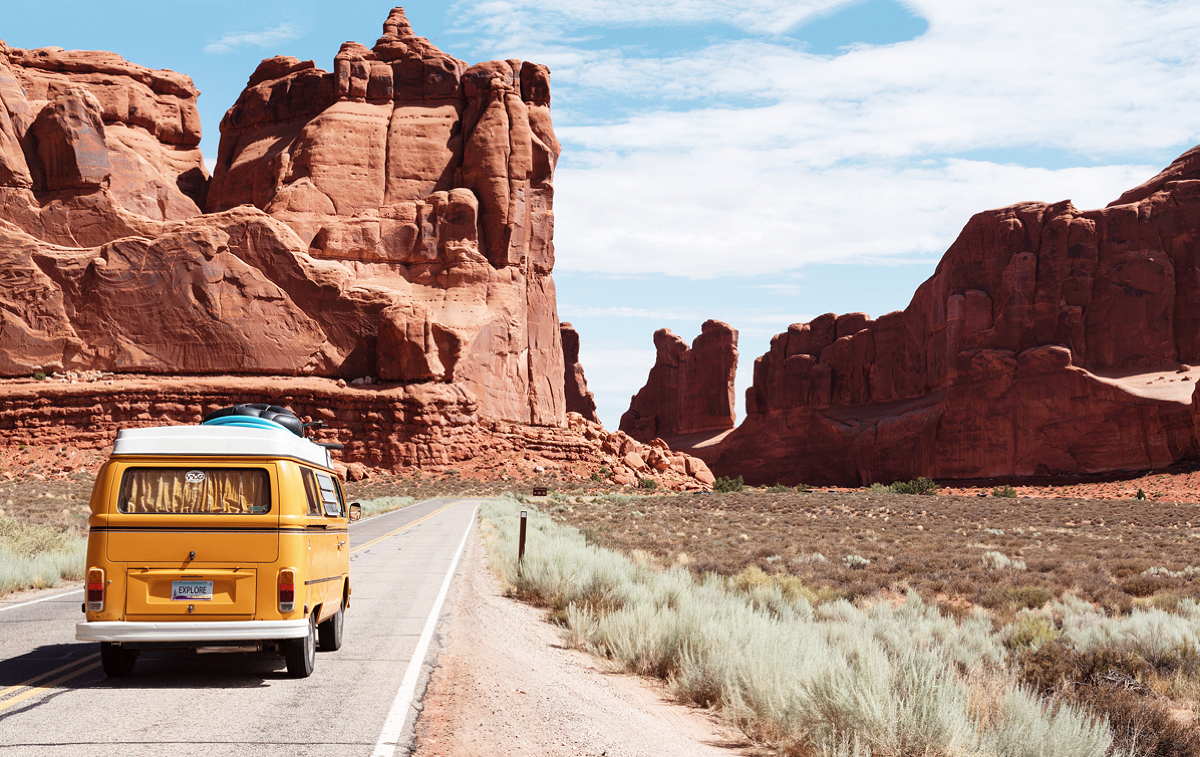
© Dino Reichmuth via Unsplash
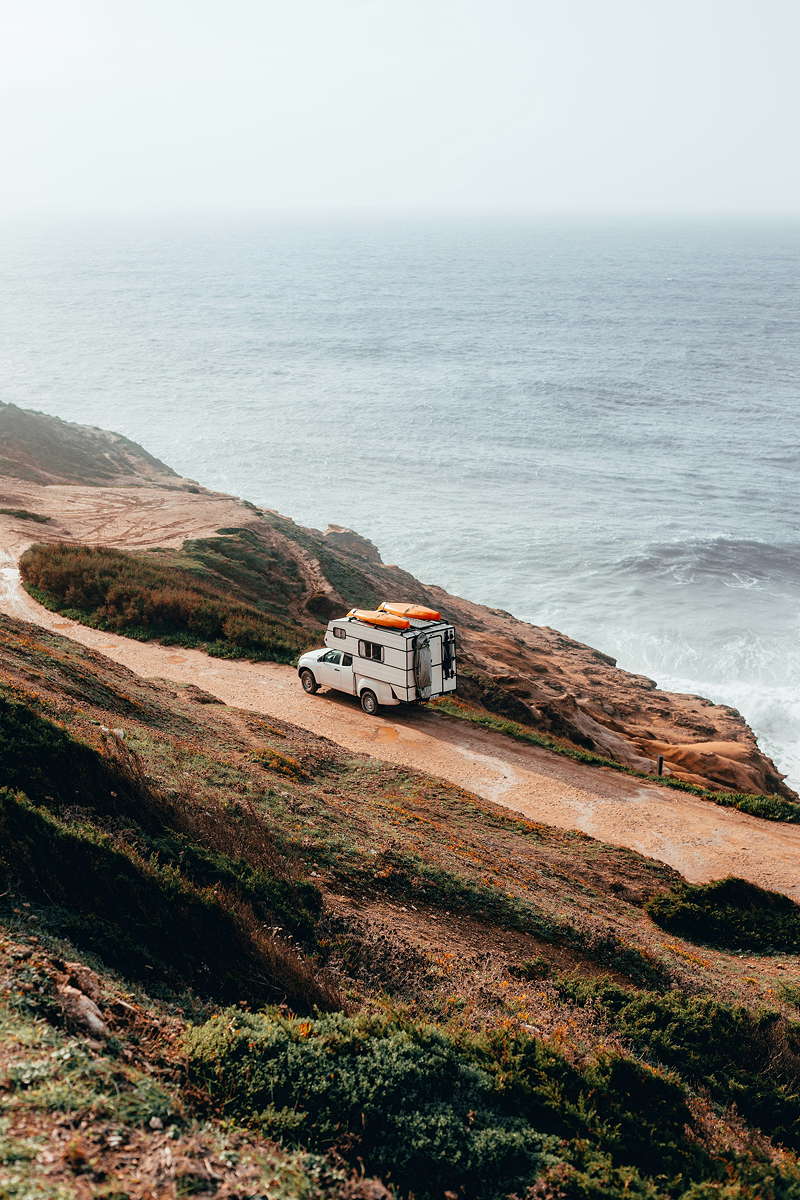
© Toms Rits via Unsplash
SLOW TRAVEL IS ABOUT IMMERSIVE EXPERIENCES
By this point, some may be wondering: What do we do for an extended period in one place? Slow tourism encourages us to engage in activities we genuinely enjoy or experiment with new ones. Particularly, it focuses on experiences rather than simply ticking off a checklist of must-see places in a country.
BECOMING A LOCAL
Slow travel extends beyond supporting the local community; it involves understanding and actively participating in it. If you're unsure where to begin, immerse yourself in cultural gatherings—attend local festivals, events, and community activities to gain a deeper understanding of the community. Explore the local art and music scene to appreciate the cultural creativity.
Simply stroll through the neighbourhood, taking in the details. If a place captivates your curiosity, pause, and invest the time to explore and understand it. Often, these moments lead to discovering hidden gems like restaurants, shops, bars, and cafes. Embrace everyday life by exploring local markets and points of interest, providing a glimpse into the unique essence of your destination.
Taking the time to learn local phrases and words can open doors to meaningful interactions. As you journey through different points of interest, engage in conversations with residents to forge connections and gain insights into the community.
CONNECTING WITH NATURE
Slow travel is a fantastic opportunity to strengthen our bond with nature. This method allows us to spend more time exploring hiking trails, visiting natural reserves, and camping in peaceful surroundings. It's the ideal time for adventurous spirits to try kayaking, canoeing, snorkelling, or paddle boarding. On the contrary, ff a slower pace is preferred, birdwatching, relaxing by the beach or lakeside, strolling through botanical gardens, or stargazing are all excellent possibilities. Certainly, a photography expedition is a fascinating option for photography enthusiasts. The idea is to participate in activities we enjoy while also stepping outside of our comfort zone and attempting activities that develop a meaningful connection with the place.
Moreover, for a truly mindful travel experience, consider embracing the Japanese concept of shinrin-yoku , which means taking in the atmosphere of the forest . Also known as Forest Bathing, this concept encourages us to immerse ourselves in the environment to reap the therapeutic benefits of nature. Instead of emphasising physical exercise, the idea is to concentrate on the sensory experience and engage all our senses in nature—simply being present in the moment. Evidently, various studies demonstrate the physiological and psychological benefits of the practice. The practice can help decrease stress by lowering cortisol levels, heart rate, and blood pressure. Also, it enhances feelings of happiness, and creativity, which contribute to a healthier immune system.
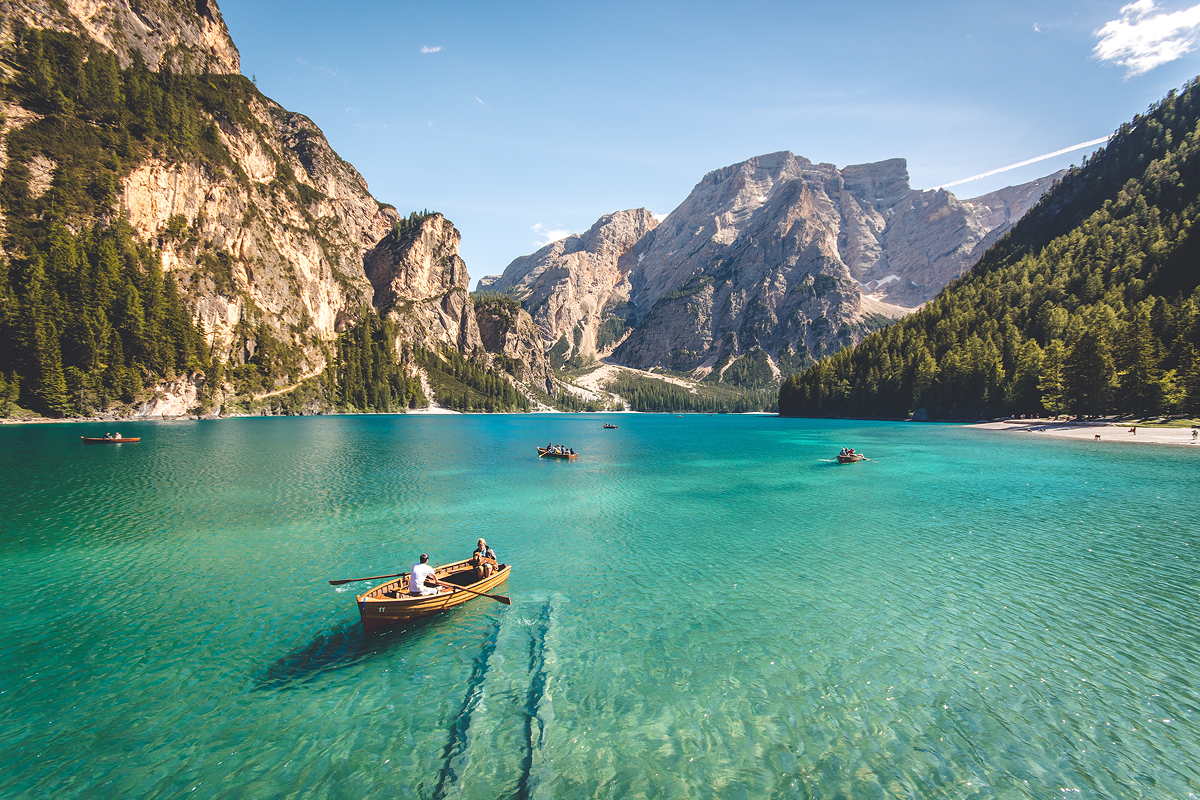
© Pietro de Grandi via Unsplash
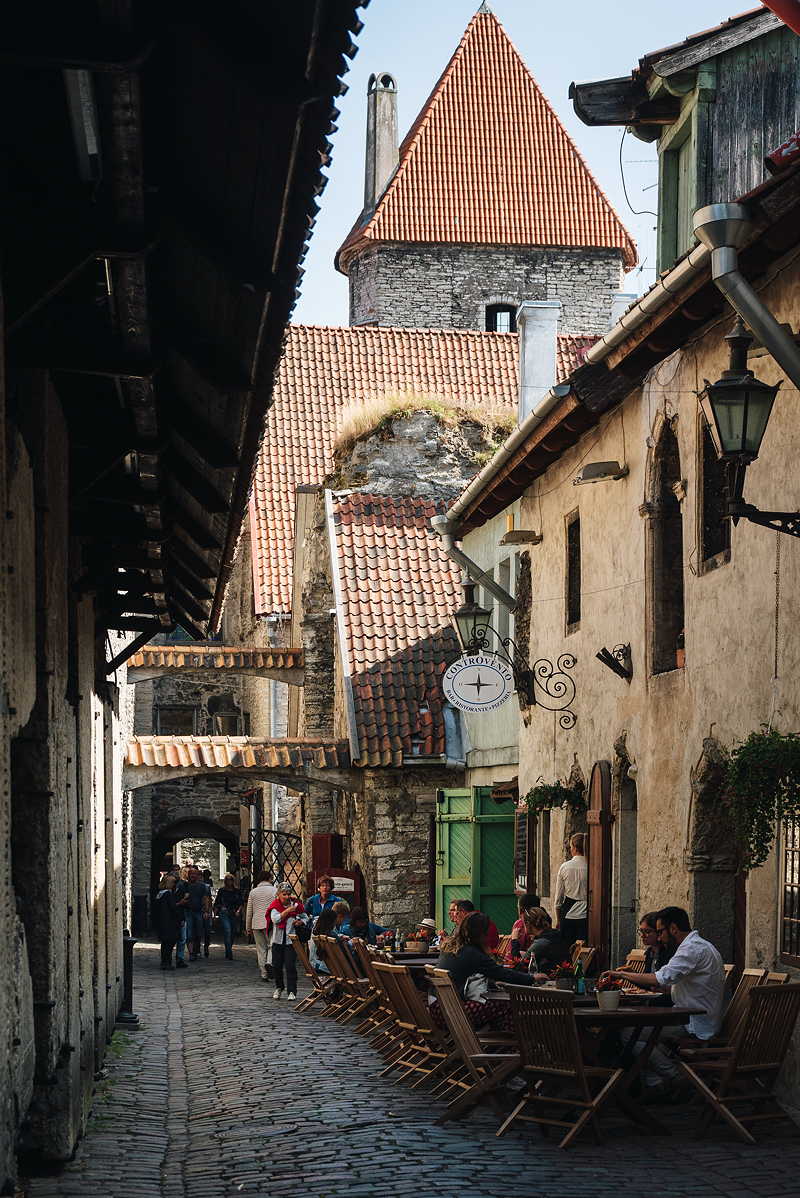
© Nick Night via Unsplash
USEFUL APPS FOR SLOW TRAVEL
Various apps can help us when engaging in slow tourism. First, Spotted By Locals offers city guides to experience cities like a local and discover hidden gems. Currently operating in 82 cities, the app offers insider tips, personalised recommendations, and up-to-date articles. Through Spotted By Locals, we can avoid overcrowding and discover places only locals know about. Definitely, it is a great tool to connect with the community, taste authentic food and contribute to the local economy.
Meanwhile, Geoguida is a navigation app tailored for slow travel. The travel app is designed to enhance walking, hiking, and cycling experiences by guiding travellers efficiently at a leisurely pace. It provides points of interest, attractions, routes, and valuable information about the local area. The app helps us get to know the area better while also promoting sustainable and responsible travel practices.
For nature enthusiasts, we suggest using Plant Net —an app that enables us to identify plants through smartphone pictures. This citizen science project is designed to foster a greater understanding and appreciation of plant biodiversity. Developing a deeper connection involves understanding the local flora and their roles in the environment. If we are already captivated by nature, we can completely submerge ourselves in the natural world by slowly learning the intricacies of the flora surrounding us. Additionally, actively contributing to the project is possible by sharing personal plant observations.
BEST BOOKS FOR SLOW TRAVEL
If we are new to the concept, a great place to start is by reading “Slow Travel: A Movement” , by Penny Watson. The journalist and award-winning travel writer draws from experiences to encourage us to embrace slow tourism and build meaningful connections. The insider tips, and company and location recommendations put us to a good start for our next journey. Additionally, the philosophical approach of the book delves into understanding deeper concepts like cultural immersion and environmental sustainability.
For travel inspiration, we suggest "Unforgettable Journeys: Slow Down and See the World" by DK Eyewitness. Featuring 200 once-in-a-lifetime experiences worldwide, from Antarctica to Zambia, the book is richly illustrated and recommends exploring by foot, bike, car, rail, or water. Emphasising the beauty of the journey itself, the book encourages relishing the travel experience rather than solely fixating on reaching the next destination.
Furthermore, a great book to enhance our understanding of mindful experiences is “The Art of Slow Travel” by writer and slow traveller Bhavana Gesota. For the author, the path is as important as the destination. Gesota writes from personal experiences to showcase how deeply we can connect and experience each place we visit. The passionate writing engulfs the reader showing us that when we travel, we can also go through an internal transformative journey if we are mindful, slow travellers. It is all about savouring each location and experience at our own pace.
ONE FINAL TIP
Take a breather. It's perfectly fine to take a day off, or even two. Slow travel frees us from the need to hurry and experience everything in a rush. Engaging in mindful relaxation can significantly enhance our appreciation for the next adventure. Constant exploration and discovery can be draining. Often, when we find ourselves exhausted during travel, we push through simply because "we're already here, and we need to visit." However, fatigue can diminish how much we enjoy a destination.
Taking the time to rest is essential; after all, we're not machines. Seek out a peaceful spot, spend a day at the beach, or treat yourself to a visit to a local spa. Indulge in activities that bring relaxation. When we plan for slow travel, we afford ourselves ample time for stress-free enjoyment and the chance to rejuvenate before embarking on the next adventure. Remember, seeing the same place with fresh eyes and a rested mind can provide an entirely different, and more enjoyable, experience.
+ Highlight Image:
© David Marcu via Unsplash
Francesco Witt
Luxiders Magazine
Related posts
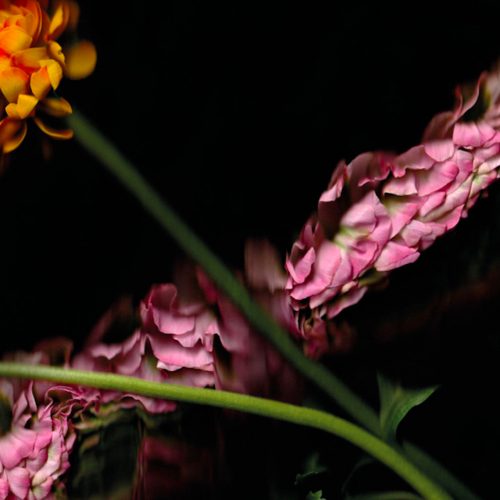
The Innocence
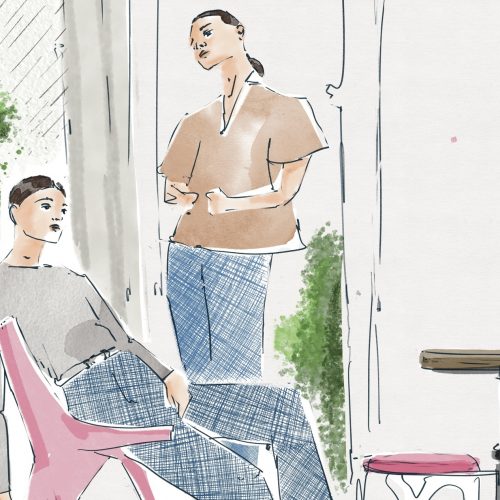
- Sustainable Fashion
The Reality Behind The Denim Industry

Are Your Beauty Products Respectful With The Environment?

Why We Should Be Conscious About Queerbaiting

Slow Travel: Embracing a More Mindful Journey
Slow travel is a great way to explore. Check out this guide on the benefits of slow travel and learn more about different ways to slow travel the world.
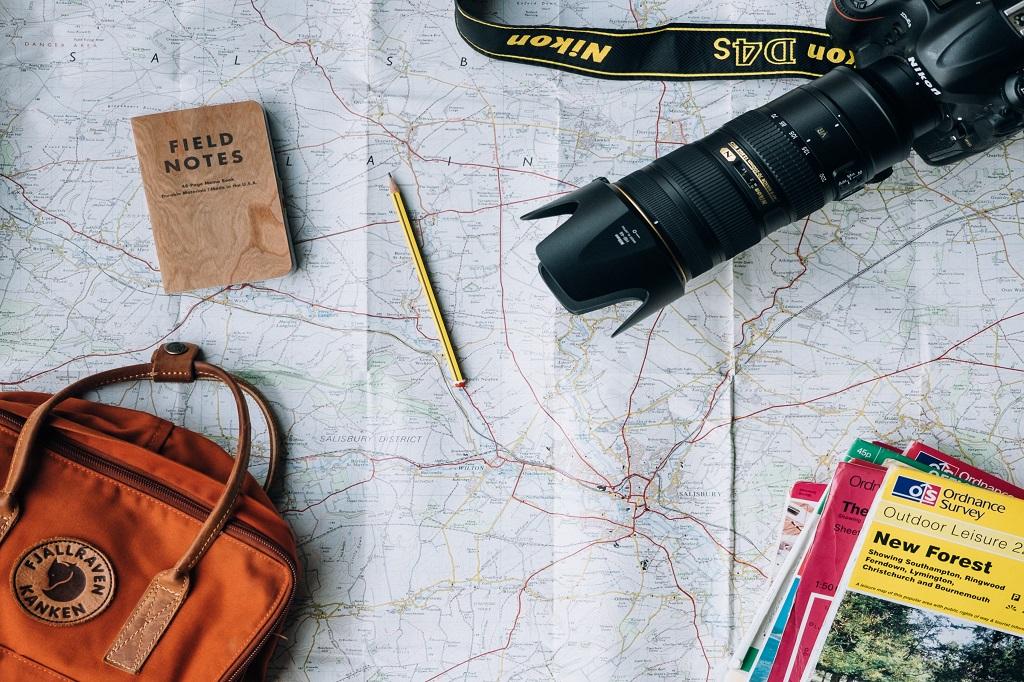
Ever since the advent of mass travel, people have pondered how to get more out of their travel experiences. Being able to hop on a plane or train to get to a new city or new country saved people a lot of time since they were able to get to their destination faster. It also took away some of the things that make travel so special and life-changing. Individuals were able to travel more frequently but generally stayed for shorter periods. They could travel across a continent in a few hours but missed out on all of the local cultural exchanges in between.
This, combined with the obvious issue of sustainability and environmental degradation, has made the idea of slow travel become much more appealing to many people. This approach to travel has an emphasis on connecting with people and local cultures while immersing yourself in the everyday life of the destination. It’s a much more sustainable way of traveling, and it puts much less pressure on limited resources than other forms of travel.
Slow it down with Let’s Roam .
Here at Let’s Roam, we welcome every opportunity to slow things down a bit and enjoy the precious time we have with friends and family. We hope that everyone has the opportunity to do the same. To help, we’ve compiled a collection of fantastic resources to help you turn every ordinary day into something extraordinary. With hundreds of app-based scavenger hunts , virtual games, and travel guides on the Let’s Roam Explorer blog , we’ve got everything you need for a fantastic adventure!
Learning the Art of Slow Travel
Perfecting the art of slow travel can help you have a richer travel experience than you ever thought possible. It can give you a deeper understanding of the world around you and the role that you play in it. To help you get started on this journey, we’ve compiled a list of burning questions regarding the slow travel movement.
Disclaimer : I’ve been a digital nomad/slow traveler for the past two and a half years, and I was freelancing for the first year and a half. For the last year, I’ve been holding a full-time job, working as a freelance writer, and traveling full-time. This includes both slow travel and a faster form of travel depending on the destinations I was visiting. This article incorporates both my slow travel experiences as well as those of my friends who have followed a similar path.
What is slow travel?
In its simplest form, slow travel just means staying in each place for longer periods. This is often considered upwards of ten days. The more complex definition describes slow travel as something that “emphasizes connection to local people, cultures, food, and music. It relies on the idea that a trip is meant to educate and have an emotional impact, while remaining sustainable for local communities and the environment.” According to the Journal of Travel Research , during slow travel, “the traveler’s main goals are relaxation, self-reflection, escape, novelty seeking, engagement, and discovery.”
Slow travelers usually visit fewer destinations and spend more time in each one focusing on experience-based activities. Cultural interactions and outdoor activities tend to be more important to them than sightseeing and to-do lists full of tourist attractions. There is also a genuine desire to understand the nuances of each destination and make conscious decisions about their travel experience. In a nutshell, it is valuing quality over quantity when it comes to travel. It’s the polar opposite of organized tours that pack in a full schedule of sightseeing as you zoom from place to place. As the name suggests, it means traveling at a slower pace and absorbing the sounds, smells, and tastes all around you.
The slow travel movement is often connected with the slow food movement which began in Italy back in the 1980s when a group of activists came together to protest a McDonald’s opening near the Spanish Steps—one of Rome’s most popular heritage sites. The purpose of the movement was to protect regional traditions and values. It also put emphasis on quality food over fast food and the slower pace of life that Italians are proud of. It has also become synonymous with sustainability, wellness, and self-care.
Is the slow travel movement a new “trend”?
Absolutely not. Slow travel is actually where we started! Before the invention of planes, trains, and automobiles, people mostly traveled on foot or with the aid of animals for thousands of years. The trend for fast travel is actually a recent phenomenon. To put it into perspective, cross-country road trips were still being done in covered wagons 150 years ago. This meant that their journeys were much, much slower, taking months or even years to cross continents rather than a matter of hours.
In saying that, there’s been a renewed interest in traveling slowly in order to attain a richer travel experience. While much of the current slow travel trend is attributed to the COVID-19 pandemic, there’s been an emerging movement to a kinder approach to travel for many years in terms of the environment and local communities.
The biggest change is actually the number of people that could travel slowly increased exponentially when remote working became more widely available. Many people jumped at the chance to go back to some of their favorite countries and learn more about them. Sadly, as more and more companies are expecting their employees to work in the office, the number of people from the United States that are currently traveling may decrease. Without a doubt though, this “new” form of travel is definitely here to stay!
What are the benefits of slow travel?
To be honest, the list is endless! On a personal level, slow travel is much, much easier to do long-term. As great as it sounds to travel full time, there is always a risk of getting burnout. Think about how exhausted you feel after a two-week vacation where you’re hopping from place to place. Now multiply that feeling by like 100. Only then can you can get an idea of how tiring it is to do this long-term while working remotely.
It can also save you a lot of money. When you travel slowly, you generally cut down significantly on transportation costs as you are flying, bussing, and driving much less. You’re also usually able to get better deals on accommodation if you’re willing to commit to staying for at least a week. The prices drop even more if you plan on staying a month. Many digital nomads choose to stay in destinations for at least a month at a time because of this.
On a broader level, slow travel is so much better for the environment. As many of us already know, the environmental impacts of travel are substantial. Much of this is due to air travel and single-use plastic consumption at a destination. When you travel slowly, you usually reduce the number of flights that you take. You also often rely more on going to grocery stores and cooking at home than say, grabbing a quick meal at McDonald’s, which also helps reduce the amount of non-recyclable garbage that you produce.
Slow travel also tends to help the local economy much more than staying in places for a short time. Slow travelers generally spend more money at local shops, restaurants, homestays, and guest houses. They also spend less at international fast-food chains or branded hotels. Rather than going into the coffers of a big international corporation, it will instead end up in the bank accounts of local people.
What are the cons of slow travel?
One of the biggest problems with traveling slowly is that it can get lonely sometimes, especially if you’re a solo traveler. Imagine moving to a new city every few weeks and trying to develop a social life. You sit in cafes and restaurants watching other people with their friends and family, and you may find yourself second-guessing your travel choices.
Traveling quickly can often make it easy to forget that you are lonely as you’re focused on getting from place to place, organizing your travel plans, etc. When you travel slowly, you have a lot more downtime to reflect. You may find yourself feeling a bit out of your comfort zone if it’s your first time traveling alone for an extended period of time. You really need to be comfortable being by yourself or with just one or two other people.
What are the different types of slow travel?
Slow tourism is traveling at your own pace in a way that is meaningful to you.
Just like the fact that people travel for a wide array of reasons, people also do slow travel for different reasons. Some of the most common reasons that people may choose to do slow travel include spiritual tourism, culinary tourism, volunteer tourism , or simply remote work options.
Different budgets impact the way that people travel. People who are traveling on a shoestring may choose to volunteer in hostels in exchange for free accommodation or rent inexpensive Airbnbs or vacation rentals. They also tend to go to free events or find ways to make their money stretch as long as possible while still enjoying cultural experiences. People with a larger budget can choose to stay in better quality accommodation or even to use a hotel as their home base. They also tend to take advantage of the services offered by tour operators. These local experts can facilitate unique activities that may be off-limits to others.
Is slow travel the same as digital nomading?
In many cases, yes. Every digital nomad has a slightly different lifestyle based on the way that they earn money, the passport that they hold, and their own preferences. However, by and large, most digital nomads are also slow travelers. They live in apartments, go grocery shopping, attend cultural events, and generally live a pretty similar lifestyle to many of their local counterparts.
I personally straddle the gap between extreme travelers and digital nomads. I will often travel to off-the-beaten-path countries like Iraq, Afghanistan, Pakistan, Sudan, etc. for a few weeks. Then I relax a bit, get caught up on work, and try to be as stress-free as possible for a while. This was the pattern that I followed for several months in 2021 and 2022. During this time, Istanbul and Cairo as bases between trips. This was a very different experience than someone slow traveling through Mexico or digital nomading in Bali. However, it shows just how versatile this lifestyle is.
Meanwhile, I am friends with travel bloggers and vloggers who will rent a place for a month and get as much work done as possible. They will then spend a few weeks traveling through a country. I also know people who will stay in destinations for months at a time. They’ll fully immerse themselves in the culture by taking language classes and attending local Couchsurfing or Meet-Up events. The great thing about slow traveling is that you can shape it however works best for you!
Is slow travel the same as sustainable travel?
Yes and no. There’s definitely a lot of overlap between slow travel and sustainable travel. They aren’t always the same, though. Slow travelers and sustainable travels tend to place value on the same things. While slow travel is almost always sustainable, sustainable travel isn’t always slow.
What type of slow travel is best?
This really depends on you and what you want to get out of your slow travel experience. If you’re traveling for a short amount of time (less than a month), you may want to base yourself in a few different cities across Europe or Asia. This gives you time to get to know your local cafes and bars. You may even start to recognize the people who work at your local grocery store. If you stay a little bit longer, you may even be able to know exactly where everything you need is located in the grocery store which is a big win!
If you’re planning on slow traveling for a few months and aren’t going to be working at the same time, you may want to consider joining a volunteer project or taking cooking or language classes. In certain destinations, you can even take part in spiritual retreats, yoga teacher training courses, and dance classes. Doing an activity allows you to meet more local people as well as other foreigners. In turn, this gives you more of a chance to develop more of a social life and a routine in destinations. By the end of it, you may find that you’ve learned an incredible amount about everyday life in a particular destination. This is particularly true when you think about what you would have experienced otherwise.
Is this possible to do long term?
Definitely! Many people have been doing it for years! If you’re able to work remotely and have a lot of time on your hands, you can always slow travel and combine it with short trips. This could mean basing yourself in Bangkok for three months, then taking advantage of the multitude of cheap flights on offer around Southeast Asia.
If you’re planning to hop between destinations, make sure to download the Let’s Roam app before you go! Here, you can access hundreds of scavenger hunts, art walks, ghost hunts, and pub crawls for destinations worldwide. This is a great way to get to know a new place and have a great time doing it!
I did this for four years while I was based in Hong Kong. I feel like I kind of got the best of both worlds. I got an in-depth look at life in Hong Kong and China. Meanwhile, I got a taste of Japan, South Korea, and many Southeast Asian countries. While I was definitely considered an ex-pat instead of a slow traveler, the same strategy is used by many long-term slow travelers. They can work their way around the world one region at a time. In a way, it’s kind of like being back in college. You have your major. Then you have all your electives that help you shape your education into exactly what you want.
Where can I find more information on slow travel?
Tons of social media channels provide insight into what it’s really like to slow travel and what new experiences lie in store for you. These may be influencers, travel bloggers, van lifers, conscious travelers, travel companies, or really anyone who has an interest in the slow travel movement. They can help you mentally unpack the art of slow travel and decide whether or not it is right for you. This will give you a deeper understanding of the pros and cons of slow travel. It can also show how to make slow travel a reality for you based on your unique circumstances.
Is this the end to bucket list travel?
It doesn’t have to be! Bucket list travel has been a driving force behind people rushing to certain destinations. However, the slow travel movement is certainly not the end of it. There just needs to be a slight change in focus. Rather than having a long list of tourist attractions, restaurants, or shops that you want to visit because you saw a photo of them on Instagram, try to prioritize having authentic experiences. Instead of going to the top-ranked places on Trip Advisor, go to the local food joint around the corner from your Airbnb. Skip the fancy clubs and go to the dive bars full of old men wearing sweater vests. After two decades of travel, I guarantee you these experiences are the things that you’ll remember for the rest of your life.
Are you ready to roam?
We hope that this article on slow travel has shown you the benefits of traveling more slowly and sustainably and that it has inspired you to try it for yourself on your next trip. As always, we would love to hear your feedback, and please let us know if there’s anything we may have missed!
If you want to read more information on slow travel, digital nomading , or any of the destinations listed above, make sure to head over to the Let’s Roam Explorer blog . This blog features hundreds of destination guides, must-see lists, and travel articles that can help you make travel planning much easier. Our team writes all of our blogs, and they’re full of first-hand travel tips that can save you time and money. Before you head out the door, make sure to download the Let’s Roam app . Here, you’ll have access to all of our fun-filled, app-based scavenger as well as great user-generated information.
Frequently Asked Questions
Slow travel simply means spending a lot of time in one place while immersing yourself in cultural experiences and everyday life. It’s generally more sustainable and fulfilling than other types of travel.
Many digital nomads are slow traveling their way across continents. They often spend one time getting to know a country or region before moving on to the next one.
You can slow travel even if you only have ten vacation days a year . You simply need to pick a destination that you really want to get to know. Check out the Let’s Roam Explorer blog for inspiration!
Honestly, there isn’t much of a difference! Slow travel and digital nomading are actually very similar. Most digital nomads are also considered slow travelers.
If you want to learn more information, check out the Let’s Roam Explorer blog . Here, you can find hundreds of areas on different forms of travel, interesting destinations, and much, much more!
Featured Products & Activities

- Embracing a Simpler Lifestyle: The Essence of Downshifting
- Gleaning and Food Recovery: Reviving Ancient Traditions for Local Community Bonds
- Making the Connection to People: The Heartbeat of the Slow Movement
- Mindful Living: Navigating the Pace of Modern Life
- Slow Schools and Slow Education: Bridging the Gap Between Academia and Life
The Essence of Slow Travel: Immersion, Connection, and Transformation
- The Rise of Slow Cities: An Echo of a More Grounded World
- Bioregionalism and the Slow Movement: A Return to Rooted Living
- Slow Weight Loss – Why its a better approach
- Economic Structures and the Ethos of the Slow Movement
- Slow Movement: Strengthening the Local Economy
- Slow Books: Rediscovering the Pleasure of Reading
- 5 Reasons Why SemaGlutide is Working Very Slowly
- Who Should Not Take Semaglutide | Risks & Warnings
- Does Semaglutide Make You Tired?
- Can Semaglutide Cause Diarrhea?
- PhenQ vs Semaglutide
- Does Semaglutide Cause Hair Loss?
In an era where bucket lists dictate travel itineraries and tourists hop from one landmark to another, a contrasting philosophy emerges – Slow Travel. It's not just about reducing pace but immersing oneself in the experience, forming genuine connections, and embracing the nuances of the journey.
The Heart of Slow Travel At its core, slow travel is an invitation to become part of local life, weaving oneself into the fabric of a community, its culture, and its daily rhythms. It rejects the whirlwind trips that leave you exhausted, opting instead for a more profound connection.
Engaging in local festivities can be a mesmerizing experience, drawing one closer to the community's heart.
Living, Not Just Staying The essence of slow travel is to live in a place, not merely stay. Instead of fleeting hotel visits, slow travellers often opt for holiday rentals that range from quaint cottages in the UK to agriturismos in Italy. These accommodations, equipped with essential amenities, offer the comfort of a home, enabling travellers to cook, relax, and live like a local.
The beauty lies in the details: shopping for groceries, daily interactions at the local café, or even casual chats with neighbors. Such interactions weave a richer, more intimate tapestry of memories than any rushed sightseeing trip ever could.
Slow travel isn't confined to bustling towns. Tranquil rural settings or serene beaches offer their own unique charm.
Deep Dive Exploration True to its name, slow travel encourages a gradual exploration. Instead of ticking off tourist hotspots, travellers immerse themselves in the immediate surroundings. Initial explorations might be on foot, expanding to bike rides and eventually venturing further, perhaps by train or car.
By prioritizing conversations over checklists, slow travellers often uncover hidden gems, from local stories to lesser-known spots, that standard tourists might overlook.
Engaging in traditional practices can be an enriching experience, revealing layers of a culture.
Beyond Just Sightseeing A significant advantage of slow travel is the time and flexibility it allows. It opens doors to unique experiences, be it volunteering at a local school, learning a new skill, or engaging in wwoofing. The concept of "voluntourism" melds travel with volunteering, providing travellers a chance to offer their skills in aiding local communities, making the journey both fulfilling and transformative.
Destinations Embracing the Slow Travel Ethos Recognizing the profound impact and potential of slow travel, some destinations are curating experiences tailored to the slow traveller. Slow Islands, for instance, champion not just the ethos of slow travel but also the gourmet delights of slow food.
Conclusion Slow travel is more than a trend; it's a transformative experience. It beckons travellers to dive deeper, form authentic connections, and return not just with souvenirs but with enriched stories and lasting memories. As the world becomes increasingly hurried, slow travel stands as a testament to the age-old adage: "It's the journey, not the destination."
Available now
How to explore the yoga lifestyle, by author name.
- Hospitality Industry
What is Slow Tourism? The next big hospitality trend
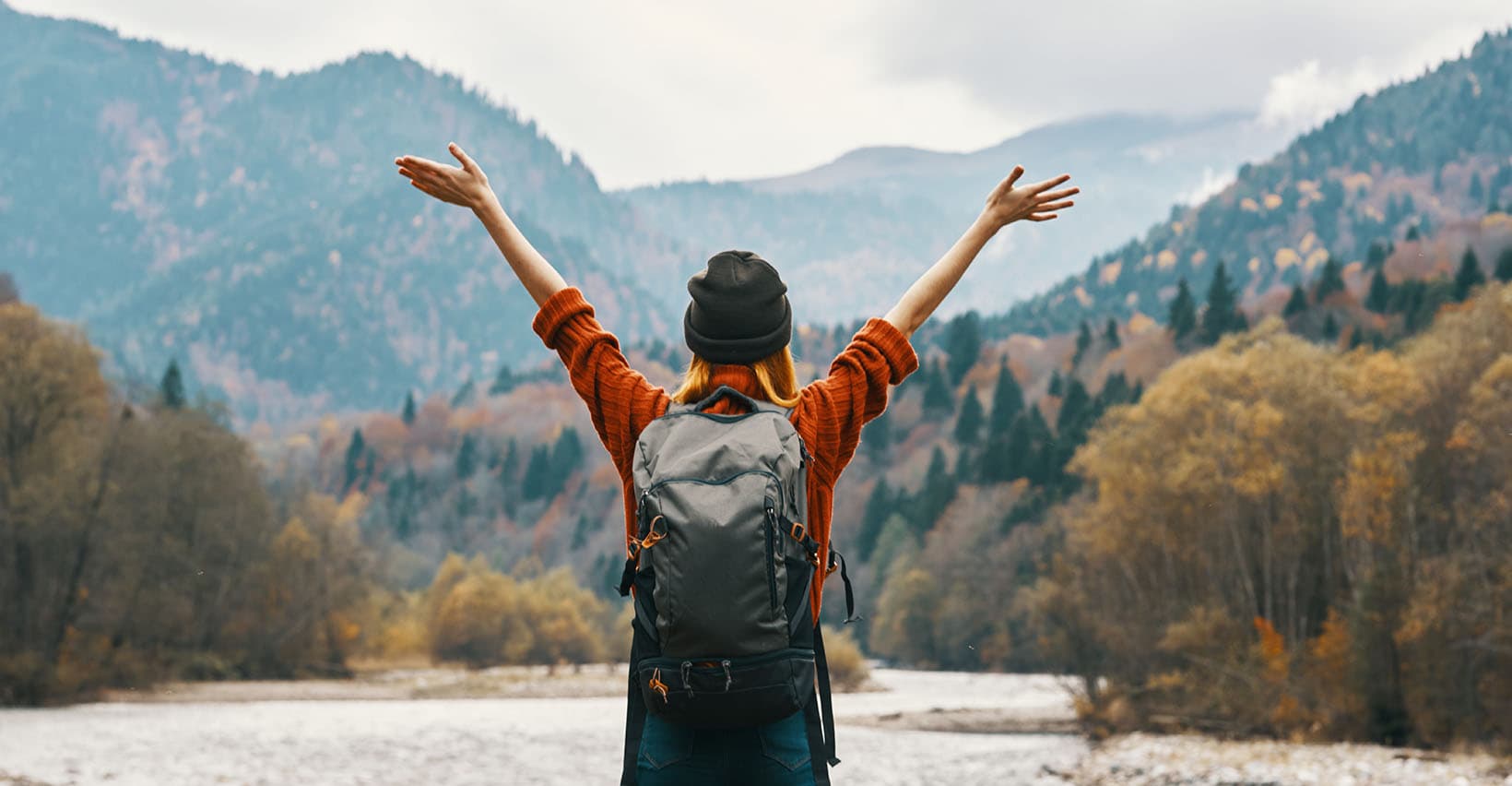
August 16, 2021 •
4 min reading
The trend of “Slow Travel” has become increasingly popular over recent years, however through COVID19 it has accelerated immensely and has almost become a new norm without people even realising. Slow tourism is forecasted to continue to grow in popularity, becoming an alternative to more traditional holidays and is estimat ed to grow at a 10% compound annual growth rate . Now what is Slow travel, where did it come from and how could hoteliers adapt?
The trend of “Slow Travel” has become increasingly popular over the past years, however through COVID19 it accelerated immensely and has almost become a new norm without people even realising. The crazed race to visit as many places as possible, which was influenced through renowned books like “1000 Places to See Before You Die” or through movies such as “The Bucket List”, is slowly becoming less popular. Slow tourism is forecasted to continue to grow in popularity, becoming an alternative to more traditional holidays with an estimated 10% compound annual growth rate.
What is Slow Travel?
The online definition describes it as an approach to travel that emphasizes connection to local people, cultures, food and music. It relies on the idea that a trip is meant to educate and have an emotional impact, while remaining sustainable for local communities and the environment.
Where did Slow Tourism come from?
This trend or better yet movement has been evolving through time and is connected to the Slow food movement. Slow Food was started by Carlo Petrini and a group of activists in the 1980s to resist the opening of a McDonald's near the Spanish Steps in Rome, with the initial aim to defend regional traditions, good food, gastronomic pleasure and a slow pace of life. The further popularity can be correlated with the growing focus on sustainability and self - care.
How can you travel “slower”?
Travelling slower involves transitioning from materialistic and consumerist luxury to wanting purposeful experiences and creating meaningful moments. People no longer want to have a schedule full of tours of classic sightseeing spots. They want to travel at their own pace while experiencing and tasting the local culture. A word used a lot when discussing Slow travel is “experience-based”. Experience-based travel can be accomplished in different ways, such as connecting with people, creating a community, experiencing local culture and making conscious decisions. These conscious decisions impact one’s own cultivation and regeneration as well as helping the environment by reducing your own global footprint.
“Slow tourism is characterized by reducing mobility and by taking time to explore local history and culture, while supporting the environment . The traveller’s main goals are relaxation, self-reflection, escape, novelty seeking, engagement and discovery.” - Journal of Travel Research
Prior to the pandemic global tourism hit record highs with 671 Million global international arrivals. Both the influence of the pandemic and these high numbers has motivated travellers to explore new destinations and lesser - known countries such as Azerbaijan, Bhutan, Georgia, Nepal and others.
How can hotels adapt to this movement?
There are simple approaches which both urban and rural hotels can adapt to enhance their guests experience through different hotel departments.
- Food & Beverage: An already commonly practiced way is through F&B outlets, where the local culture can be easily incorporated by serving regional dishes with local and seasonal produce. A significant trend that many businesses have already adapted to is “going back to the roots”. The more we learn about food, nutrition and the planet, the more it’s understood that natural is best. Taking food back to its roots pays homage to local herbs, vegetables and as well as cooking practices. Teaching these cooking practices to guests also offers a way for guests to delve deeper into the local culture.
- Wellness & Wellbeing: As everyday life continues to become more technology-driven, there is a strong desire for down-to-earth therapy and spa practices that use traditional foods, plant-based medicines, oils and ancient rituals.
- Experiences & Activities: Transformational travel inspires travellers to disconnect from their busy day to day life, this includes learning new skills which will be a motivating force for future travellers. Experiences can allow guests to engage with the local community and interact with others to expand their cultural knowledge and understanding.
- Off - Grid: Along with the movement of Slow travelling came the trend of Off - Grid travel, which is made possible by modern technologies. An example being solar power providing electricity anywhere, such as in mountain cabins, a boat or other remote locations. Both urban and rural hotels can adapt to travellers trying to get away from the hustle and bustle of their daily life, by offering digital detox experiences, which are becoming increasingly more popular.
- Transportation: With sustainability being a priority for slow travellers, hotels should offer or organise different means of transportation to their guests. Bike rentals, walking tours or excursions by train are all attractive options for today’s traveller.
To conclude, slow tourism is most likely the way our industry will cautiously but surely start to recover as soon as global travel is fully encouraged again.

Keep reading

Navigating challenges of AI and maximizing value in the service sector
Apr 16, 2024

11 essential hospitality skills for career success (& resume tips)
Apr 15, 2024

Unlocking AI in Hospitality SMEs: Q&A with Ian Millar
Apr 11, 2024
This is a title
This is a text
- Bachelor Degree in Hospitality
- Pre-University Courses
- Master’s Degrees & MBA Programs
- Executive Education
- Online Courses
- Swiss Professional Diplomas
- Culinary Certificates & Courses
- Fees & Scholarships
- Bachelor in Hospitality Admissions
- EHL Campus Lausanne
- EHL Campus (Singapore)
- EHL Campus Passugg
- Host an Event at EHL
- Contact our program advisors
- Join our Open Days
- Meet EHL Representatives Worldwide
- Chat with our students
- Why Study Hospitality?
- Careers in Hospitality
- Awards & Rankings
- EHL Network of Excellence
- Career Development Resources
- EHL Hospitality Business School
- Route de Berne 301 1000 Lausanne 25 Switzerland
- Accreditations & Memberships
- Privacy Policy
- Legal Terms
© 2024 EHL Holding SA, Switzerland. All rights reserved.

Embracing Slow Travel: The Art of Journeying Mindfully
- March 21, 2024

In a world where we often strive for convenience and making everything readily available, the concept of slow travel has emerged as a compelling alternative. Slow travel isn’t just about reaching a destination; it’s about embracing the inherent journey of discovery and connection that can be found in the act of traveling.
Slow travel is about immersing ourselves in the spaces we visit, cherishing each moment, and truly engaging with the world around us. Beyond being a leisurely way to explore, slow travel has the power to transform us, guide us towards deeper levels of understanding, and inspire positive changes in our behaviors and habits as global citizens.

A Slow Travel Definition for the Uninitiated
What is slow travel exactly?
Slow travel, also known as slow tourism, is a mindset and approach to travel that emphasizes quality over quantity. It’s about spending more time in fewer places, allowing for a deeper connection and a more meaningful travel experience overall. This approach often involves staying in one location for an extended period, rather than hopping from place to place. It’s about adjusting to a slower pace of travel, whether that means walking instead of taking a taxi, or spending an entire day exploring a single neighborhood.
Slow travel is also about sustainability and responsible tourism . By staying longer in one place, travelers can reduce their carbon footprint and support local communities more effectively. Slow travelers often seek out authentic experiences, such as staying in locally-owned accommodations, eating at local restaurants, and participating in cultural activities.

We Can Travel Slowly Each Day
At its core, slow travel is about mindfulness and intentionality, and about being present in the moment. As a mother of a toddler, I often find myself yearning to extend the moments in my day, especially when an experience is enjoyable. Since becoming a parent, I have become much more aware of my relationship with time, and how much of my time is dedicated to tasks related to meeting needs and responsibilities. Though I acknowledge the societal pressure of being duty bound, this growing awareness has led me to the profound discovery that there is value in slowing down and being intentional throughout my day, and how it can serve as great practice to embracing the ethos of slow travel and all its holistic benefits.
By involving my child and partner in setting intentions for an activity, a trip, or an experience we are planning to have together, we become more keen to notice the beauty or the uniqueness in the details, especially in new contexts, and we become more grateful to usher in moments that may seem fleeting , even though their impact resonates deeply with us over time.
Holistic Benefits of Slow Travel
There are many holistic benefits to embracing slow travel. One of the most obvious benefits is the opportunity to truly immerse oneself in a destination. By spending more time in a place, travelers can gain a deeper understanding of its culture, history, and way of life. Here are some other known ways in which slow travel can enrich your life:

Mindfulness: Slow travel encourages being present in the moment, and developing a deeper connection with your surroundings and with others.
Reduced Stress: By avoiding hectic schedules and rushing from one tourist attraction to another, slow travel promotes relaxation and lowers stress levels.
Cultural Immersion: Taking the time to explore a destination allows for a more profound immersion in local culture, traditions, and way of life.
Appreciation of Nature: Slow travel often involves spending more time outdoors, fostering a greater appreciation for nature’s beauty and ecological diversity.
Authentic Experiences: Slowing down enables travelers to seek out authentic experiences, interact with locals, and discover hidden gems off the beaten path.

Personal Growth: The reflective nature of slow travel encourages personal growth and discovery, allowing you to gain new perspectives.
Environmental Sustainability: Slow travel encourages finding eco-friendly and sustainable options that help to reduce waste, and negative impacts on the environment and communities.
Healthy Lifestyle: Walking, biking, or hiking to explore destinations promotes physical activity and a healthier lifestyle.
Connection with Travel Companions: Traveling slowly allows for more meaningful interactions and bonding with travel companions, whether friends, family, or strangers.
Reduced Over-Tourism Impact: By spreading tourism dollars across a broader range of destinations and minimizing overcrowding in popular tourist spots, slow travel helps reduce the negative impacts of over-tourism.
Support for Local Economies: Spending more time in a destination and patronizing local businesses and artisans contribute to the economic well-being of the community.
Culinary Exploration: Slow travel provides opportunities to savor local cuisine, explore food markets, and engage in cooking classes, enhancing the gastronomic experience.
Increased Creativity: Immersing oneself in new environments and cultures sparks creativity and inspires fresh perspectives, benefiting both personal and professional endeavors.
Emotional Resilience: Dealing with the uncertainties and challenges of travel, especially in unfamiliar settings, fosters emotional resilience and adaptability.
Connection with Nature: Slow travel can involve finding a deeper connection with nature and promoting conservation efforts.
Spiritual Experience: Discovering local places of reverence can have a great on a person spiritually.

Practical Tips for Slow Travel
If you’re interested in embracing slow travel, here are some practical tips to help you get started:
Choose your destinations wisely: Instead of trying to see it all, focus on a few places that truly interest you.
Take your time: Instead of rushing from one attraction to another, allow yourself to linger and explore locations at a leisurely pace.
Embrace local culture: Try to immerse yourself in the culture by trying local foods, learning the language, and participating in cultural activities.
Travel sustainably: Choose eco-friendly accommodations, use public transportation, and support local businesses.
Disconnect from technology: Take a break from screens and social media, and instead opt to focus on being present in the moment.
Slow travel can be a rewarding way to explore the world and connect with the places and people around you, offering many holistic benefits that will have an influence on your way of life, even after you return home.
Slow Travel & Sustainability
Reflecting on the COVID-19 pandemic, one positive outcome amidst the hardship has been the collective realization of what we’ve taken for granted. It has illuminated the unhealthy cycles we’ve been a part of and highlighted how disconnected and isolated many of us already felt. This unprecedented time forced us to confront our human impact on the environment and to reconsider how we navigate and interact with the world around us. It was the potent way the pandemic disrupted our lives that led us to see that the way we have been going about things may need to evolve, especially if our aim is to lead a more sustainable and mindful existence for generations to come.
Forging Ahead with Slow Travel

Slow travel beckons us to forge a new path, one that allows us to immerse ourselves fully in the places we visit, to savor every experience and interaction, and to develop genuine connections with the world around us. More than just a leisurely pursuit, slow travel holds the potential to catalyze profound personal transformation and guide us towards deeper levels of understanding, introspection, and social exchange.
As global citizens, embracing the principles of slow travel can inspire us to lead more sustainable and mindful lifestyles, leaving a positive imprint on the world we endeavor to appreciate. So, let us slow down, to embrace the journey with open hearts and curious minds, and to embark on a path that leads not only to distant destinations but to richer, more meaningful experiences along the way.
Ready to heed the call of slow travel and experience that great awakening within? Connect with us today.
Thoughtful Planning and Goal Setting: The Key to Navigating New Places
When it comes to planning and goal setting for your trip, the preparation stage can be a critical time and factor in the overall success of your experience.

Responsible Wildlife Tourism: How to Make a Positive Impact on Natural Ecosystems When Traveling
Responsible wildlife tourism aims to protect wildlife, endangered species, and their habitats while providing educational opportunities and fun ways to connect with nature.

The Pursuit of Sustainable Travel: 10 Ways to Reduce Your Carbon Footprint
There are many ways to significantly reduce our carbon footprint in travel and make positive impacts on our environment and the communities we visit.

Sustainable Travel in Cuba: Seafood Considerations
When it comes to traveling, one of the most significant and sustainable things you can do is to learn where your food comes from in order to make informed choices.
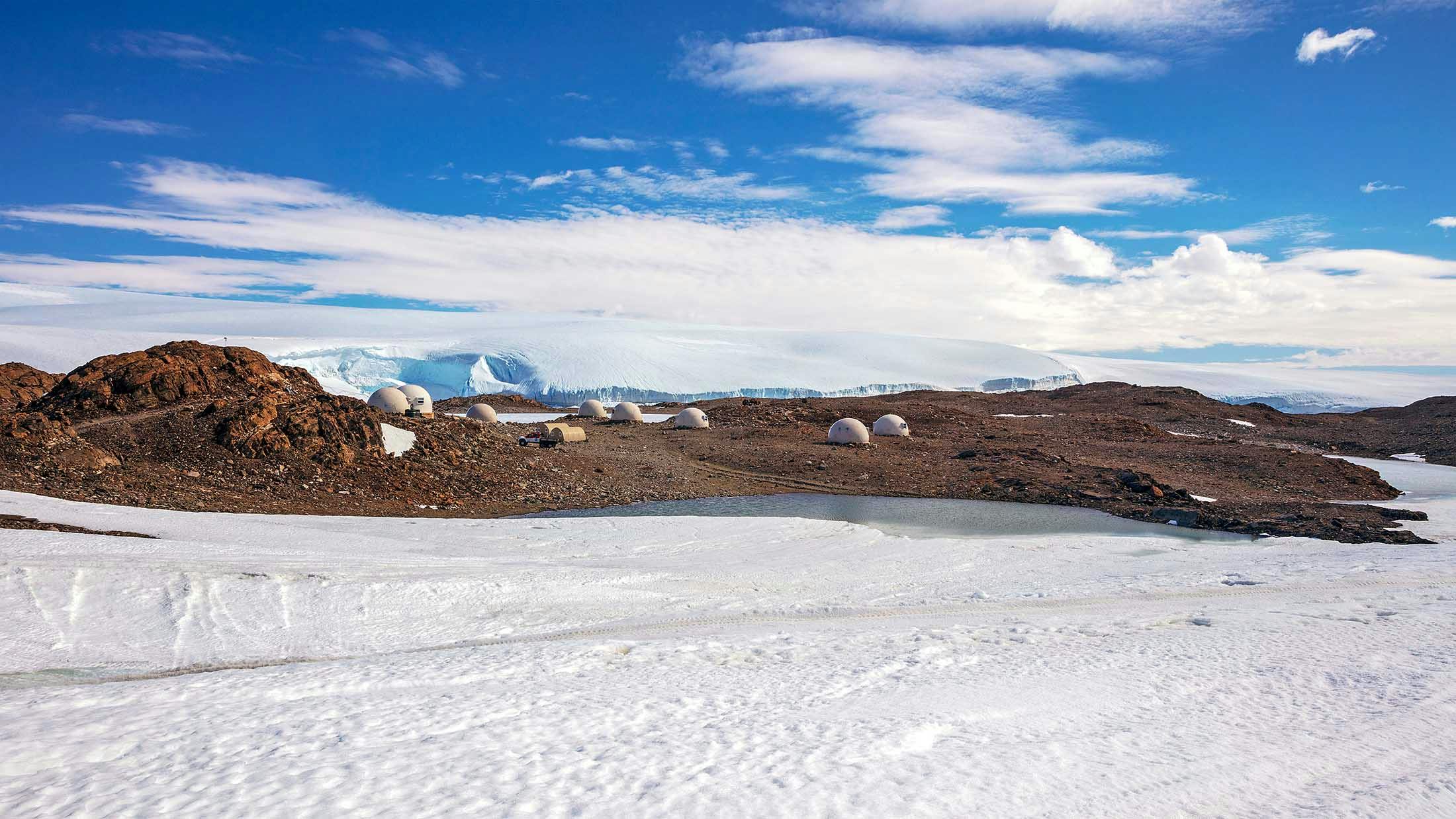
Demystifying the Art of Slow Travel to Explore Deeper
- Slow Travel
Transformative travel experiences that enrich our lives and truly alter our perspectives are more elusive than ever. In our fast-paced world, which glorifies bucket lists and instant gratification, travelers often forget to pause and live in the moment. Yet there exists a real desire for meaningful journeys that offer more than fleeting, Instagram-friendly photo opportunities. Let’s explore how the art of slow travel offers a means to really engage with a destination and explore deeper.
What Is Slow Travel?
The origins of the slow travel movement can be traced back to a favorite destination among travelers – Italy. It began as a spin-off of the slow food movement that was inadvertently launched in 1986 by food writer and activist Carlo Petrini. When the first McDonald’s opened in one of Rome’s iconic piazza’s in 1986, he protested in favor of local producers. His goal was to cultivate awareness for our food’s sources, promote cooking with care, champion craft over fast food, and advocate eating locally.
In the early 2000s, this sentiment of conscious consumption naturally spilled over into other industries, including tourism. The slow travel movement suddenly questioned our motives for traveling and discouraged dashing from one top tourist site to another. Instead, it favored going deeper by exploring the cultural aspects of a place through specific themes.
Over time, the core definition of the slow travel movement morphed to mean different things to the various communities of slow travelers. “One of the defining elements of slow travel is the opportunity to become part of local life and to connect to a place and its people,” says advocacy site Slow Movement , an umbrella community for various slow resources.
How to Slow Travel
Following this guideline, it might seem that slow travel’s definition supports only those with boundless time. Some slow travel advocates insist that the movement requires one to move slowly through a destination, devoting several weeks to exploration. Others champion actually living in a place for more intense personal experiences. But there’s still plenty of space within this movement for those who can’t spend weeks or months in a single place but still desire more meaningful travel.
According to Geir Berthelsen , a physicist who founded The World Institute of Slowness think tank, the concept itself pertains to the forgotten dimension of time. “Unlike chronological time, [slowness] is non-linear,” he shares. “It is…time that works for you, extraordinary time.” By decoupling the concept of slow travel from duration, which is chronological, we begin to realize that true slowness is non-linear.
“Slowness, which we at the institute describe as ‘non-linear time,’ is the opposite of normal, chronological time,” Berthelsen continues. “Whereas chronological time frantically pulls us forward into a future that never seems to arrive, slowness enables us to live in the moment and to experience the here and now.”

A Matter of Pace?
For many, pace is the most critical element of the slow travel experience. Ethan Gelber , a longtime slow traveler and travel editor at Green Matters, believes human beings and our planet are not necessarily built for the relentless urgency that is palpable in modern life. As such, people are finding new ways to counterbalance life’s frantic pace in order to slow down, he says. “[They’re] choosing slow-cooked feasts over fast food, and appreciating naturally aged drinks before quick-fix sodas,” notes Gelber. Besides this revival of thorough food preparation techniques in place of disposable, store-bought cuisine, there’s also a revival of time-intensive crafts like smithery, carpentry and weaving. There are even slow travel tours that prefer to linger in places rather than rush to include as much as possible. It indicates the cultivation of a new mindset that appreciates a slower way of doing things for the sake of relishing the moment – a mindset that can enrich travel.
The Benefits of Slowing Down
The slow travel movement encourages the slackening of pace so we can become present – psychologically, as well as physically. We should stop to appreciate distinct moments, allowing our senses to tune with the environment, instead of rushing to cross items off a bucket list. We will become more aware of our surroundings and more open to serendipitous experiences.
Most memorable travel experiences are enjoyed when we stop moving so quickly. They occur in the tender moments when we strike up conversations with strangers, the times we wander aimlessly or in those hours we spend with local gastronomists and artisans, watching them craft and create with passion. Slow travel might result in an invitation to a local’s house for dinner, stumbling upon an inconspicuous cultural celebration or discovering a setting of idyllic beauty.
The slow travel outlook accepts that you may never check every single item off your bucket list. More so, it encourages you to embrace that possibility and instead focus on the meaningful experiences that pop up during those in-between spaces.
We can develop the slow travel mindset anywhere, whether in our backyards or on foreign soil. By making a conscious and rational decision to slacken our pace, we can connect deeper with the places we visit because we take time to stop and engage. Perhaps the art of slow travel is a science after all.
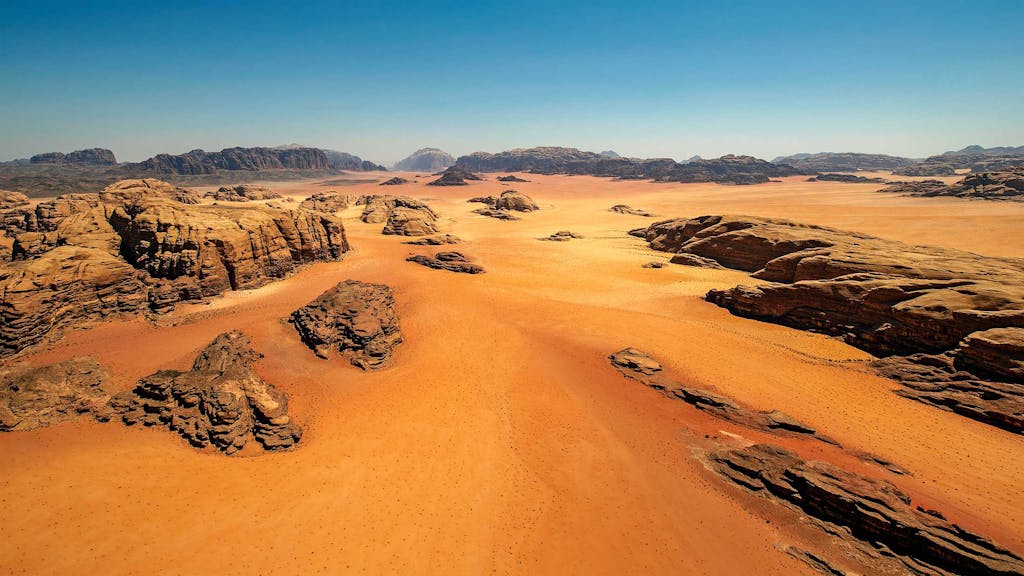
How to Choose Your Mediterranean Cruise
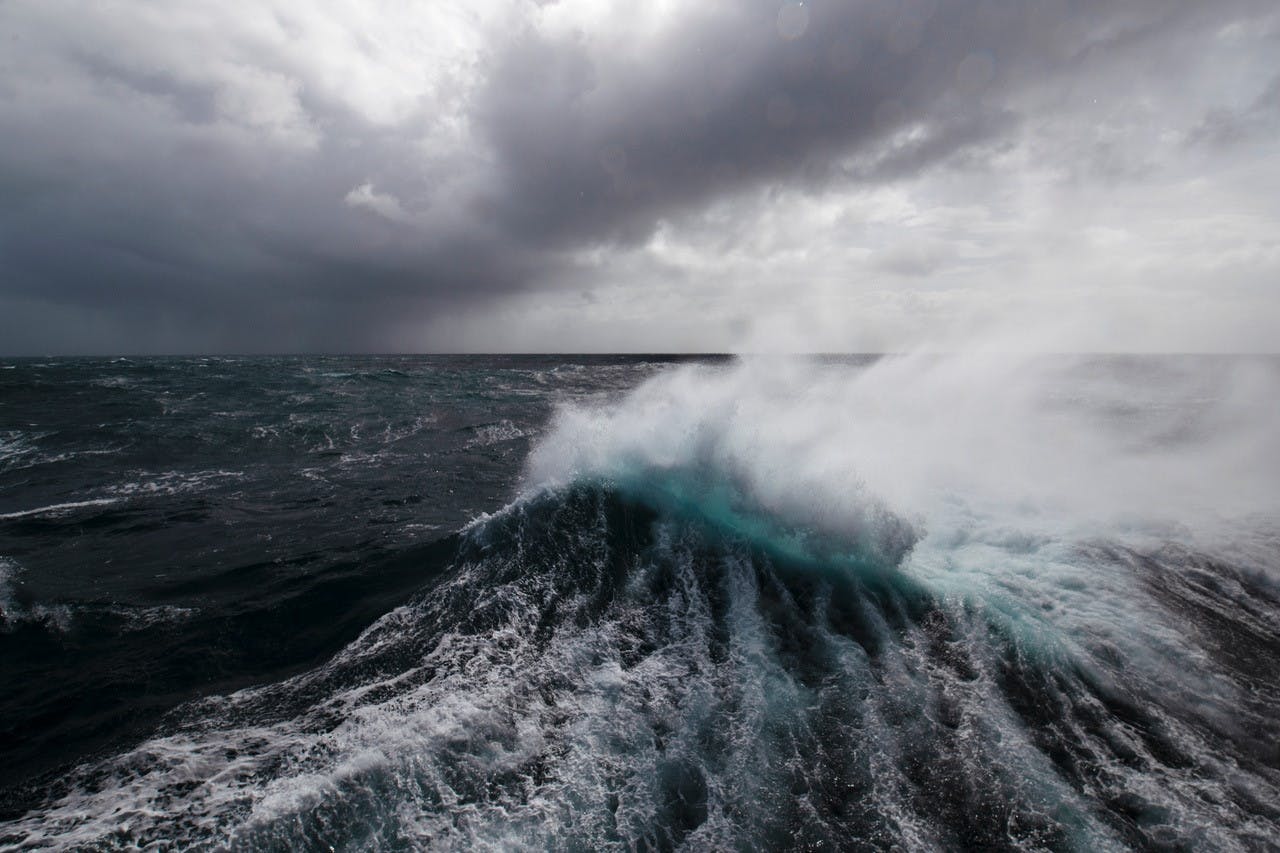
How Crossing the Drake Passage Transports You to Another World
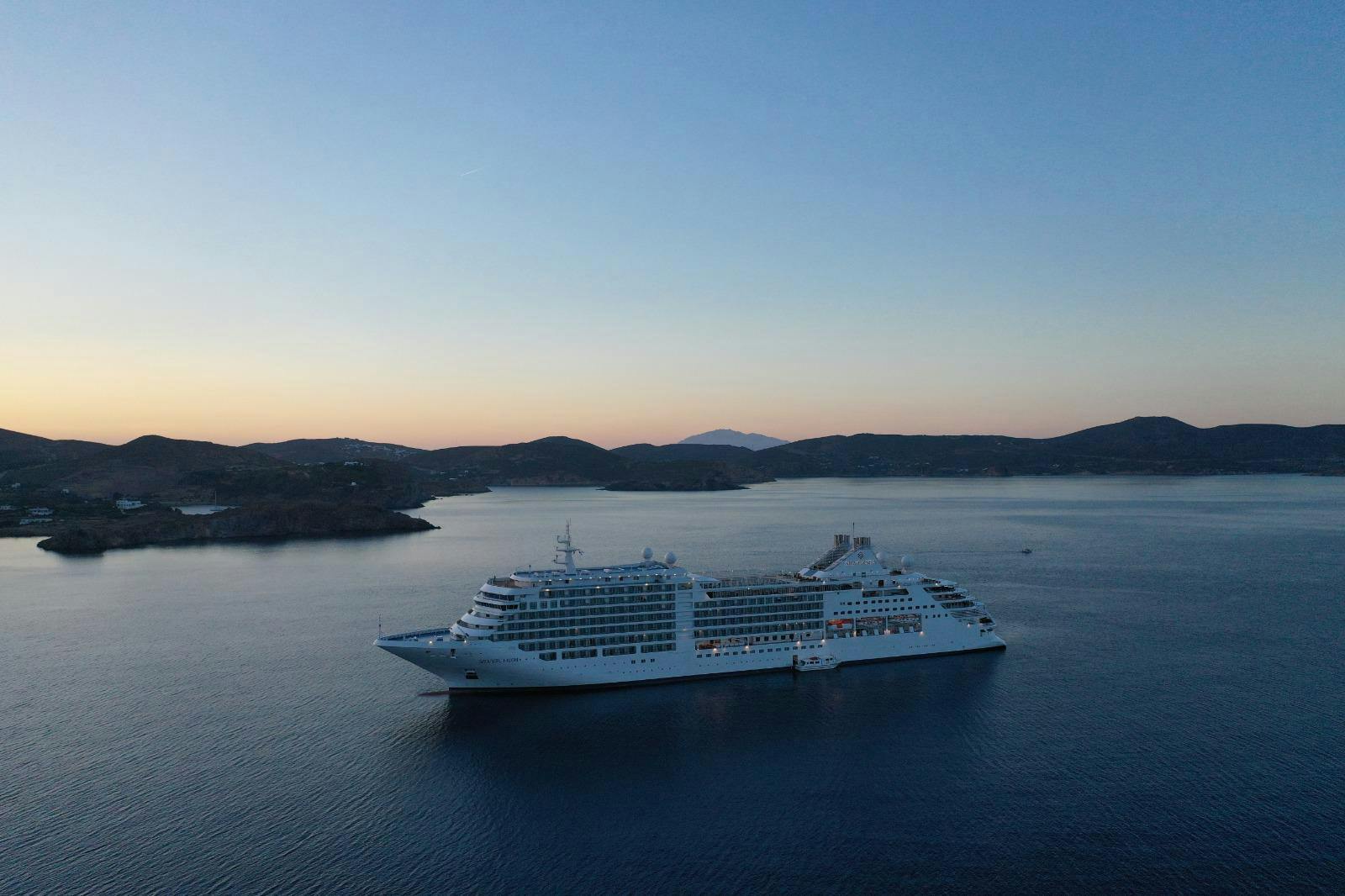
Well Worth the Wait: An Emotional Return to Cruising Aboard Silver Moon
Never miss our stories: subscribe to our newsletter.

What is slow tourism and why is it so good?
Disclaimer: Some posts on Tourism Teacher may contain affiliate links. If you appreciate this content, you can show your support by making a purchase through these links or by buying me a coffee . Thank you for your support!
The slow tourism industry isn’t one that is necessarily well publicised. In fact, many people have never heard of slow tourism. It does, however, comprise a significant proportion of the broader tourism industry worldwide. In parallel with an increased awareness of the importance of sustainability amongst the general public, the slow tourism movement is now bigger than ever before.
As part of my types of tourism series, this post will discuss the concept of slow tourism.
What is slow tourism?
Slow tourism definitions, the origins of slow tourism, the three pillars of slow tourism, slow tourism and sustainability, backpacking, business travel, volunteer tourism, visiting friends and relatives (vfr), hiking/cycling/active pursuits, southeast asia, the united states of america, slow tourism: conclusion, further reading on slow tourism.
Slow tourism is based on the concept of speed. It involves travelling for a prolonged period of time at a slow pace, allowing the tourist a deep, authentic and cultural experience.
An alternative tourism form, slow travel is typically associated with sustainable practices, taking into consideration the impacts of travel on the environment , society and economy .
Slow travel can be undertaken in any destination, but is particularly popular amongst traditional backpacking routes in destinations such as South East Asia, Central America or Australia . It is also commonly identified in popular road trip areas, such as Canada, Australia or the United States.
Defining slow tourism isn’t as easy as it might seem. Whilst at the core of the term is the notion of speed, there is indeed more encompassed in the concept of slow tourism than this.
There is a general consensus amongst academics that, contrary to its title, slow tourism is not solely about speed. In fact, it is indeed focussed more predominantly around the notion of sustainable travel , allowing for a more cultural and environmental friendly solution to travel.
Dickinson and Lumsdon (2010) define slow tourism as:
‘A conceptual framework that involves people who ‘travel to destinations more slowly overland, stay longer and travel less’ and who incorporate travel to a destination as itself an experience and, once at the destination, engage with local transport options and ‘slow food and beverage,’ take time to explore local history and culture, and support the environment.’
Lipman and Murphy (2012) pertain that sustainable consumption through ‘slower’ transport and products, reduced mobility, and ‘less’ travel are fundamental to the concept of slow tourism.
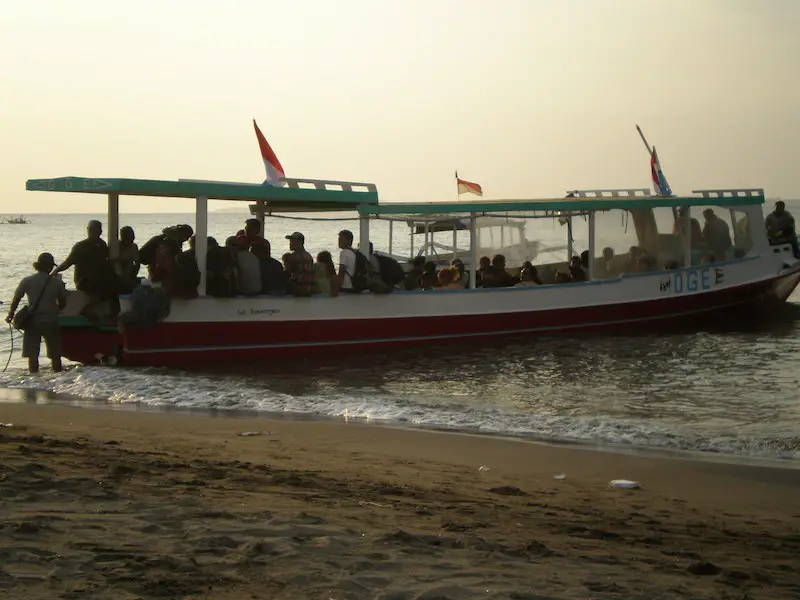
Furthermore, Moore (2012) emphasises that in order for tourism to be ‘slow’, it must redact the principles of traditional ‘fast tourism’, such as package holidays and organised tours.
Whilst said academics are in agreement that travel must be ‘slow’, there is little consensus on what ‘slow’ actually means and how it is practiced or interpreted in relation to different tourism contexts, cultures, and mobilities” (Fullagar, Markwell, and Wilson 2012). In other words, what is ‘slow’ in one situation, to one person, may not be ‘slow’ in a different circumstance.
The notion of slow tourism derives from the food industry.
The slow food movement was developed in Italy during the late 1980s (Dickenson, 2002) and has become more and more popular throughout the decades. The aim of slow food is to prevent local food cultures and traditions from disappearing, to counteract the rise of fast life and to raise public interest in the food we eat, where it comes from and how our food choices affect the world around us.
The premise between slow food and slow tourism is the same: both industries are interrelated with many other aspects of life, including culture, politics, agriculture and the environment.
Dickinson et al. define slow tourism according to three distinct pillars.
- 1- Doing things in the right speed
- 2- Changing the attitude towards speed
- 3- Seeking quality over quantity
Now, it is important to note that the above statements are subjective. What is the ‘right’ speed? What type of attitude should one have? How do we define ‘quality’?
Generally speaking, people tend to associate slow tourism with a slower pace of life. Many of the stresses associated with travel are alleviated or reduced. Slow tourism involves spending longer in one place, getting to know the area and the community. Slow tourism involves the tourist slowing down, and often doing less, in order to gain a deeper understanding of the surroundings, community, and authentic culture.
Some suggest that slow travel should avoid the use of air and car travel. Instead, tourists should use alternative means of transport that are more environmentally friendly. Whilst may often be the case for slow tourists, it is not, in my opinion, a defining characteristic.
Slow tourism demonstrates strong links with sustainable tourism .
Slow travel will often involve getting to know the local community within which you are staying. Perhaps tourists will stay in a homestay or a local Airbnb.
Instead of racing to see the top sights before your return flight home, slow tourists will take their time sightseeing. They will typically read all of the exhibits in the museums, sit an enjoy the sights and sounds over a coffee or whilst reading a book and see many of the lesser-known attractions in the area.
Because slow tourists will often be embarking on long-term travel plans, they are often more money conscious than the tourist who is taking their annual vacation. These tourists are more likely to eat in local restaurants and are less willing to spend their money in Western chains that are expensive in comparison.
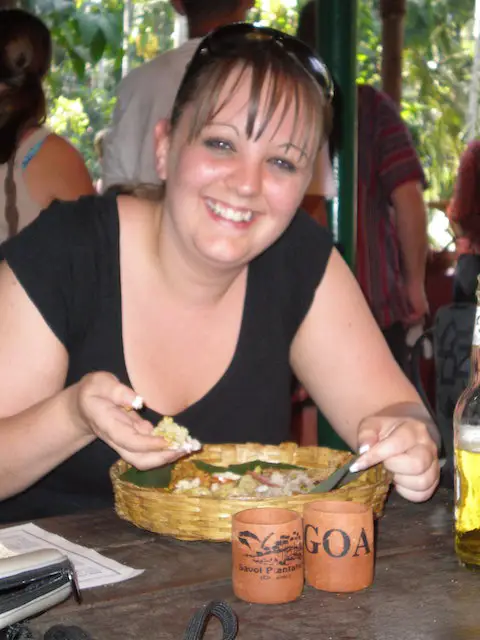
This type of behaviour promotes positive social impacts of tourism ; allowing tourists to learn more about the local culture and have an authentic travel experience . It also promotes positive economic impacts of tourism as money is more likely to stay within the community, demonstrating less economic leakage from tourism .
Lastly, the negative environmental impacts of tourism are often mitigated or reduced through slow tourism, because travellers tend to think more consciously and will often choose more environmentally means of transport.
Types of slow tourism
So now we understand what slow tourism is, but what does it look like in practice?
Well, there is no straight answer to this question, because slow tourism comes in many shapes and forms! But here are a few examples:
Backpacking is typically a form of slow tourism because of its speed. Backpacking trips can range from month-long adventures in Europe to round the world backpacking tours.
Whilst backpacking trips do not always demonstrate the sustainable mindset that is often associated with slow travel amongst tourists (particularly young backpackers travelling to party destinations in Thailand or Australia), there is an inevitable proportion of social benefits that will naturally raise from slow travel. Backpackers might still choose to fly, but they have probably chosen to eat and stay local, too.
Roadtrips are categorised as trips that involve substantial travel by road. OK, so the use of a car or motorhome isn’t the most environmentally friendly mode of transport, but a road trip will allow a tourist to have a slow experience, if this is what they choose.
One of my favourite family travel bloggers, Travel Mad Mum , for example, is about to embark on a road trip from the UK to New Zealand with her husband and two young children. This is a great example of slow travel!
Many people will travel on business. Business tourism can be either long or short term and it can involve travelling to one destinations or multiple different places.
Business travel can be a form of slow tourism because it can require the traveller to spend long period of time in a destination. I met a lady on my travels to Jeju with the kids who has been working in India for several months on a project as part of her job. She travelled to many different areas for business and had a deep cultural experience. This was a good example of slow tourism.
Volunteer tourism is the act of visiting a destination for the purposes of undertaking voluntary work.
Volunteer tourists can take part in many different types of projects, including those that work with the environment or the local community. Either way, volunteer tourism projects typically last for a month or more in duration and involve a significant level of integration with the host community.
Visiting friends and family is one of the largest areas of the travel and tourism industry, and it continues to grow. More and more of us are relocating or expatriating and then use our leisure time to visit our friends and relatives, wherever in the world they may be based.
Prolonged trips can be considered a type of slow tourism. Often such trips will allow the tourist to immerse themselves within the local community and to have a deep cultural experience. Since moving to China , I have had friends that have come to visit. Most people who visit Hangzhou will spend only a couple of days here, whereas my visitors have stayed for several weeks and have had a highly cultural and deep experience.
Travel involving the environment is popular amongst slow tourists. Hiking and cycling are two examples. When I climbed Mount Kilimanjaro , for example, this could be considered slow tourism because of the slow pace that was taken. Likewise, many cycling tours are considered forms of slow tourism.
Slow tourism destinations
Slow tourism can take place anywhere around the world. However, there are some parts of the world that are particularly popular with slow tourists and are that are well known for the types of tourism noted above.
Here are some examples of popular slow tourism destinations.
Southeast Asia is a popular route for slow travel, particularly amongst twenty-something backpackers.
Thailand , Laos, Cambodia and Vietnam are popular hotspots for young travellers looking for an authentic travel experience with some of their favourite commodities from home, a few familiar faces and a great party atmosphere thrown in.
Travelling on the sleeper buses through Vietnam or by slow boat in Laos are great examples of slow travel that allow the traveller to experience a deep cultural and authentic travel experience.
Australia is another popular destination for slow travel. This vast country attracts intrepid explorers as well as holiday makers.
If time isn’t an issue then you can easily spend months travelling through Australia. Many people choose to undertake slow travel in Australia using a motorhome.
Another slow travel destination that is popular work road trips is the Unites States of America.
America is huge so the options are endless! Personally, I would love to road trip Route 66 someday…
Interrail passes have given slow travel a boost in Europe. These affordable train travel passes have encouraged many people to travel through Europe and have helped to boost tourism in some areas.
Slow tourism is an area that is growing in popularity. Changes in societal attitudes and awareness regarding sustainability issues have contributed to the growth in slow travel. Slow tourism has also grown due to increased holiday time offered in jobs around the world and because of the many options to work remotely nowadays.
Despite the growth in slow tourism, however, it remains to be relatively under researched. If you want to learn more about the slow tourism industry, there are a few key texts listed below.
If you would like to learn more about slow tourism, I would recommend that you consult the following sources:
- Slow tourism experiences and mobilities – An edited book which introduces and places the concept of slow tourism. This is the most commonly cited text on the subject.
- Slow tourism, food and cities – Offers key theoretical insights and alternative perspectives on the varying practices and meanings of slow from a cultural, sociological and ethical perspective. It is a valuable text for students and scholars of sociology, geography , urban studies, social movements, travel and tourism, and food studies.
- Slow Travel and Tourism (Tourism, Environment and Development) – This book defines slow travel and to discuss how some underlining values are likely to pervade new forms of sustainable development.
Liked this article? Click to share!
'Slow Travel' Might Be The Key To A Better Vacation. Here's What It Is.
Senior Reporter, HuffPost Life
In the rush of day-to-day life, we don’t always have the opportunity to slow down and move at our own pace. Even on vacation, there’s an urge to visit, do and taste as many things as possible in a new destination or multiple destinations.
“I’ve heard countless times how exhausted people are when they come back from their vacation and feel like they ‘need a vacation from their vacation,’ and that’s because many times we pack so much into a very short amount of time,” said travel blogger Esther Susag . “We want to see everything, do everything, and not waste a minute.”
There is, however, another approach to globetrotting that many seasoned tourists recommend: slow travel. But what exactly is slow travel, and how do you take full advantage of this kind of trip? Below, travel experts break it down.
What exactly is slow travel?
“Slow travel is about quality over quantity,” said Phil Dengler, a co-founder of travel information site The Vacationer . “It is also about immersing yourself in the local culture. Traditional vacations often involve seeing as many things as possible in a short time. While there is nothing wrong with that, it can feel very superficial. It can also feel overwhelming and not like the ideal relaxing vacation.”
As the name suggests, slow travel generally entails slowing down and savoring each moment, rather than rushing to check off bucket list items.
“Slow travel may mean different things to different travelers, but I define it as staying in one place for longer and going deeper into the local culture,” said Paul Jacobs, general manager and vice president of Kayak North America. “It’s taking the time to make real connections with locals versus jam-packing a schedule full of tours. It’s staying in Kyoto at a Ryokan instead of city hopping throughout Asia.”
He believes slow travel is becoming increasingly popular and pointed to data that shows the length of hotel stays is already up 10% in 2023 compared to last year. Still, slow travel doesn’t necessarily require long stays in one place.
“For me, slow traveling isn’t necessarily about the number of days you are spending in a place,” said travel blogger Sean Lau . “You can slow travel with just a few days or with a few months ― it all depends on the level of connection you would like with your destination, allowing you to gain a deeper appreciation of the culture and understand the local environment better.”
For travel expert and author La Carmina , slow travel is a meditative approach to traveling that allows people to stop and smell the roses ― quite literally.
“It’s about being fully present in the moment and experiencing the sights, sounds and sensations around you without distraction ― letting the experience unfold at its own pace and without expectations,” she said. “To me, slow travel doesn’t have a strict definition or certain mandatory elements, such as using slower modes of transport or sticking to a single city or country for a certain amount of time, but rather is about the compassionate awareness one brings to being a visitor in a destination.”
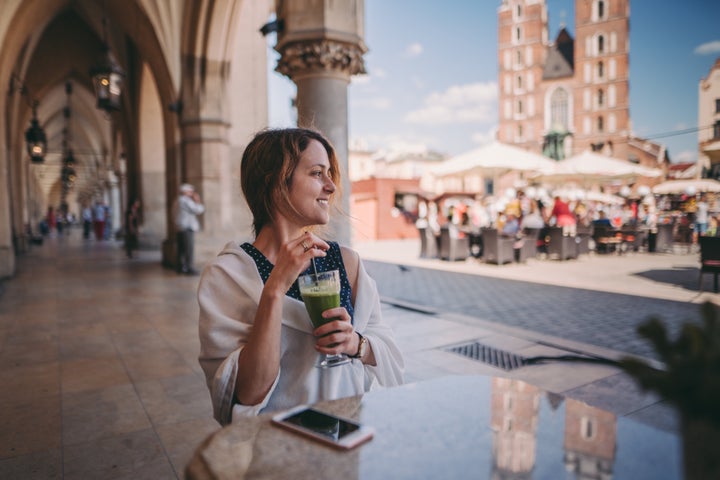
What are the benefits of slow travel?
“When you travel at a slower pace and not so rushed, you naturally immerse yourself in the culture and place that you’re in and really try to get to know it on a more personal level,” Susag said.
“You talk with more locals and do more ‘off the beaten path’ activities, and not just things you see on Trip Advisor,” she added. “Also, when you do start to talk with the locals more, usually they want you to have the best experience and will show you some of their favorite spots which naturally leads to a more immersive and personal experience.”
Getting to know locals and their culture and lifestyle more intimately and authentically will create rewarding experiences and memories you can carry with you long after your return home. You may even make deep connections and friendships that lead you to return in the future.
“If you want to really unplug and relax without the stresses of traveling then slow travel may be for you,” said Mark Wolters, the creator of the popular YouTube travel channel Wolters World . “You get to unpack your suitcases less, take fewer planes, trains and automobiles and just relax in a destination.”
He noted that slow travel is excellent for practicing foreign language skills, as there are more opportunities for meaningful conversations with locals.
“If you are traveling with children, slow travel is a good way to introduce them to international travel and getting them to see the differences in cultures,” Wolters noted. “When your kids are playing at the local playground with other children they see that there are not too many differences between themselves and the kids in this new country you are visiting.”
He said his children have also learned how to make pupusas in El Salvador, pasta in Italy, and sandwiches in Portugal because the family likes to return to the same eateries and make connections with the people working there.
“There is nothing like going back to the same restaurant a few times and the waiters and owners start to see you as a friend instead of a tourist looking for a quick bite to eat,” Wolters said. “Slow travel also gives your family a chance to focus on spending time together doing tourist activities, but also just being together as a family instead of just trying to get in as many museums as possible.”
There are practical upsides to this approach to travel as well.
“I love slow traveling for its environmental benefits,” Lau said. “By staying in one location for longer periods of time, there are fewer carbon emissions associated with transportation such as flights and buses.”
In addition to less transit between destinations, slow travel also tends to entail fewer car rides within a single destination due to fewer activities. Travelers can also feel less rushed in getting one place to another and take public transit instead. You may opt to stay away from the touristy city center and save money on accommodations as well.
“Slow travel is often more cost-effective than traditional travel since you are not doing as many things as possible,” Dengler said. “It is also more relaxing since you are not always worrying about the next item on your itinerary.”

How can you maximize the slow travel experience?
There’s no one right way to engage in slow travel, but there are some helpful factors to keep in mind if you want to maximize the experience.
“Your to-do list should be very short or nonexistent,” Dengler said. “Either come with a plan to spend most of your time at only a few locations or take recommendations from locals on the fly. When visiting a spot or destination, you should aim to understand its meaning as opposed to just checking it off your list. In most cases, you will have to spend more time than usual, but you should come away with a much deeper understanding.”
Resist the temptation to see every sight and eat every dish in one or two days. It’s not about rushing around to check off the boxes of attractions.
“Spread out your tourist visits over a longer period of time,” Wolters said. “This way you can spend your morning at a café, then midday at a museum, then the afternoon and early evening at a park reading your favorite book, instead of seeing two museums in the morning and one in the afternoon and then a theater show at night with a ghost tour at midnight .”
His family frequently tries to take local cultural classes, like a painting or cooking class. In addition to learning more about the art or cuisine, you can ask the instructor additional questions and learn more about the area.
“In the era of remote work, it’s become easier to engage in slow travel,” noted Jessica van Dop DeJesus, the founder and editor of food and travel blog The Dining Traveler . “For example, spending more than a week in a destination and taking the time to walk around lesser-known neighborhoods, frequenting a cafe or restaurant several times, and attending a sporting or cultural event that’s important to those living in that location.”
Consider staying in an independent boutique hotel or vacation rental away from the typical touristy spots to get a sense of where locals live. Take advantage of the quiet and relaxation you can’t find in the typical crowded areas as well.
“One of my favorite ways to experience slow travel is by renting a villa by the beach,” La Carmina said, recalling a recent trip to Tulum . “Rather than being in a busy and commercial resort, I enjoyed peaceful days with only the sounds of the ocean near my doorstep. I had a fully stocked kitchen, so I could simply relax in my warm surroundings without feeling pressure to go out or sightsee. Some days were spent lounging in the modern villa’s pool, or meandering to the nearby beach.”
If you’re staying in a destination that lacks strong public transit infrastructure or you simply want to explore a little farther afield, renting a car can offer the opportunity to move at your own pace.
“Pull over and enjoy the scenic overlooks and don’t be afraid to take detours and stray off the beaten path when traveling,” said David Woody, country development and travel expert at SIXT .
You may even plan a leisurely paced road trip as a form of slow travel.
“Many travelers are now choosing to drive to destinations instead of flying as part of the slower travel movement, which offers them more flexibility to enjoy the journey as well as the destination,” Woody said. “We recommend mapping out your route and the legs you want to drive per day but only book the first two or three nights of accommodation to remain flexible should your route or timing change.”
Support HuffPost
Our 2024 coverage needs you, your loyalty means the world to us.
At HuffPost, we believe that everyone needs high-quality journalism, but we understand that not everyone can afford to pay for expensive news subscriptions. That is why we are committed to providing deeply reported, carefully fact-checked news that is freely accessible to everyone.
Whether you come to HuffPost for updates on the 2024 presidential race, hard-hitting investigations into critical issues facing our country today, or trending stories that make you laugh, we appreciate you. The truth is, news costs money to produce, and we are proud that we have never put our stories behind an expensive paywall.
Would you join us to help keep our stories free for all? Your contribution of as little as $2 will go a long way.
Can't afford to donate? Support HuffPost by creating a free account and log in while you read.
As Americans head to the polls in 2024, the very future of our country is at stake. At HuffPost, we believe that a free press is critical to creating well-informed voters. That's why our journalism is free for everyone, even though other newsrooms retreat behind expensive paywalls.
Our journalists will continue to cover the twists and turns during this historic presidential election. With your help, we'll bring you hard-hitting investigations, well-researched analysis and timely takes you can't find elsewhere. Reporting in this current political climate is a responsibility we do not take lightly, and we thank you for your support.
Contribute as little as $2 to keep our news free for all.
Dear HuffPost Reader
Thank you for your past contribution to HuffPost. We are sincerely grateful for readers like you who help us ensure that we can keep our journalism free for everyone.
The stakes are high this year, and our 2024 coverage could use continued support. Would you consider becoming a regular HuffPost contributor?
The stakes are high this year, and our 2024 coverage could use continued support. If circumstances have changed since you last contributed, we hope you’ll consider contributing to HuffPost once more.
Already contributed? Log in to hide these messages.
Popular in the Community
From our partner, huffpost shopping’s best finds, more in life.

- Oct 26, 2016
Slow travel: definition and benefits
Updated: Jun 13, 2023
You’ll probably agree with me when I say that holidays can sometimes be almost as stressful as daily life. There are many reasons to slow travel.
It turns out there’s a different way to travel that can bring you more meaningful experiences while at the same time respecting the pace of your body, the environment and the local populations you come in contact with.
In this post, I will show you how slow travel can redefine the future of tourism and why you should seriously consider it for your next holidays.

What is slow travel?
Here’s what I answer when asked how to slow travel:
“Take your time, enjoy the unexpected. Don’t do too much, but rather choose to do what you really like. Connect with local people, try traditional food and discover local traditions. Immerse yourself in the destination you’re visiting and transform a simple holiday into a life-changing trip. This is slow travel.”
When you understand that by doing less you can actually experience more, then you become able to let things happen. By allowing the unexpected in your holidays, and leaving it time to happen, the magic of travel finally comes to you. You are now able to change what could have been a regular holiday for a life-changing trip.
Furthermore, this new mindset allows you to relax, take the time to do things you really like and ultimately have an overall richer experience of your trip.
The two types of slow travellers
We could categorise slow travellers , the individuals that slow travel, into 2 categories. There are those who try to slow down as much as possible the journey they take, and there are those who focus more on the destination they’re visiting.
1.Travel from one place to the next slowly
The first ones would, therefore, choose slower means of transport rather than fast ones. For example, they would prefer a train to a plane, a bike to a car, etc… By slowing down their journey, they get a closer contact with local populations and a deeper feeling of the atmosphere of the places they travel through.
And when the unexpected happens, being in a slow mindset allows them to be open to it. They let it become part of the trip rather than resisting it, and that makes up for much deeper experiences.

Think about it:
How many people would you meet if you travelled through a country by car? And how many would you meet if you would travel the same country by bicycle- or walking?
The slower you go, the smaller the distance with the local population, and the richer the experience you get out of it.
2. Immerse yourself in a destination
The second type of slow travellers, however, focuses on a destination. In that case, they could get to their destination straight away, but then adopt the slow travel ethos during their stay.
They’d choose carefully where to stay and would stick to it, rather than going from one accommodation to the next. Staying in the same neighbourhood, for example, allows you to get a deeper connection to it, get to know some places and often get to know some friendly people as well.
On top of that, they would not try to do as much as they could and hit all the must see’s of the area, but simply schedule a few things, and leave some time for themselves. That unscheduled time becomes very handy during the trip, as it allows them to do what they really want at each moment.
It could be to relax for a while, get lost in an area or discover local places. And of course, it would allow them to accept an invitation from a friendly local to discover something really authentic about the place they’re visiting!

This aspect is often forgotten in articles about slow travel, but very important to mention. You do not need to have plenty of time for a trip, or in a place. Ideally the more time the better, but you can also slow travel even if you just have a few days.
I’ve openly categorised slow travellers into two kinds to make it easy to understand the distinction between the two ways in which slow travel could be reflected. Please do not attach to one or the other, as they are both complementary.
I often myself am the second type of slow traveller because it is much more compatible with my lifestyle. You need less time, less preparation and it could fit any weekend trip you’re undertaking. But I have been twice in my life the first type of slow traveller, and those were the richest and most memorable travel experiences. It is more difficult, but if ever life gives you the opportunity, seize it! I guarantee you won’t regret it.
5 good reasons you should adopt slow travel now
1. relax, recharge your batteries and improve your health.
Have you had enough of those trips that leave you more tired than you were before taking them? By putting the emphasis on slowing down a trip, slow travel allows you to relax, reconnect with yourself and finally get some real time off doing anything.

And that is a necessary step to recover all your power and to be able to get back to your daily life with fresh energies. We all suspect travel can have long-lasting effects on our health by lowering down the stress levels, it has now been proven by several studies .
2. Empower local economy, wherever you travel
When you go slow, you go local! Flee from multinational chains and go discover small, local and family run businesses. By staying in just one area, wandering around and communicating with locals, you can easily find local businesses wherever you are.
And as every place and every person is different, they will always have something new for you to discover.

And the best thing?
It is often cheaper than big companies and it has a major impact on the local economy of the place you’re visiting.
3. Leave a positive footprint and contribute to preserving the environment
A funny thing you may not have considered until now is that the slower a mean of transport is, the greener it would be.

Walking, cycling, riding a train, a bus, a car, taking a plane… Speed seems to be highly correlated with pollution. Therefore the slower you travel, the less you pollute. And the more you preserve the destination you visit.
4. Slow travel to become part of the local life
Slowing down the pace of your travel creates a bigger connection with the local cultures of the places you travel to.
Similarly, making the conscious choice to do less – picking out what you really like over a long checklist of must do’s- and focus on entering in contact with the local life will definitely let you immerse more in the destination you visit.

5. Get unique memories and even often life-changing experiences
When you adopt a relaxed mindset and do not have too many plans, you’re more eager to accept the unexpected whenever it appears.
And this unexpected, often if not always, becomes the thing that will change a simple trip to a lifelong memory.

We have seen in this article the numerous reasons to travel slow, how they can positively impact not only a traveller’s journey but also his health and the destination visited.
We believe slow travel is a win-win for everyone, and that is why we created Barcelona Slow Travel . Through our slow travel experiences , we offer an easy and authentic way to become part of the Catalan local life , while respecting it at the same time.
So, what’s your opinion about slow travel? Is it something you do already? If not, are you considering it now? Let us know your opinion in the comments!
- Slow Travel
Recent Posts
10 tips to become a slow traveller
Comentarios
The ultimate guide to Slow Travel
Not sure what Slow Travelling is or want to learn more about this weird and wonderful new way to travel? Then you’ve come to the right place. We’ll give you all the expert tips.

Whether you’re a Slow Living aficionado or you’re just learning the ropes, Slow Travel is a great new way to experience the world. Though this new trend is just beginning to take off, Slow Living has been around a while, it’s just taking the world a little time to catch up. But fear not, because we’ve got all the information you could need to get to grips with this social and cultural movement, and begin travelling at a slightly slower pace. The old saying, take the time to stop and smell the roses, is just about as fine a point as could be put on it. It’s more than just an ethos though, it’s a way of living, and a way of approaching new experiences. So, in the spirit of this article, take a load off, sit back, get comfortable, and prepare to soak this article in a relaxed and timely manner. See you on the other side!
Psssst - Are you still looking for some new gear for your next outdoor adventure? Make sure to check out our new outdoor jackets and outdoor pants .
Table of contents
What is slow travel?
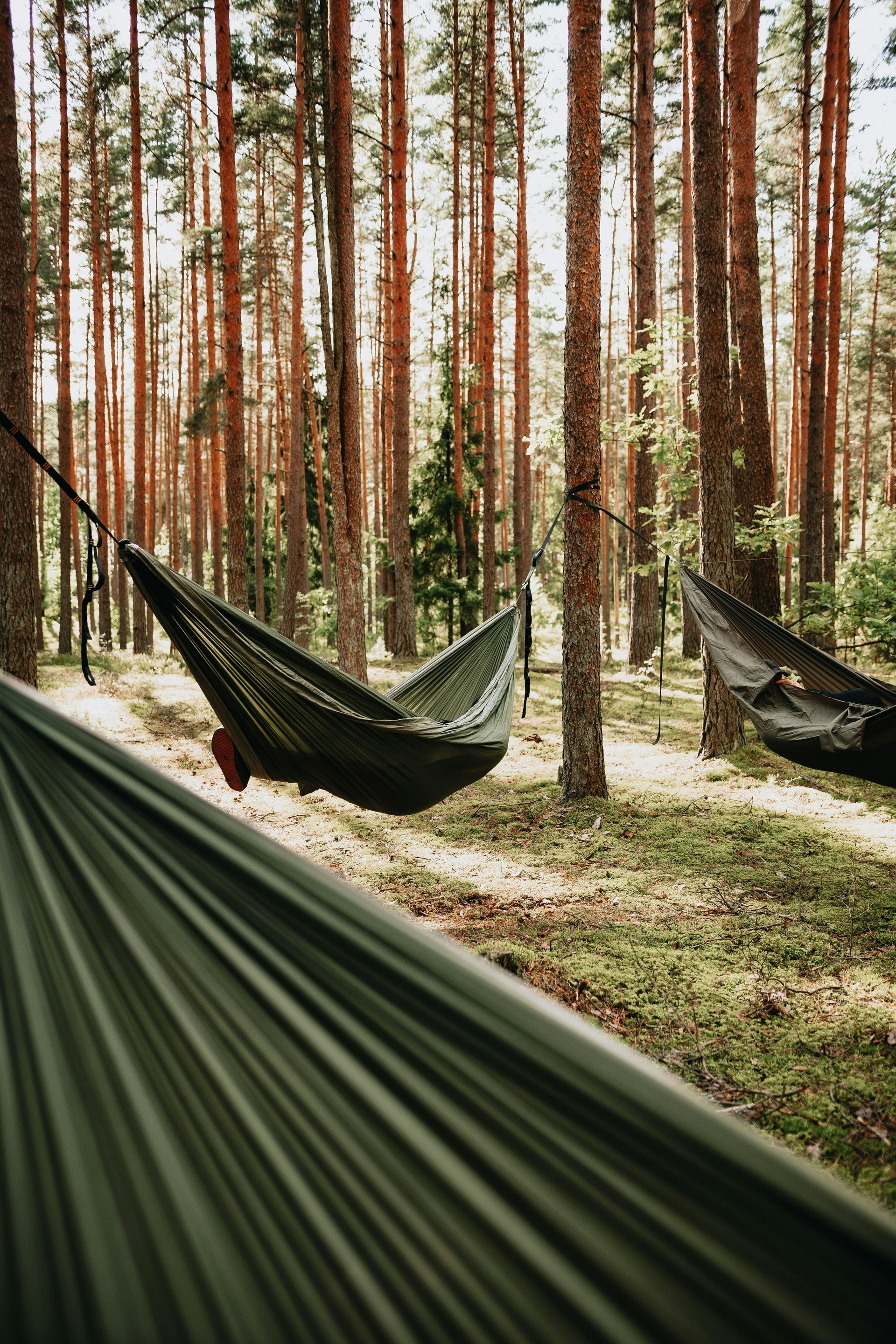
Slow travel isn’t complicated. It’s, by definition, taking the road less travelled. It’s about embracing individual experience versus culture-led holidays and trends. Slow traveling is to soak in everything that both a place and the road leading there have to offer. It’s about taking the time to reflect and engage with the now, not rushing, not taking for granted, and not doing anything unless you want to. There are a lot of weird and wacky definitions for slow travel out there, so we want to make this as accessible and simple as it can be.
It's coming into vogue as people begin to rebuke tourist culture, but it’s not a black and white thing. This for om travel is all about you, and about moulding a travel experience to your way of enjoying, instead of acquiescing to society’s (and social media’s) expectations of it. But that doesn’t mean you have to go off the beaten track or visit places that few people have ever been. So let’s dispel some myths, and take this slow. Consider this your ultimate, ultimately accessible, guide to slow travel.
Who is slow travelling for?
It’s for everyone. You don’t need to have any special belief system or lifestyle to embrace it either partially or entirely. While some might lead you to believe that it’s something you need to throw yourself into, a way of being that must be fastened to your life in an unflinching way, we take a more relaxed approach, because we realise that not everyone can throw off the modern shackles of responsibility and hit the road without a care in the world!
Most of us still need to work, still have responsibilities, and still need to do about a million things tomorrow. But that doesn’t mean we can’t all enjoy slowing down once in a while to travel like this. It’s a different experience from normal life, and we’re going to show you what you can do to cultivate that experience. But first, we need to dig into the Slow Movement as a whole, as travel is just one facet of a much larger cultural shift.
The slow travel movement
The slow movement has its roots in the 80s, when an Italian activist riled against the presence of McDonald’s in Rome. The introduction of fast food was a sign of the times, where everyone and everything was speeding up, and life was becoming an all-out race — only no one seemed to know what the finish line looked like.
In 1999, a guy called Geir Berthelsen created The World Institute of Slowness which was a collective of minds trying to embrace the ability and the desire to slow down. To stop and smell the roses, really. In 2004, Carl Honore publishes a book entitled In Praise Of Slowness: Challenging The Cult Of Speed, and a movement is born, precipitating this cultural tilt, where people begin to approach a quality over quantity approach to life.
Interestingly, and this is something that’s not noted anywhere, the slow movement is a mirror image of the Futurist movement, which also began in Italy. A social and artistic movement, Futurism was born in the early 20th century, and was a total embrace of speed, dynamism, technology, youth, violence, and everything that went with it. It was a thirst for big business, internal combustion engines, vicious science and progress. A casting off of the drudgery of pre-industrial era slowness.
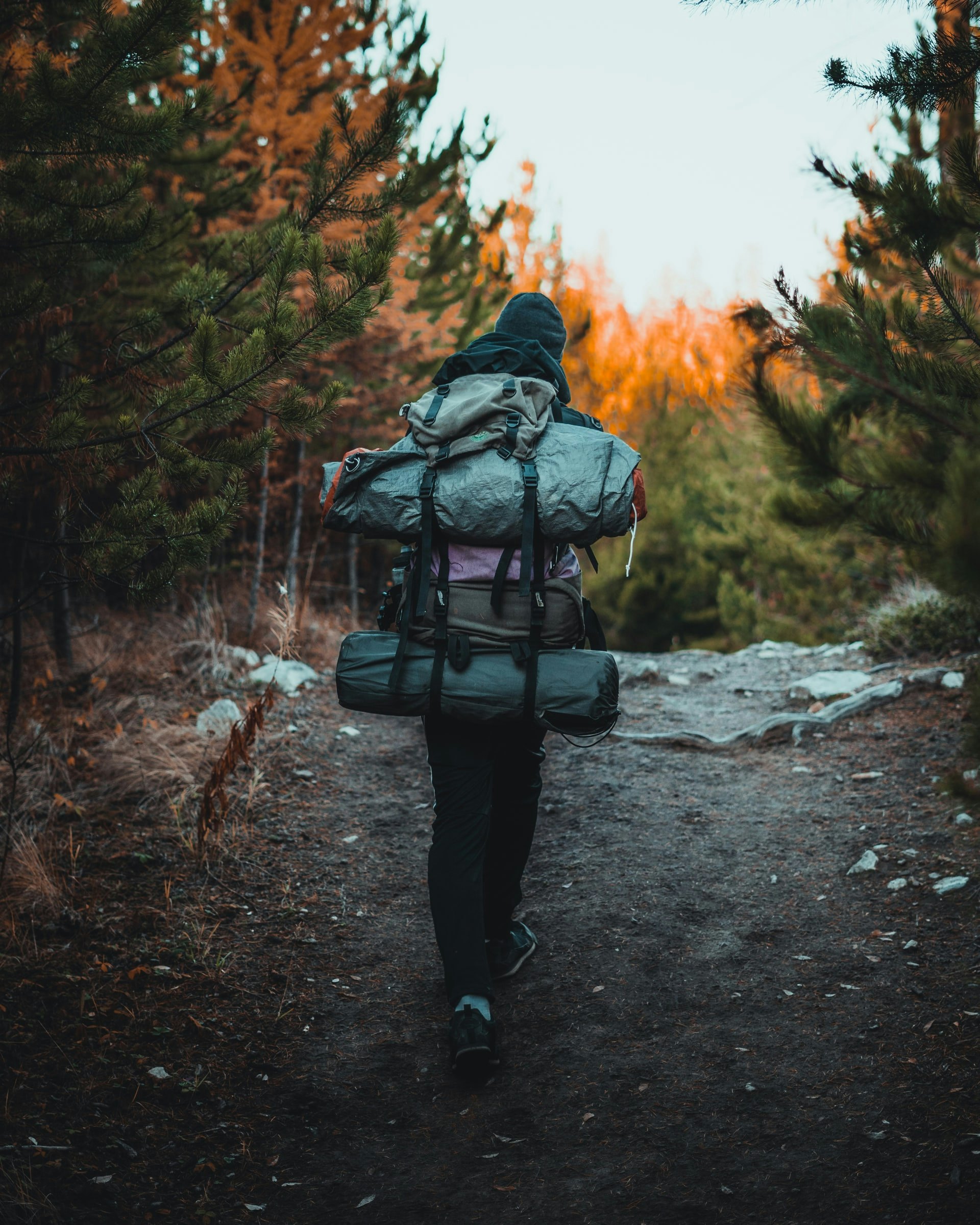
But where there is push, there is always pull. Newton wasn’t wrong about that. So, a hundred years later, here we are, in the midst of an anti-futurist movement. The Slow Movement. But what exactly does the slow movement promote? Well, naturally, it pretty much rebukes what the Futurist Movement stood for. It promotes walking over driving, nature over industry, and time over money. It has its influence over everything including food, urbanisation, travel, fashion, business.
You already know fast food, so now meet slow food. From taking your time at the store to select and find the best ingredients, to preparing them with care and attention. From cooking them slowly and tenderly, to plating with attention to detail. It’s not chew, chew, swallow, it’s savouring the smell, the taste, the texture. It’s languishing in every bite before moving to the next one. It’s about what’s happening in the current moment, and grounding yourself there, rather than using it as a stepping stone to what’s next.
Cities which meet the slow city criteria favour humans, not cars, they embrace carbon neutrality and the seamlessness of nature and construction. In fashion, it’s creating clothes that are timeless, durable, built to last. Ones which can be enjoyed forever. In business, it’s about helping people and providing services that are meaningful right now. That people can wring joy and value from, not business that creates churn and pipeline.
It’s all this, and more. And while it likely cannot be embraced in totality, I think we could all use a little of this every now and then. Ultimately, and this is how I always summarise it, Slow Living is taking (and often making) time to actually enjoy the things that you find fulfilling. It turns out, it's not that complicated.
Embracing the slow ethos
How does one become part of this movement, then? It’s as much understanding as it is action. And while we can throw around metaphors and metaphysical verbiage all day long, we’d rather tell you how it can affect your life, and what sort of changes you can make to move a little slower, without, you know, derailing everything.
If it begins when you wake up, moving slow might be allowing yourself to wake up without the use of an alarm clock, when you’re ready. Then, it could be lying in bed, reflecting on your dreams, grounding yourself in the moment and thinking about the day ahead. It could be doing your morning stretches, hand-grinding your coffee, making a nice breakfast, listening to birdsong as you drink it. But if you don’t have time to make your mornings look like that, then that doesn’t mean you can’t be a part of this movement.
The biggest part of slow living for me comes is food. I spend a long time in the supermarket selecting the right vegetables, finding the right ingredients, thinking about recipes and how I’ll prepare that food. That brings me joy. It fulfils me, so I take my time. Slowness is a personal thing. It’s about you, and it’s about taking what time you can, when you can, to pause for thought and breath, and really soak in a little bit of something that makes you happy.
Don’t let anyone tell you differently. Your slowness comes in whatever form feeds you most, food or otherwise.
Why should you try it?
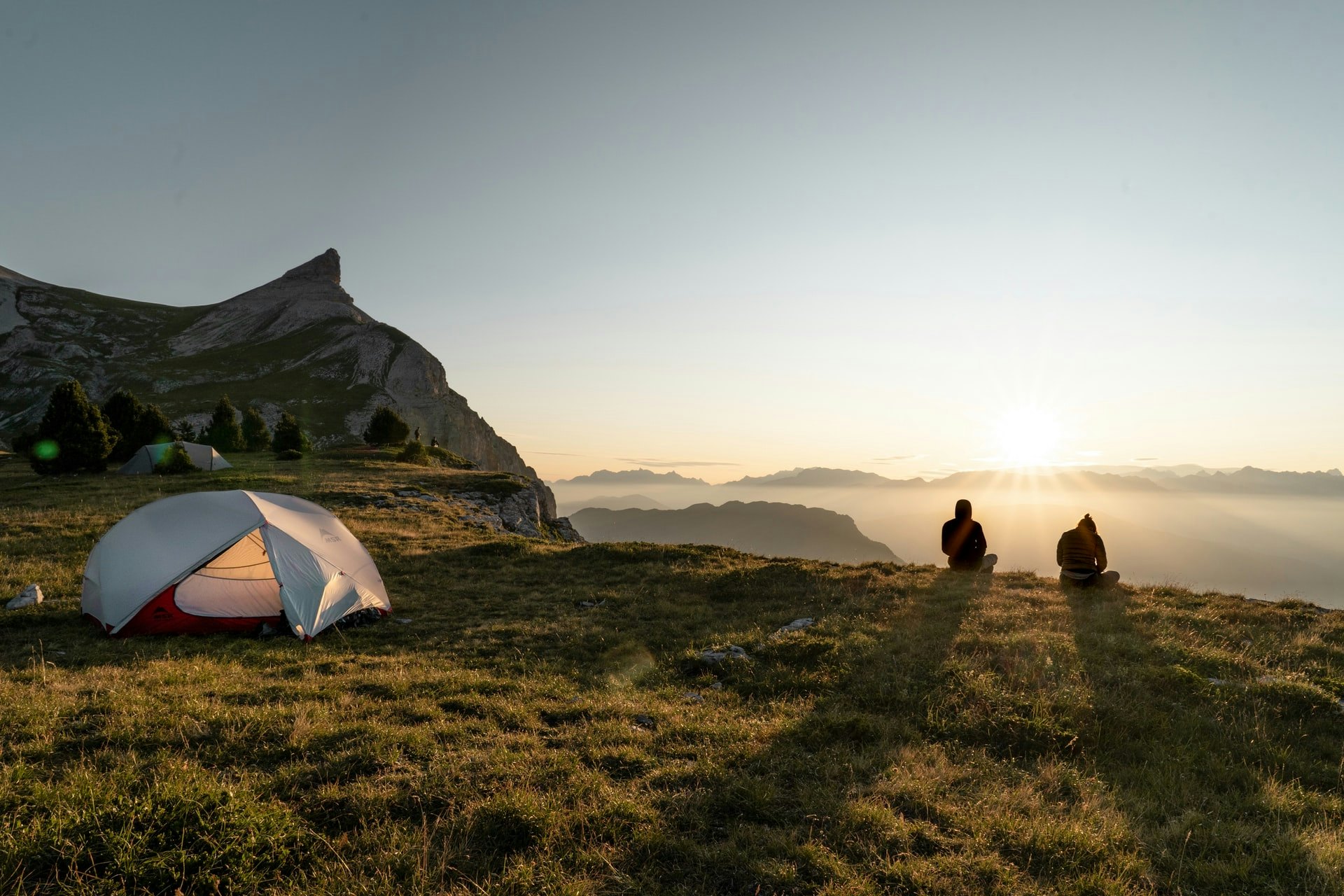
Slow travel, like every other part of slow living is about the experience of the journey. In order to do it, you need to come away from what you know travelling to be — usually getting somewhere as fast as possible, cramming as much into a space of time as you can, and then rushing home in time to get back to work.
Slow travelling is about maximising your enjoyment of each moment, rather than planning it all out, or letting it be planned for you. There exists a culture around this form of travel that leans towards integration, acceptance, and learning. Most advocates will warn away from tourist traps, and say that there is more joy to be had exploring the authentic parts of the world that belong to those who live there. That it is about embracing other cultures, their food, their music, their way of life, but not just embracing it, but instead, taking the time to appreciate, and more importantly, understand it.
This will appeal to some, and not to others. There’s nothing wrong with enjoying a more traditional vacation, but neither do you have to live in that black and white world. You can delve into aspects of slow traveling from anywhere, whether you’re on holiday on the other side of the planet, or in your home town. Just simply slow down, look around, and see where your eyes, your ears, or even your nose, takes you.
Top tips on how to slow travel like a pro
As it’s such an individual experience, we can’t really tell you exactly how to do it. But we can tell you our experiences of it, and what we like best about slow travelling, as well as how we try to embody its ethoses along the way. It begins, as usual, with the planning stages — pretty much the best part of any trip, except for the actual trip, of course!
When you’re planning a regular vacation, you’ll probably be looking at somewhere you can relax — maybe sit on a beach, or lounge around the pool … or maybe you’re looking more for an adventure holiday. Skiing, snowboarding, watersports, mountain biking. But, whatever way you’re going, one thing’s probably for sure, and that is that you’re going to want to get there as fast as possible. And this is where slow travel takes its first big deviation from the tourism-led vacation planning process we’re all familiar with.

Slow travel, as you can imagine, doesn’t concern itself with the time taken to get somewhere, and nor does it concern itself with the destination, either. This form of travl operates on a wavelength that asks ‘what do you want to experience?’ and not ‘where do you want to go?’
Let’s take a look at some examples of how a trip might vary if you’re slow-travelling. Southern Spain is famed for its beaches, its weather, its hotels, its food, its clear water … and it has major airports, too. You can fly into Murcia or Malaga from many places across Europe and get a bus transfer right to your hotel. But what are you experiencing going from your home to your car, to the airport, to another airport, on a bus, to a hotel, down a touristy Mainstreet where you’ll eat pizza and pasta and Chinese food, to the crowded beach, and then back again all in reverse?
If you wanted to slow travel, you might drive instead of fly. And you’ll want to keep off the motorways. You’ll want to look at where you want to end up, and choose a route that’ll take you on a tour of the world. Coming from the UK, you can take a train to Calais, or a ferry to Bilbao, and on that journey, get to know some people. This is the first step — opening yourself up to others, and sharing your experience, and theirs. Learning about them and where they’re from, be it in your own back yard or another country.
Once you land in Bilbao, you’ll want to stay a while, explore some of the city. Maybe check out the museums, the galleries, but more than that, just walk the streets, feel the city, experience the place. Soak it in. Your trip will inevitably lead you south, but do you want to take the AP-68 super-motorway all the way? No. This isn’t about fast, it’s about slow. It’s about going with the flow of things. So it’s worth not even planning that far ahead. Just drive a little, see where it takes you. If you end up in the right place, great. If you don’t, even better.
If you feel like meandering around a village for the day, do it. Speak to the locals, check out the architecture, revel in the feel of everyday, authentic life. If you want to go hiking, do that, too. Listen to the cicadas. Look down over the countryside. There are no rules, this is the thing. You can do whatever you want, so long as you’re embracing the organic experience, and not trying to force some idea of a vacation.
It’s scary, sure. It’s unnatural. The world is a big, intimidating place. But it’s filled with humans, and most of them are kind. We’re not saying put yourself in danger, but we are saying that slow travel is about taking in the world as it is, and experiencing new things, especially when it comes to local culture — be it food, social convention, music, or anything else. We can’t give you a definitive guide, because there isn’t one. But as you slow down, giving everything a chance, not worrying about schedules or itineraries, you’ll begin to understand what slow travel is all about. And who knows, maybe you’ll fall in love with it.
Slow tourism: a changing world
It’s not just travellers themselves who are adapting to the idea of slow tourism. Many companies and holiday operators, as well as hotels and other accommodation providers, are also embracing the idea of slow tourism. When the principles of enjoying and experiencing local cuisine and culture, sustainability, and naturalism begin to push to the forefront of the minds of travellers, it's not surprising that the hospitality industry follows suit.
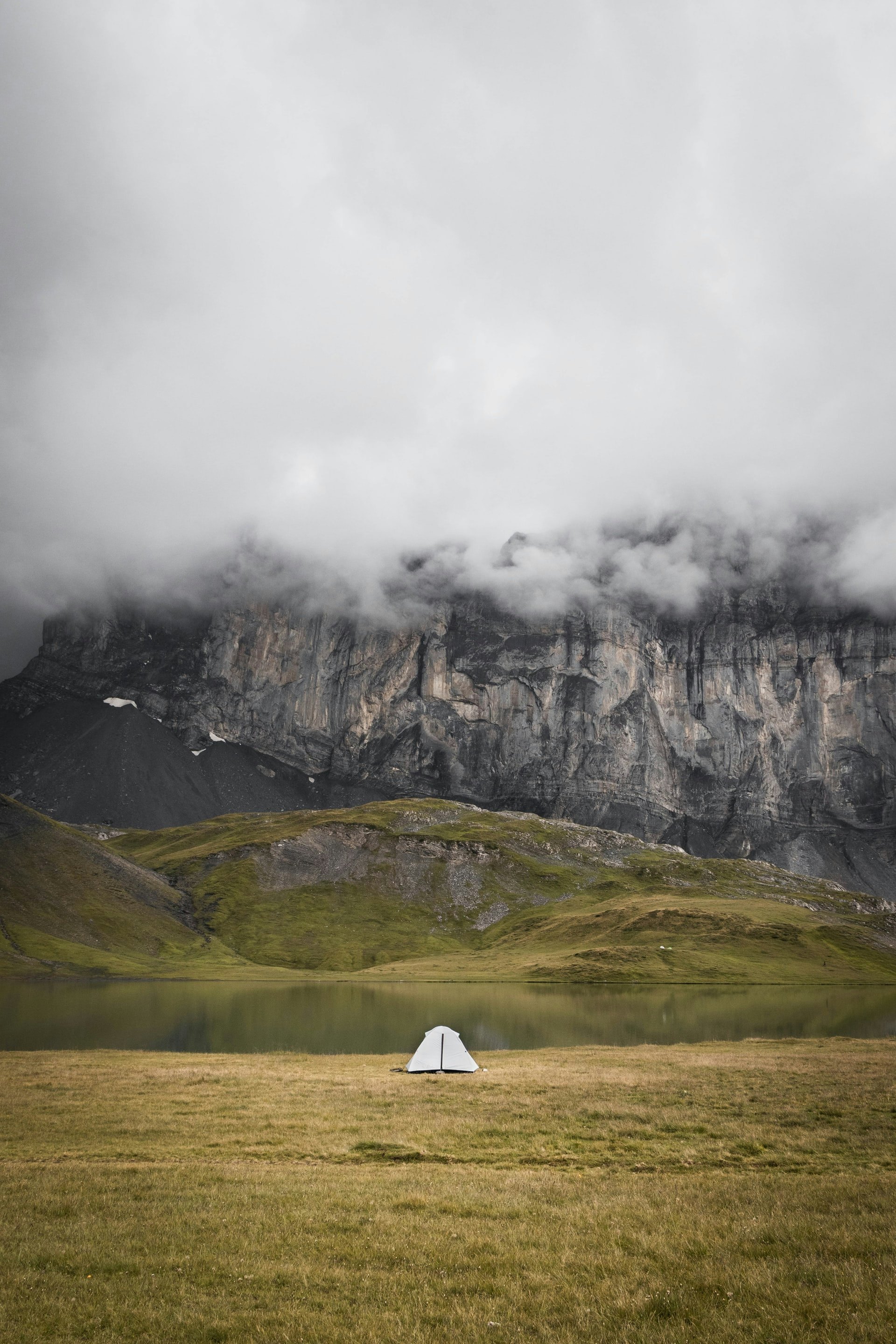
How the tourism industry is adapting to this new way of traveling
We’re beginning to see companies specifically advocating for slow tourism, and offering trips geared towards slow travel, springing up all over the place. These curated guide-book-cum-trip-planners offer an array of different and unique experiences, and help you to discover destinations outside of the normal ‘touristy’ spots. They can plan the entire trip for you, sometimes curating it to your tastes, but more often, tailoring it to the local experience. You’ll get to stay in interesting places, meet interesting people, and do things you never would even be able to if you booked with a regular holiday provider.
As well as this new slew of companies popping up, hotels are also adapting, making a push to focus more on local aspects of their communities, rather than simply acquiescing to western holiday culture. You may see more local dishes made with locally sourced ingredients come to menus, more emphasis on local trips and experiences around the hotels, and plenty of other things that help visitors to feel immersed in what that country or place has to offer.
The best slow travel destinations in the world
The world is a big, beautiful place, which is why it’s such a shame we rush through it as we do. But we’ve put together a list of some places that are probably pretty close to home for you that you can visit that’ll help inspire you to take some extra time, slow town, and really soak in what they have to offer.
Best destinations in the UK
While the list of best slow travel destinations is exhaustive, we thought we’d put together some favourites for you here to help give you some inspiration. From south to north, from east to west, here are some great ideas to help stoke your slow travel spirits.
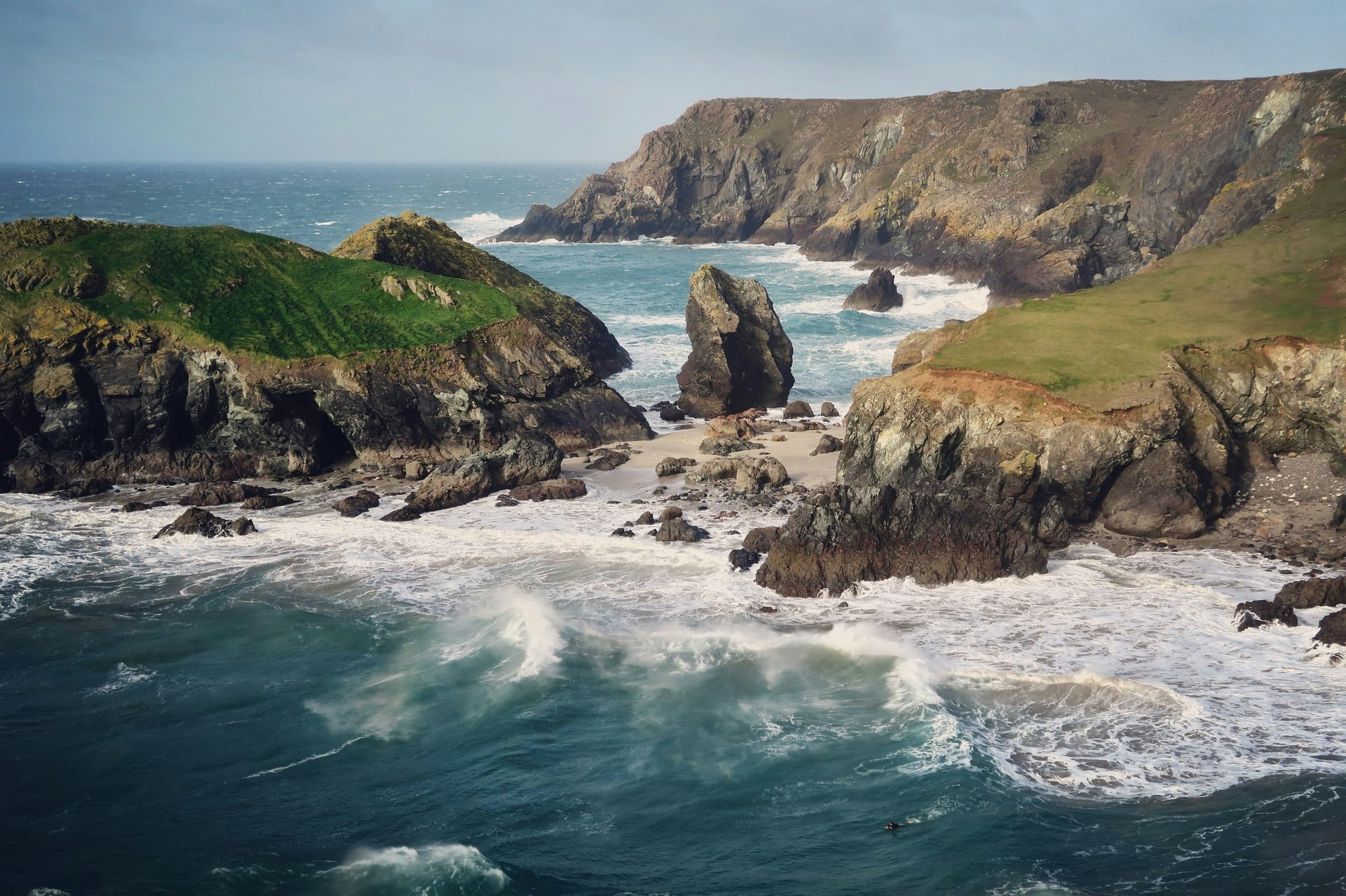
North Wales
North Wales is a stunning part of the world, home to the Snowdonia National Park. As well as world-class hiking, though, there exists a rich history here. While less than 10% of the population speak Welsh across the country, many people still speak it here as a first language, making it a fantastic place to go to experience a local culture unlike your own, but right on your doorstep.
The Lake District
If it’s serenity and nature you’re looking for, then the Lake District has it in spades. And with a fantastic food culture and amazing historical sites to explore, there are few places to visit that are better suited to just meandering around and taking in the world at your fingertips. Camp or stay at a lake-side cabin, the choice is yours.
Cornwall is a truly magical place. Relaxed and bathed in sunshine, the rolling green hills, expansive white beaches, and miles and miles of nature reserves, forest trails, and rocky coves to explore all make Cornwall a brilliant place to travel around. And that’s not even mentioning that it’s the seafood capital of the UK!
The Cotswolds are the epitome of a relaxed atmosphere. Sleepy little picture-book villages dot this beautiful, classically pastoral landscape. And with thousands of acres of pristine woodland filled with chirping birds and other rare wildlife, there’s no better place to get back to nature than here.
The Scottish Isles
If you really want to get off the beaten track and back to a wilder version of the world, then the Scottish Isles are definitely the place to go. Cold, windy, wet, and utterly serene, the Isles are home to few people, and plenty of space. You can walk all day and not see another soul. Sounds like paradise to us.
Best destinations in Europe
Europe is massive, and we could go on for hours listing our favourite slow-travel destinations, but we won’t. Instead, we’ve rounded up our top five places to go if you’re planning a European adventure this coming season. But, hopefully, they’ll just get you excited to get on the road and see what else is on offer!
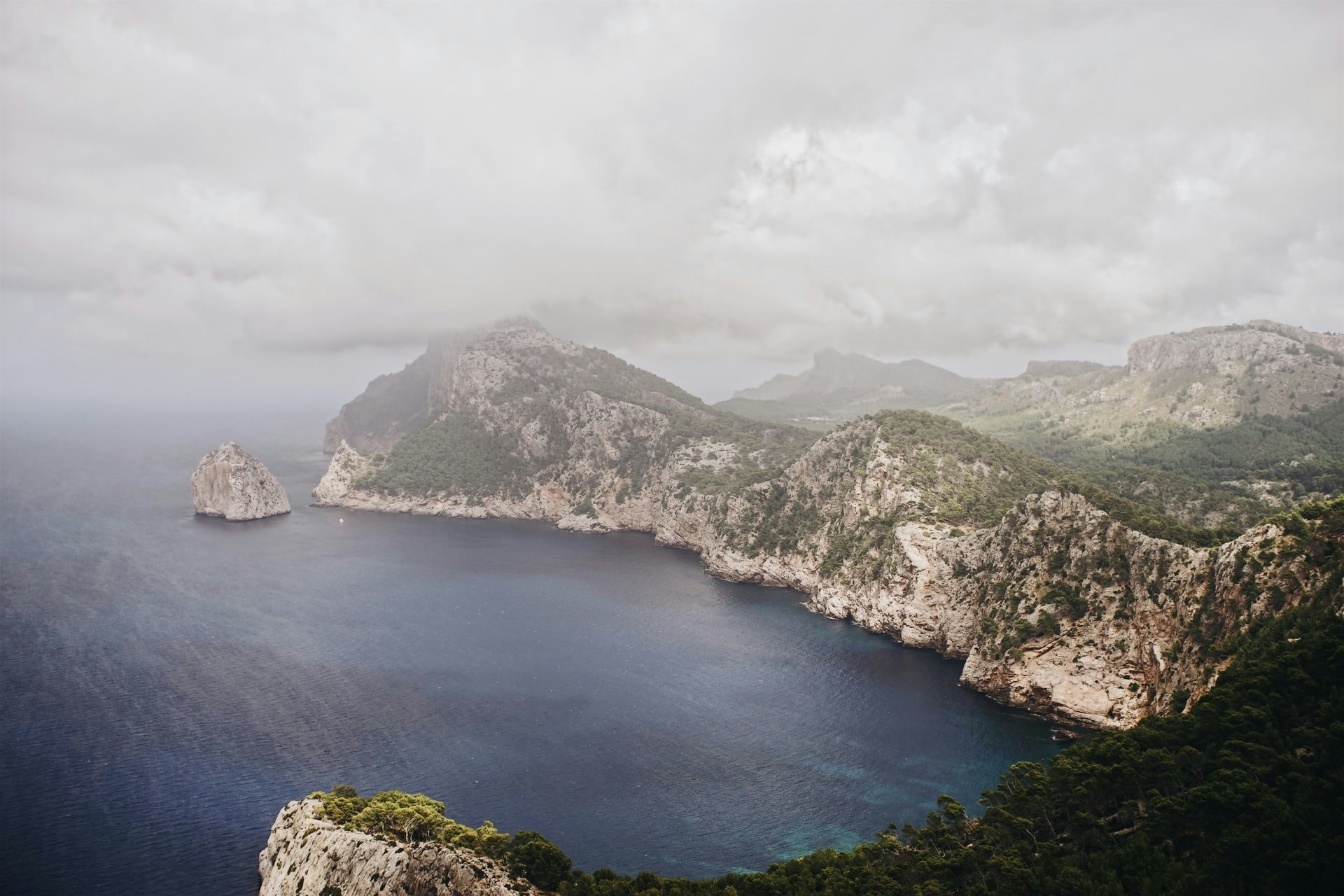
Bayern/Bavaria
Bayern/Bavaria is the German state that borders both Austria and Czechia. This historically important region was once known as the kingdom of Bohemia, and is filled with stunning castles and mountainside towns, as well as some of the most picturesque scenery you’ve ever seen. Come here at your own risk, you may never want to leave!
Menorca/Majorca
The Balearic Islands, specifically Menorca and Majorca are seafood capitals of the Mediterranean, and are much more relaxed than some of their partying cousins. Expect plenty of jagged cliffs and dramatic landscapes, crystal clear waters, and the friendliest people you’ve ever met. Truly a treat in every respect, whether you’re on foot or in the car, these islands are perfect for slow travel.
Northern Spain
Northern Spain is home to some fantastic natural landscapes, and is much less tourist-led than the southern part of the country. Everything feels more authentic and less developed here, and the food and wine speak for themselves. You can easily get lost here on one of the hundred winding mountain roads, and we thoroughly recommend doing so.
Greek Islands
The Greek Islands — and not the tourist ones — are some of the best places to visit if you want to slow travel. The white mountainside villages are sleepy and peaceful, and the food is world-class. The people are extremely kind and generous, too, so for us, there are few places better to meander around with an empty stomach than the Greek islands!
Sicily/Southern Italy
With thousands of years of history, one of the best food cultures in the world, and a true passion for their home, Southern Italy and Sicily, and its denizens, make this a great place to head for if you’re interested in slow travel. Eat and relax in a country built around those two principles! What could be better?
Best destinations in North America
If you’re across the Atlantic already or heading that way, you may think that fast-paced America isn’t suited to slow travel. And sure, you won’t find NYC or LA on this list, but there are some wonderful places to visit if slowing down is something you’re looking to do.
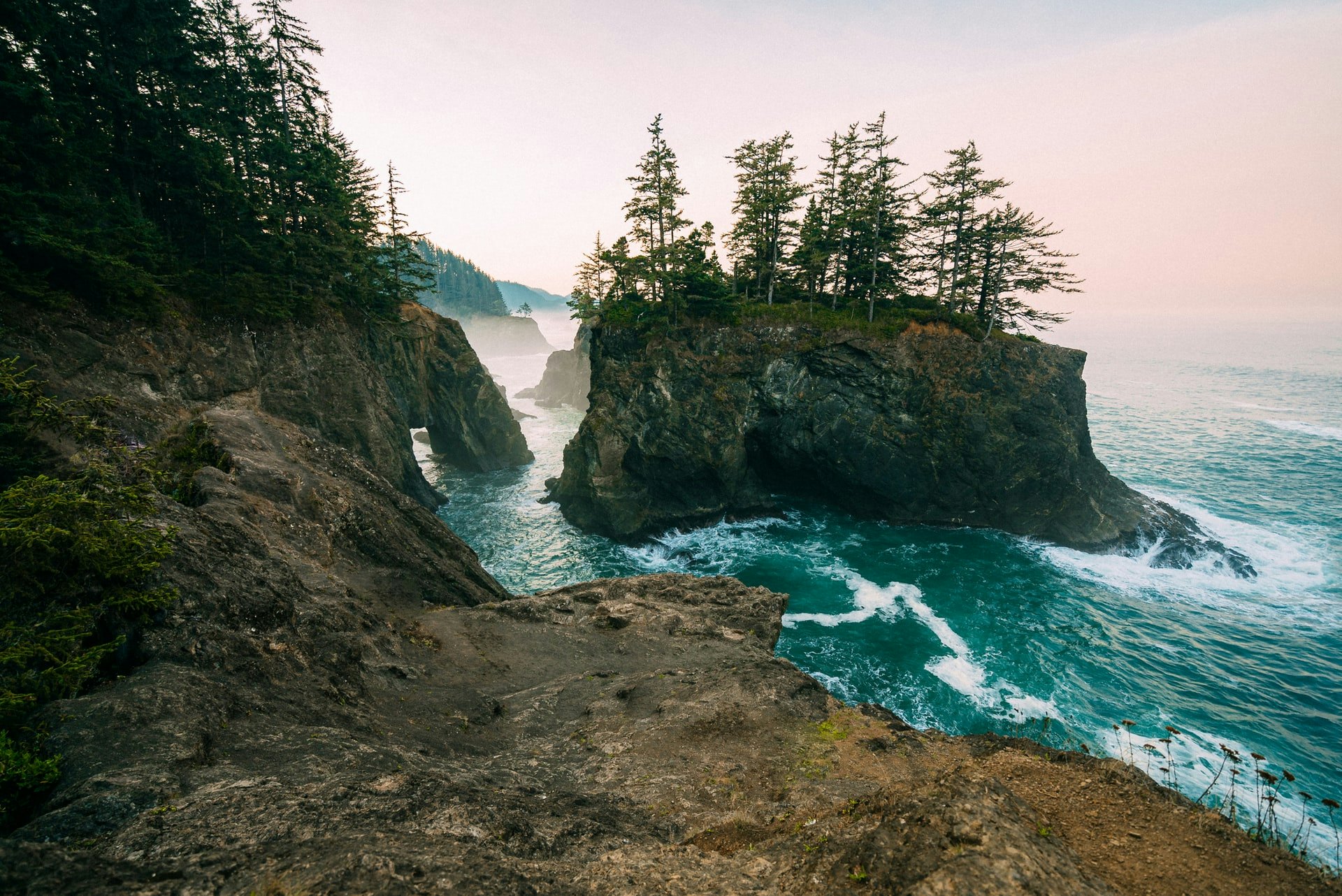
New England
New England in fall is possibly one of the most breathtaking experiences on earth. Wind your way along the roads of New England through a sea of yellow and red, drinking in the damp air, driving through miles of countryside. Explore on foot or by road, there’s so much to experience in this postcard-ready corner of the US.
They call it Big Sky Country for a reason. This expansive part of the US is easy to fall in love with and offers everything from towering, snow-capped mountains to endless prairies. Sit and take it all in, it’ll be sure to take your breath away. Things move a little slower here, and it’s easy to see why.
Southern Utah has some of the most spectacular rock formations and landscapes in the world, and taking the time to explore some of them is well worth doing. Utah may not top anyone’s holiday-destination list, but we really do recommend heading out this way and discovering some of its magic for yourself.
With California to the south, Oregon is often overlooked. But the sprawling boreal forests in the north of the Golden State continue here, with the landscape getting more rugged and wild. The coastline is perfect to explore, too. In fact, there’s no part of this state that isn’t perfect to just park up and drink in the tranquillity of nature.
You might think of New Orleans and Mardi Gras when you think of Louisiana, and sure you are right about that. But this state has a rich history and culture of its own, and getting to experience it is a very special experience. These people carry on tradition with pride in their hearts, and they’re always so happy to share it with anyone who’s interested in learning about it.
FAQ Section
What is the difference between slow travel and traditional travel?
Slow travel focuses on immersing yourself in the destination, engaging with local cultures, and having unique experiences. Traditional travel often involves rushing from one tourist hotspot to another, following pre-planned itineraries.
How can I start slow traveling?
Begin by choosing a destination that resonates with your interests and allow yourself ample time to enjoy the local culture and surroundings. Opt for local accommodations, explore local food, and engage with the community to create a more immersive experience.
Can I slow travel while having a limited vacation time?
Yes, even with limited time, you can embrace aspects of slow travel. It's all about prioritizing quality over quantity and adjusting your mindset to focus on enjoying the experiences, rather than rushing through them.
Wrapping up
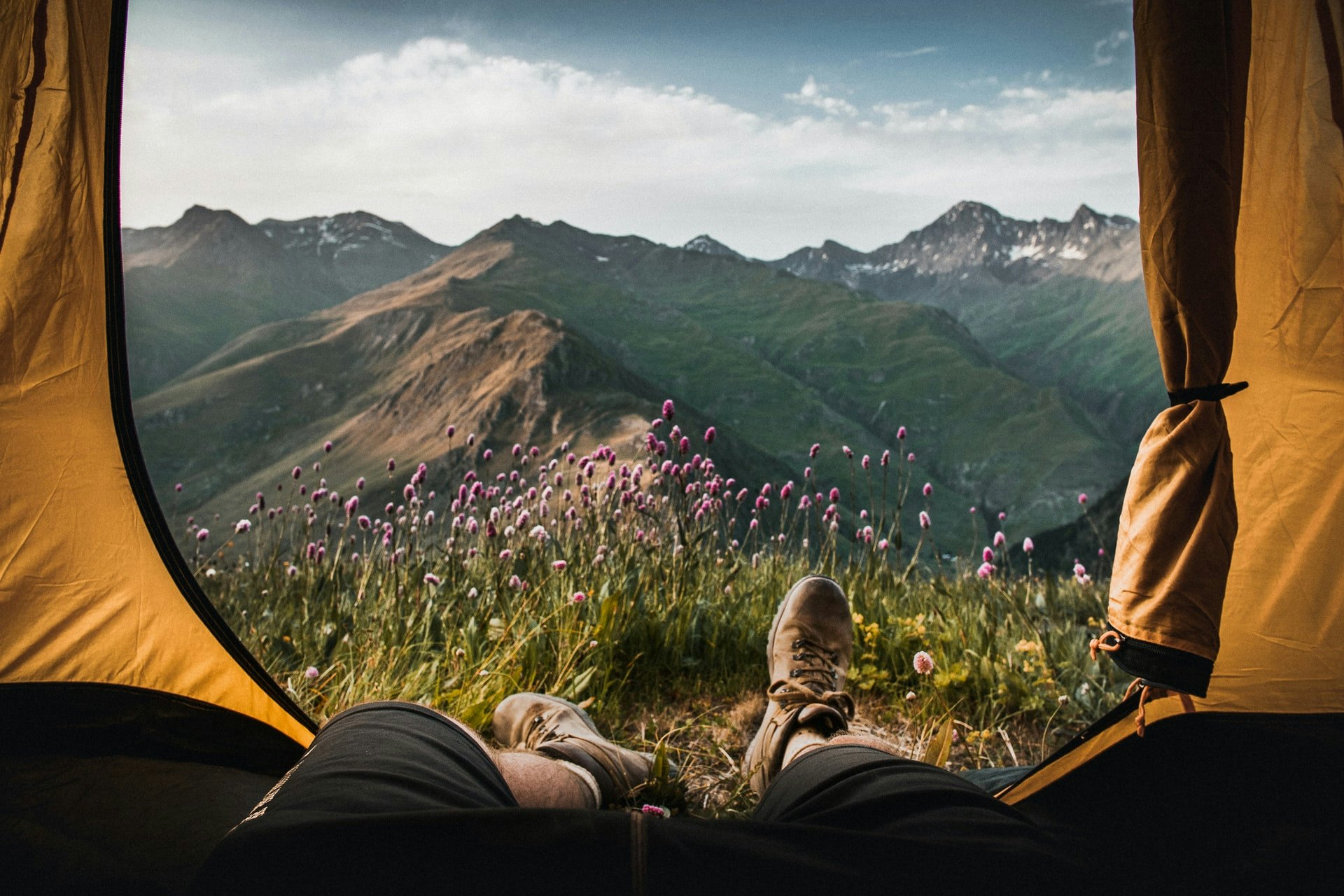
Remember this — slow travel is about connection and reflection. It’s about escaping the hustle, the bustle, the pressure, and the stress of modern, regimented life. So don’t think too much about it. Just pick somewhere you think is interesting, near or far, and go with an open mind. Don't spent too much time planning, don’t worry, just go. Speak to people, learn about their culture, eat their food, listen to their music, their stories, their history. Stop when you want to, stay as long as you want, and let your spirit of curiosity guide you. Slow travel is about you. So do what you want. Sometimes good things take time, so please, stop watching that damn clock, okay?
Related reading:
- Van life - a complete guide to life on the road
- Men’s outdoor clothing
- How to hike Kilimanjaro
- Women’s outdoor clothing
- The best Via Ferrata routes in Europe


IMAGES
VIDEO
COMMENTS
Slow travel means tamping down our own built-in, conditioned obsessions with time and allowing the world to move just a little slower so that we can actually notice it. If slow food is defined, at ...
Slow travel is a deliberate, unhurried approach to exploring destinations, emphasising meaningful experiences, and cultural immersion. Travelers stay longer in one place, support local economies, and seek sustainable, mindful journeys that promote a deeper connection with people and environments, in contrast to traditional, fast-paced tourism.
Slow travel is an approach to travel that emphasizes connection: to local people, cultures, food and music. It relies on the idea that a trip is meant to educate and have an emotional impact, in the present moment and for the future, while remaining sustainable for local communities and the environment. .
Myth #2: Slow travel means physically traveling as slowly as possible. It's about traveling at the right speed. Pacing instead of rushing. Finding the right balance between too fast and too slow. Myth #3: Slow travel is anti-technology. There's a big difference between digital minimalism and being opposed to all technology.
1. Plan to take some extra time. "Unfortunately, in today's society, it's hard to step away for an extended period of time," says Shieh, noting that travel itself is a luxury. "It's important to acknowledge that slow travel is a huge privilege," she says. "I feel so lucky to be able to experience the world at a slower, more ...
History of Slow Food and Slow Travel. Slow travel is actually an offshoot from the slow food movement which began in Piedmont, Italy in the 1980s as a backlash to fast food.. Local food producers rallied behind Italian journalist and activist Carlo Petrini to call more attention to the local chefs, farmers, producers, and artisans who were already growing the best local food, after a McDonalds ...
The definition of "Slow Travel" is: "Travelling as a means of connecting with the people and places that you meet, and taking time to enjoy the journey.". The opposite of slow travel is "fast travel" or "checklist travel," where the focus is on seeing as much as possible in a short time frame. At its heart, slow travel is the ...
Slow down your travels by taking yourself from place to place. Sustainable, convenient, and a great thing to do, biking is one activity you have to add to your slow travel checklist. Cycle your way across nature reserves, past the cities, or even follow along a local ice skating route. .
Not much research has been conducted yet in the area of slow tourism. While at the start of the slow travel movement, the main focus point of slow tourism was the mode of transportation, this shifted later on to a broader definition of slow tourism, taking into account two driving forces regarding travel, environmental sustainability and personal/social well-being (Moore 2012).
Australia is one of the most loved backpacking destinations worldwide. The country offers so much natural beauty, tons of adventure, and plenty of once-in-a-lifetime experiences. However, traveling around Australia and taking trips to the Great Barrier Reef, Whitsunday Islands, and Uluru can quickly become costly.
Slow travel is not bound by a rigid definition or specific durations for staying in a place. Broadly, it embraces the idea of setting our own pace and travelling comfortably. The essence lies in moving away from the stress of trying to cover all the highlights of a destination within a short timeframe, only to rush to the next spot.
The more complex definition describes slow travel as something that "emphasizes connection to local people, cultures, food, and music. It relies on the idea that a trip is meant to educate and have an emotional impact, while remaining sustainable for local communities and the environment.". According to the Journal of Travel Research ...
The Heart of Slow Travel At its core, slow travel is an invitation to become part of local life, weaving oneself into the fabric of a community, its culture, and its daily rhythms. It rejects the whirlwind trips that leave you exhausted, opting instead for a more profound connection. Engaging in local festivities can be a mesmerizing experience ...
Slow travel is all about taking the time to get to know areas, cities and towns in a way that you might miss out on by travelling in a more mainstream way. For example, rather than getting on a ...
Otherwise, the travel quote "It's about the journey, not the destination" wouldn't be such a hit! 7. You'll Leave a Traveler, Not a Tourist. Tourists often get a bad rap. Sadly, tourists are often negatively perceived because they come in hoards with a "me mentality" often leaving a place worse than when they found it.
What is Slow Travel? The online definition describes it as an approach to travel that emphasizes connection to local people, cultures, food and music. It relies on the idea that a trip is meant to educate and have an emotional impact, while remaining sustainable for local communities and the environment.
A Slow Travel Definition for the Uninitiated. What is slow travel exactly? Slow travel, also known as slow tourism, is a mindset and approach to travel that emphasizes quality over quantity. It's about spending more time in fewer places, allowing for a deeper connection and a more meaningful travel experience overall. This approach often ...
Over time, the core definition of the slow travel movement morphed to mean different things to the various communities of slow travelers. "One of the defining elements of slow travel is the opportunity to become part of local life and to connect to a place and its people," says advocacy site Slow Movement , an umbrella community for various ...
Slow tourism is based on the concept of speed. It involves travelling for a prolonged period of time at a slow pace, allowing the tourist a deep, authentic and cultural experience. An alternative tourism form, slow travel is typically associated with sustainable practices, taking into consideration the impacts of travel on the environment ...
For travel expert and author La Carmina, slow travel is a meditative approach to traveling that allows people to stop and smell the roses ― quite literally. "It's about being fully present in the moment and experiencing the sights, sounds and sensations around you without distraction ― letting the experience unfold at its own pace and ...
We all suspect travel can have long-lasting effects on our health by lowering down the stress levels, it has now been proven by several studies. 2. Empower local economy, wherever you travel. When you go slow, you go local! Flee from multinational chains and go discover small, local and family run businesses.
Slow tourism on Baikal Lake. Slow tourism is an alternative tourism choice in contrast to mass tourism. Slow tourism is a part of the sustainable tourism family, different from mainstream tourism and emphasizing the tourist's greater personal awareness. It is characterized by reducing mobility and by taking time to explore local history and culture, while supporting the environment.
Slow Travel is a new way of seeing the world, a philosophy of travelling. We'll give you all the best tips on what it is and how to do it. ... It's, by definition, taking the road less travelled. It's about embracing individual experience versus culture-led holidays and trends. Slow traveling is to soak in everything that both a place and ...